MARQ Alicante utiliza cookies propias y de terceros para mejorar su experiencia de navegación
y realizar tareas de analítica. Si continúa navegando, entendemos que acepta nuestra política de calidad y de cookies.
MARQ Alicante utiliza cookies propias y de terceros para mejorar su experiencia de navegación
y realizar tareas de analítica. Si continúa navegando, entendemos que acepta nuestra política de calidad y de cookies.
.jpg)
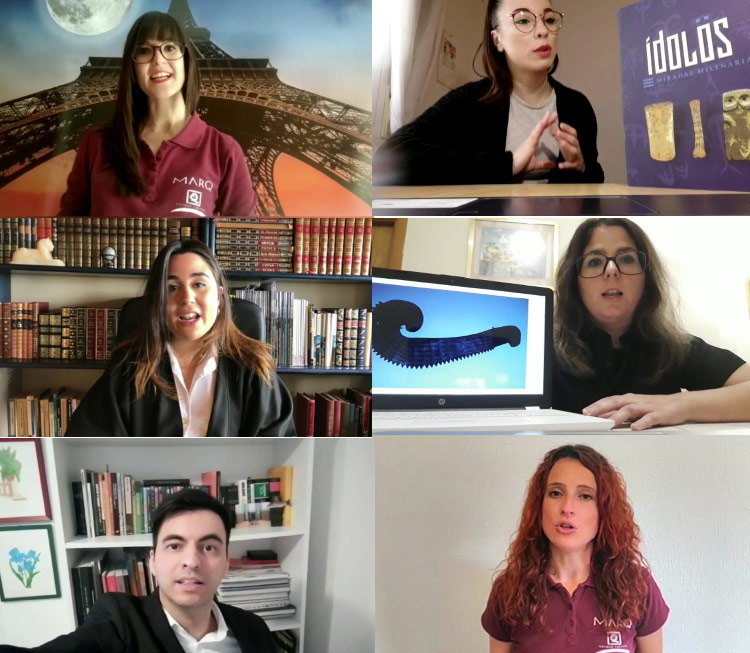
Click on each item and we will take you to the content
Follow the contents that we have created for you. Meet the people who work at the museum to convey to you the best of our history and the value of our heritage.
>> Access our video channel
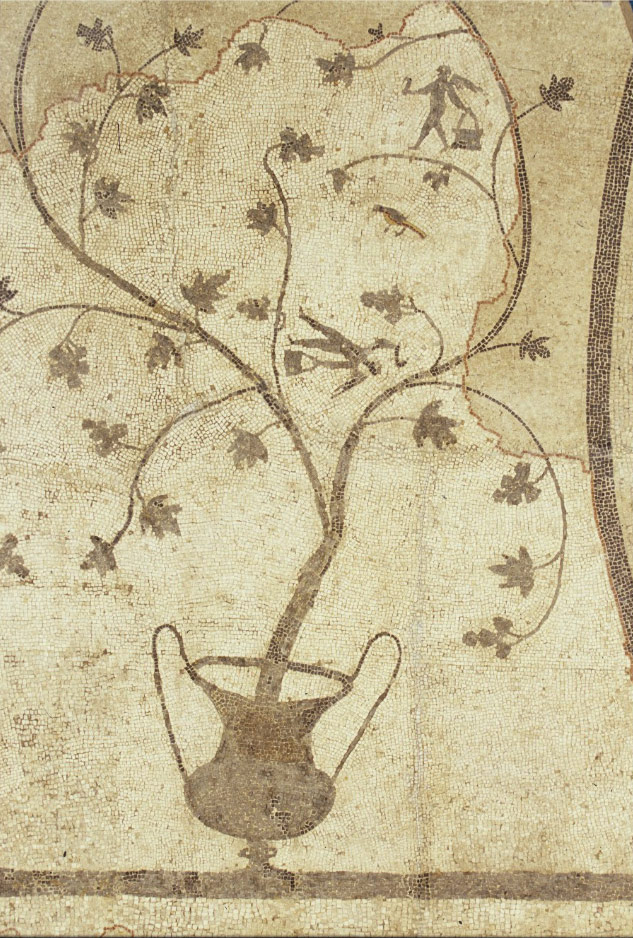
Hello everyone!
We continue with more articles in #StayathomewiththeMARQ, today we are going to talk about the mosaic found in the Roman villa of the Baños de la Reina in Calpe (Marina Alta). This piece is located in the final area of ??the Roman culture room of our permanent exhibition and is one of the most emblematic of the MARQ collection. This mosaic was found in the excavations led by M. Pellicer in the 1960s, which recovered a part of the mosaics already documented and illustrated by Cavanilles in the 18th century.
As for its formal characteristics, the mosaic from the town of Baños de la Reina in Calpe is made up of black and white tiles. On the white background, a drawing is developed consisting of a main scene of a vegetable nature, consisting of a vine that comes from a ceramic container. Among the branches of the vine, human figurines appear with wings carrying baskets in an attitude of picking the fruits. In the right area of ??the mosaic a bird is also represented that seems to fly towards one of the branches to perch on it. As for its chronology, by the technique used and parallels found in other Spanish-Roman towns, it dates from the 2nd - 3rd century AD. According to research, this mosaic, together with another one documented by Cavanilles in the 18th century, could be part of the same paving around a circular structure. We find similar mosaics in typology and structure in our lands, such as the one found in the old Villa Petraria (current Petrel) that was restored in the MARQ restoration laboratory, and was later exhibited in our museum during the temporary exhibition “Petrel, Archeology and Museum”.
These mosaics were found in habitat areas and other dependencies linked to a Roman industrial production villa located on the coast of the Marina Alta. This industrial residence was once of paramount importance in the development of economic and social life in these lands during the first centuries of our era.
Thanks to all the mosaics documented since the 18th century in the archaeological site of the Roman town of Baños de la Reina, we can conclude by saying that it is a residential town of the Roman aristocracy that brings together one of the most important and numerous ensembles of mosaics from the entire province of Alicante, surpassed only by the site of Colonia IuilaIlici Augusta (Elche). For this reason, it is an honor and a privilege to have in our permanent collection one of the most important and most historic mosaics in our lands.
Carlos Pérez, guide at MARQ
-------------------------volver al menú >>
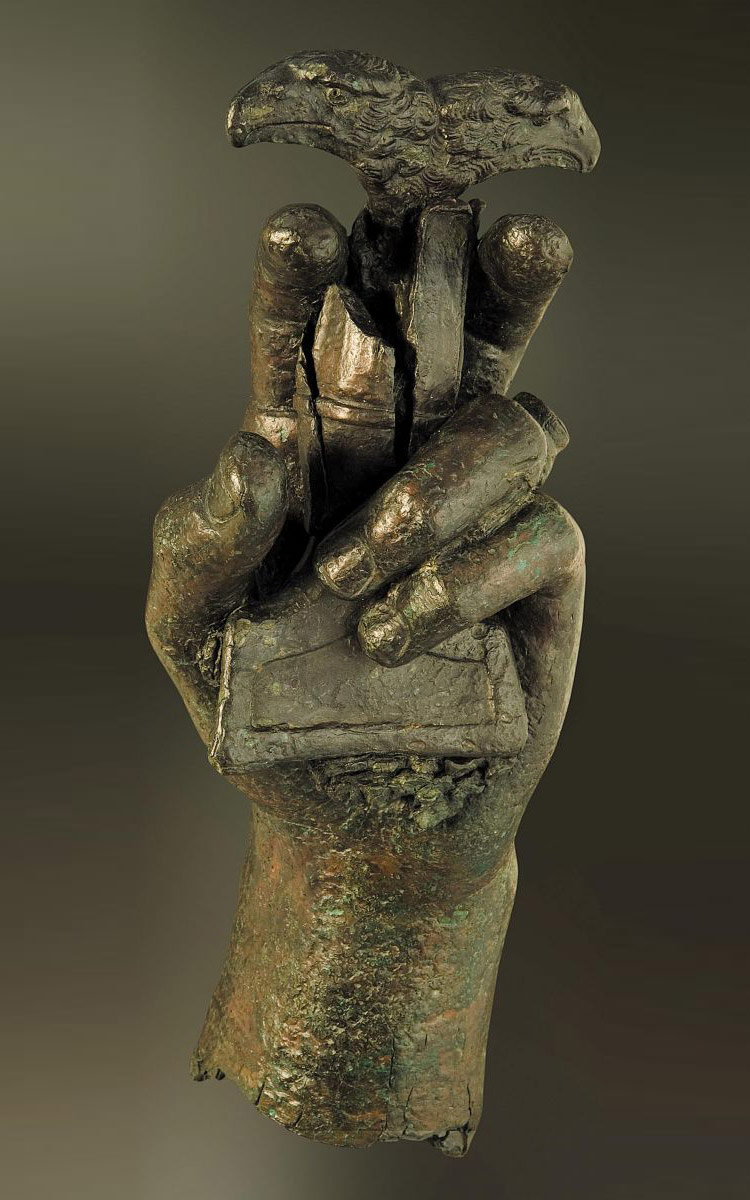
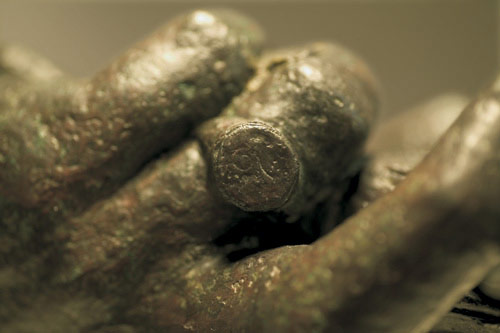
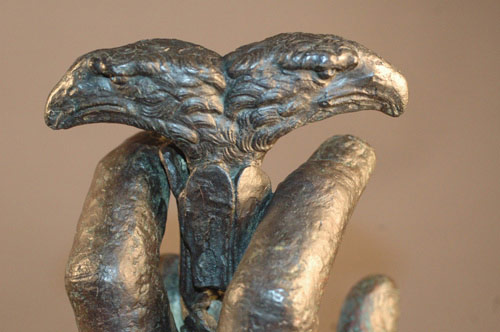
........
Hello everyone!
There are a lot of things that surprised people when they visited Lucentum, but the most surprising one is the bronze hand, found in 2005 and exhibited at the MARQ.
This bronze hand, is a left hand that hold a piece of sword, belongs to a statue that would be located in the forum.
Only the hand is 36cm long and weighs 6kg, therefore an estimate is made of what the entire statue could measure, and it was estimated that it would be around 2.20 or 2.30m in height.
This hand, that I mentioned before holds a sword hilt, but what makes it so special is that this handle has a double- headed eagle termination; so it has two eagle heads joined, and besides the hand has a ring with a symbol, so thanks to this we can see that a fairly important person was being represented in Lucentum.
The rest of sword, according to the simulation, is characterized as a parazonium. This means that it would be representing a king of baton or scepter, and it is a sword with an oval shape not pointed, therefore it wouldn´t serve to fight and therefore is not a gladius, -a kind of sword that serves to fight in battles)-.
Nowadays it is not known to who it belongs, although we have different hypotheses, but at the moment it is only represented at the high status of that person, power, etc.
It is said that most of statues fragments that are usually found in Roman cities are fragments to hands cuts off from the wrist, left as a kind of symbol, at the rest of the bronze of statues can be melted to create other types of utensils so there is a little chance that we can find the rest of statue.
All this history is the one that most surprises visitors, but What did you thing?
Has it caught your attention?
As you can see the Roman culture is quite interesting, hopefully soon you can come to see all the curiosities of Lucentum in first person.
Alexis Becerro, public attendant at Lucentum.
-------------------------Back to menu >>
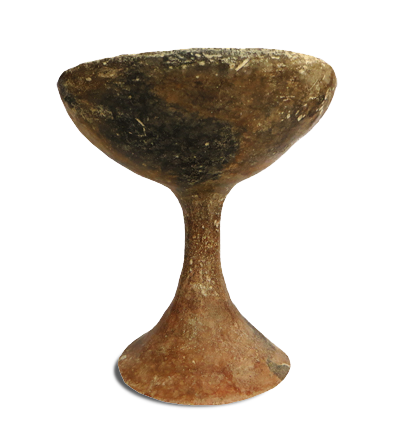
COURTESY THAT CONNECT: AN ARGARIC CUP
Hello everyone!
We continue with more articles in #StayathomewiththeMARQ. On this occasion I am going to tell you about an argaric cup that arrived at the MARQ due to a donation by Mrs. Margarita Ramón-Borja Berenguer in 2013.
The argaric culture was developed throughout the Bronze Age in the southeast peninsular area, the Bajo Vinalopó and Vega Baja regions being the main foci of this prehistoric culture in Alicante lands.
Among the most important Alicante sites linked to this society, we can highlight Cabezo Pardo in San Isidro, Tabayá in Aspe or Caramoro I in Elche. This culture has its northern limit in Alicante lands, specifically in the Illeta dels Banyets site (El Campello) where archaeological remains associated with this culture were also found, and some of the pieces found in this coastal site are exposed in the prehistoric room of the MARQ.
The cup that concerns us in this writing is over 3,500 years old. These cups have been of capital importance from the point of view of archaeological research, since ceramics in general has been one of the fundamental instruments with which to recognize this culture from the archaeological record and distinguish it from other contemporary societies within the peninsular scope. The argaric cups have been found mainly in funeral contexts, where they would be used mainly for the consumption of beverages within a complex ritual process that would be performed in honour of the deceased. Some of these cups were also used in domestic settings and could even be used as lamps, according to some researchers specialized in this culture from the Bronze Age.
In 2017, this piece and two others with similar characteristics were integrated a small exhibition located in the main hall of the museum that was called: “Take and drink. A cup for a thousand-year-old ritual ”, where three argaric cups were exhibited that were key to discovering the material culture of these Peninsular Bronze people and the complex ritual processes of a funeral nature that existed in this prehistoric society developed between 2200 and 1500 BC.
Carlos Pérez, guide at MARQ
....
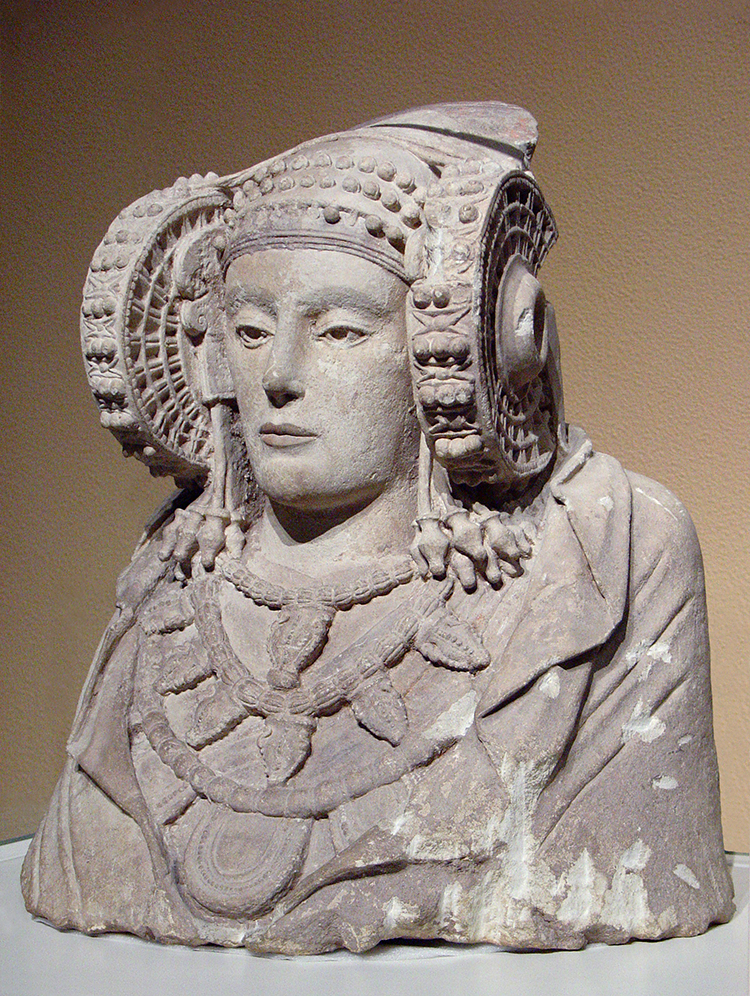
The most famous and well-known Iberian women are two: the Dama de Elche and the Dama the Baza, both prior to the 4th century BC and decorated with a multitude of ornaments.
The Dama de Elche represents the bust of a beautiful woman, and is considered the image of the Iberian world par excellence. It was found in 1897. Thanks to a study using microscope light, it was possible to know that the stone which was sculpted came from Pedrera de Ferriol (Elche). There are copies, but there are no photographs of the discovery.
It appears that the figure remained buried for many years. According to experts, in this tomb was built a little grave and, later, it was covered with sand (possibly from beach). This sculpture must be coloured, but due humidity, salinity and light has not kept the original appearance. On the other hand, in the dorsal part was found a little access that could have been used to deposit the offerings, hang up the piece or like an oracle.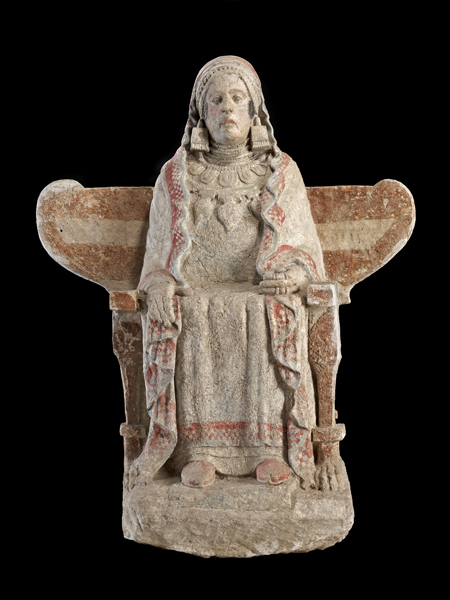
All these doubts were resolved in 1971, with the finding of the Dama de Baza. It is a statue of a woman sitting on a winged throne and representing the journey from the world of the living to that of the dead. We can observed that it does not have chest. In her left hand carries a dove, considered one of the symbols of divine power. But the peculiarity of this piece is that under the right arm were found some bones. Probably she was a funeral urn. Also, appeared a paraphernalia of arms, and this fact could indicates us that could be an Iberian queen.
After this discovery, the experts decided to analyse the sediments inside the pit of the Dama de Elche. Then, they found a pleasant surprise. Ashes were preserved over the time, because were deposited when were still hot. That is why the surface of the piece left it vitrified.
An interesting fact is that the ornaments and jewels did not appear next to her funeral paraphernalia. Probably, these objects passing down from generation to generation.
Finally, the Dama de Elche was interpreted as a funeral urn, but probably her beauty has been totally exaggerated.
What do you think about it?
#Istayathomewithmarq
Elena Noguera. Guide at the archaeological site of La Illeta dels Banyets
-------------------------volver al menú >>
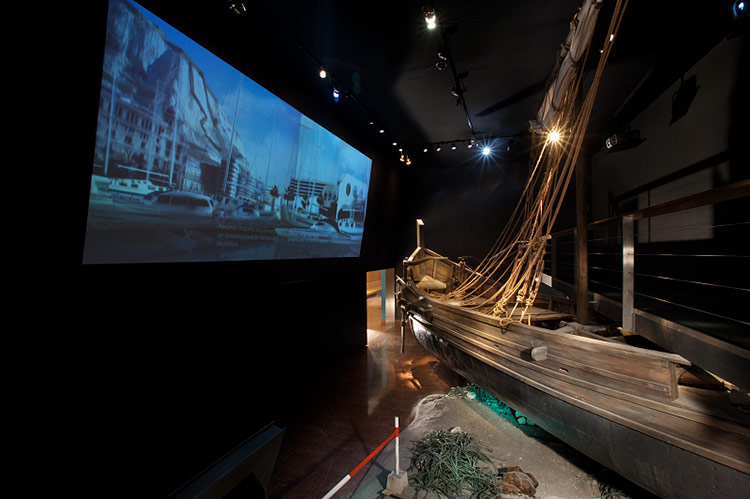
Hello everybody!
Today in #stayathomewithMARQ I would like to talk about one of the theme showrooms belonging to the most impressive permanent exhibition in the museum.
It is life-size model of a Roman merchant ship which is currently sunk near the Portus Ilicitanus or Port of Ilici, in Santa Pola (Alicante).
First of all, I would like to highlight the important role of Underwater Archaeology plays, despite since despite the huge obstacle of moving the original vessel to the surface due to its damage; thanks to the hard work of all those who carried out this project in the museum, an specialized and qualified team was able to make a wonderful exemplary of the ship available for everyone.
As I mentioned before, this vessel is meant for trade, crewed by two people (one could rest while the other led the rudder) and whose main products were oil and wine, keeping in amphorae, elongated ceramic containers.
All this interesting story is embodied in this theme showroom, a structure carefully designed in detail so that the public knows as realistic as possible the ship's crew situation in Roman times.
Seeing visitor’s reaction and children enjoyment makes me feel happy in my job and proud of the effort to make all this possible.
I encourage you to keep an eye on our social networks because the posts we will upload soon... you can't miss it!
Best regards!
Nerea Cuba. Public Attendant at MARQ
-------------------------Back to menu >>
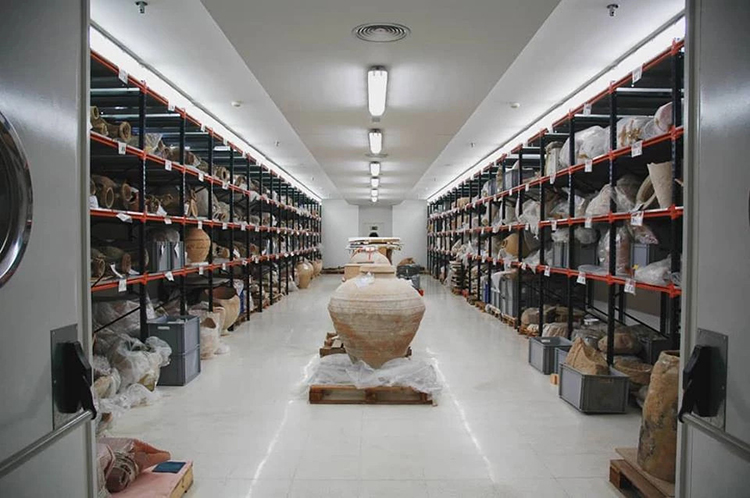
Hello everyone!
Today I will take a tour of the basements of the MARQ, a key work and research area for the proper functioning of the museum. You could say that thanks to the tasks developed by our technicians in this underground area the exhibition part “visible” to the public works perfectly. Currently the museum offers a guided tour of the basements once a week, on this tour you will visit five outbuildings within this immense work area located on the ground floor of the building.
The first room to visit is the Income and Departures area, an office area where management work is carried out related to the reception and exit of pieces from our immense collection archaeological objects, through these dependencies pass all the pieces that MARQ accumulates in it’s funds, you could say it’s the backbone of our entire museum collection. These offices manage and guard the volumes, of the different excavations carried out by the MARQ team of archaeologists, the forms of movements of pieces with an internal character, volumes with cataloged and inventiored pieces from all our permanent collection and all documentation regarding temperature control and humidity from the museum rooms. At the end of this area is a desalination bath to remove salt from the pieces found in underwater surveys such as amphorae found in wrecks resting at the bottom of the Mediterranean Sea.
The next visitable room on the guided tour is the Amphorary, a warehouse that has about 900 pieces, most of them are amphorae from different cultures (mainly Roman) that were ceded or donated by ancient collectors to the Archaeological Museum mainly during the 20the century.
All these pieces are cataloged and inventiored, so they all have their label with the corresponding signature assigned by the museum technicians. In addition, to the amphoras, we can find pieces with incalculable archaeological value, such as the two grain storage silos found in the cabins of the Neolithic phase of the Illeta dels Banyets (El Campello), a mill from Iberian times that dates back to 5th-4th century BC, remains of a Punic cistern found in the Tossal De Manises (Lucentum) or a wonderful Iberian vath with impressive Elche-Archena style decoration.
The third room to visit on this tour is the Collections Cabinet, also known as a visiting warehouse. In this room, scientific meetings, practical classes of the Master of Archeology of the University of Alicante are held and researchers who request access to the museum’s basements, can access these units to work and investigate any of the pieces from our collections. Apart from the office area of this room, we have an incredible exhibition with nearly 9,000 pieces divided into stages that goes from Prehistoric times to the Contemporary Age. This “hidden” exhibition is a real delight as it has incredible pieces from the main archaeological sites in the Province of Alicante. The fourth unit to visit is the Restoration Laboratory, a very important room for the restoration of pieces from our collection that for some reason may have undergone a process of deterioration. The laboratory has three professionals and from time to time the MARQ offers paid scholarships for qualified personnel. In these facilities, thanks to the training of personnel and the facilities of this laboratory, all kinds of pieces can be restored, regardless of the material and the type of object. At the back of the laboratory there is a small photographic studio and an office area with all the documentation regarding the pieces restored so far.
The last area to be visited within the tour is one of the three compact warehouses in the basements. These rooms are spacious and have several rows of sliding cabinets where thousands of pieces stored in boxes are stored, arranged by sites and excavation campaigns. All the pieces found in the compact stores have previously gone through Income and Exits and have been inventoried and cataloged, so all the information regarding these pieces is inserted in the museum’s database.
In conclusion, the tour of the MARQ basements is a unique opportunity to experience first-hand the work that takes place down there, a task that serves to make the entire exhibition and visitable part of our museum work perfectly, so I invite you to that when all this happens, you know this hidden gem of our wonderful museum!
Carlos Pérez, guide at MARQ.
-------------------------volver al menú >>
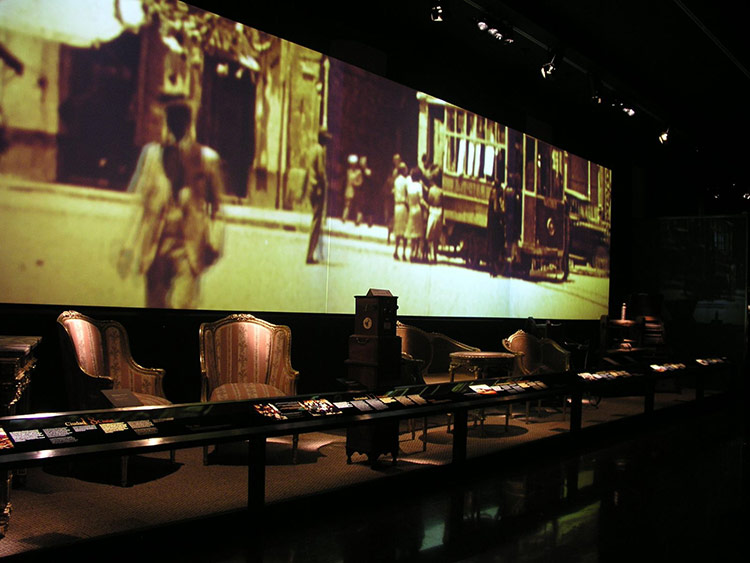
....
Railroad’s arrival to Alicante
Hello everybody!
In today's post in #staywithmarq, I would like to talk about the arrival of the railroad in Alicante, and the improvements in the city.
In the early nineteenth century, travellers complained due to bad conditions roads in the province of Alicante despite having one of the best harbours in Spain. So, it is perhaps paradoxical that no more investment had been made in providing better communications if there was a province rich in many products.
There were at least four access roads to our city: through the coastal area, in the inner part, in the south by the region of Vega Baja and, finally, the most important, the one that ran along the region of Vinalopó, which link to ways to Valencia and Madrid.
One of the first proposals will be "La Compañía de María Cristina" in 1844, with the aim of introducing the railway in Alicante, but funding has not been provided to carry it out.
In 1851, after the opening of the line linking Madrid with Aranjuez, the concession which allowed the trip from Aranjuez to Alicante, although it will not be made possible, postponing it the following year.
In 1852, the Almansa line to Alicante was granted thanks to José Viudes, Marquis of Rioflorido and the Railway Company from Almansa to Alicante. This company was made up by bourgeoisie from Alicante and local institutions, as well as some Catalan investors.
But, unfortunately, when the statutes and regulations of the Company had already been obtained, it will suffer a financial crisis which will lead to the transfer all rights to José de Salamanca, its main shareholder, provide that the work was completed in the specified time and reimburse the money invested to the other business partners.
It was not until 1856, when the Railway Company from Madrid to Zaragoza and Alicante (MZA) carried out the railway project to our city. The first trip will cover the journey from Almansa to Alicante, which will last seventeen hours.
Even so, the official opening will be on May 25th in 1858 when Queen Elizabeth II came to Alicante for a royal event.
The city was prepared for this inauguration. Therefore, the Provincial Council appointed a commission to travel to France to order all those ornamental objects and treatments for the Queen’s reception. Moreover, some city areas were covered by decorations for the royal family arrival.
To sum up, the railway in Alicante will mean the opening of the communication routes to other provinces and capital of the country, as well as the expansion of the city and the creation of monumental buildings.
Lorena Gomis, Guide at MARQ
....
WOMEN’S FASHION IN XIX CENTURY
Hello everyone!
In today's post in #StayathomewitheMARQ, I would like to talk to you about the change in women's clothing from the 19th century.
The evolution of fashion during the 19th century was of great importance, in which we must highlight the variety of typologies and styles that were developed, as well as the social and stylistic background that can be intuited through fashion. In this sense, we should speak, perhaps, of four periods in the feminine textile world.
To explain the first of the periods we must mention political events that took place in the early nineteenth century. During this period we attended the War of Independence against France, led by Napoleon Bonaparte.
In this area, the way of dressing of the women of high society, specifically of the bourgeoisie, will change radically, due to these political ideas and French liberties.
The first of the dresses to be unveiled will be the Imperio dress, thanks to Josefina Bonaparte, Napoleon's wife. This dress will be characterized by being one-piece, inspired by Neoclassicism, devoid of the hollower that gave volume to the skirt and without the use of a bodice, typical of previous centuries.
This type of dress was inspired by Classical Antiquity due to the amount of folds and shape that the fabric made on the body. In addition, this type of clothing was adorned with ribbons, chevrons, silk ties and jewelry. In the case of the nobility, women also used to wear decorations.
The hairstyle also kept that classicism based on curls on the forehead and near the ears, and tied in a knot or bun at the nape; They also used to be adorned with ribbons or headbands and feathers in ceremonial costumes. Starting in 1820, he will change the way of gathering, using the style of split hair and loops over the ears, in addition to using a hat or bonnet to go outside.
During the reign of Fernando VII and María Cristina, the dress again has a certain cut reminiscent of the eighteenth century, in which the waist is marked, the sleeves are bulging, and the corset, numerous petticoats and hoop skirts are again used , elements clearly reflected by the painters of the time. Normally, the dresses were accompanied by certain shawls or scarves made of very fine and delicate fabrics.
As for the headdresses, they used to wear hats with ribbons that were tied under the chin, but the most frequent was the so-called hood, which, when tied in the same way as the ribbons, acquired a tile shape.
In the Spanish case, the use of mantilla and comb was also very important, absent in other countries, but which will acquire great relevance at specific times such as Easter or bullfighting.
The next step in the fashion world will be linked to another aspect, the theater. During this century, there was an improvement in the performing arts with the creation of auditoriums and theaters with bourgeois and popular classes, who were looking for a form of entertainment and evasion in the theater. It is in this area, and favorable for the high social classes, where a change is observed in women's clothing: the society suit.
This model was essential to attend any social event, such as theater, opera or even dances, in which women showed their best clothes in order to guarantee a good husband, or, if they were already married, the purpose fell on the husband, whose intention was to flaunt his wife.
The corset will remain until the middle of the 20th century, but the dress will consist of two pieces, on the one hand, the bodice itself and on the other the skirt itself, made up of metal structures to give it volume, visually creating an image of women locked up In a cage, without forgetting, the idea that, from the medical point of view, both the corset and the hoop skirts, provided deformities and health problems to the women of the time.
One of the painters that will notably reflect the Elizabethan period dresses will be Federico de Madrazo, on his canvases he will immortalize in the heraldic embroidered dresses with fleur-de-lis, castles and lions motifs.
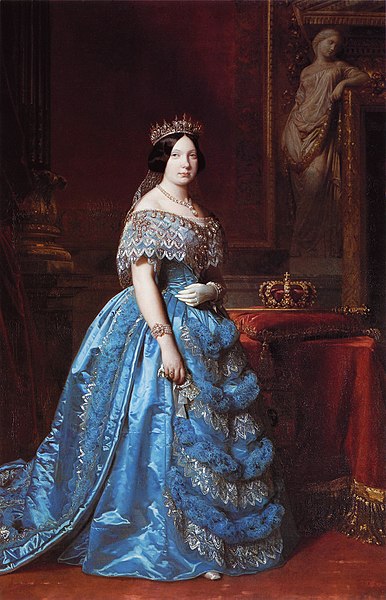
Lorena Gomis, guide at MARQ
....
FAN AS A HISTORICAL REFERENCE POINT(1).png)
Hello friends!
The analysis of everyday objects provides us with valuable information that helps us to better understand the way society is moving forward and changing; instruments and objects from past times that, on occasion, have reached our days. It is, for example, the case of the fan, a beautiful piece that reveals some of the most outstanding aspects of the elite, during the modern and contemporary age.
A legend places the origin or invention of the fan in the Far East. During the festival of the torches, the beautiful Kau-Si, daughter of a rich Mandarin, was tremendously suffocated by the intense heat of the torch she was carrying. So, very boldly, she decided to take off the mask that preserved her intimacy and, with a nervous gesture, she waved it before her nose, forming a curtain that, besides making her face invisible to the curious - because her vision was forbidden to men - also refreshed the air around her. The bold but intelligent gesture of the beautiful young woman was imitated by the rest of the ladies who accompanied her.
In Europe it has been known since the 16th century, when it was brought from the East by Portuguese sailors and merchants, becoming an indispensable accessory to female attire from the 18th century. At first, the fan was a rare and quite expensive object, since it was usually made with high quality materials, such as ivory or hawksbill -the shell of a type of sea turtle-, becoming an exclusive privilege of high society. At that time, their use was common to both sexes; the male models tended to lack landscape -the part of the fabric fan-, that is, they only consisted of rods and were small, pocket-sized specimens. In contrast, women's models were much larger and more elaborate, with a profusely decorated landscape.
In addition, you could choose from a wide variety and diversity of fans, as each model was perfectly adapted to one or another moment in life. There were models for both married and single women, others to go for a walk or to attend a funeral, there were also wedding models... Even small models were designed to be worn by upper-class children on certain important occasions.
In the 18th century, a complicated code or "fan language" emerged, giving a rather curious use to this type of object. In those days, it was frowned upon for a woman to go to a dance alone, so they always had to be accompanied by their mother or an escort, so that these candles could be seen.
There were single men at the dance but they were not seen to be talking and so this code emerged which made the fan an important love ally, used to communicate with her suitors and go unnoticed. At the end of the 18th century, manuals were even written instructing women in this code or "language of the fan": to fan oneself quickly looking a man in the eye meant that one loved him madly, but if it was done slowly its meaning was the opposite; if the fan was held with both hands it meant "you'd better forget me" if it was placed on the open chest it meant that one loved him; if one covered one's face with the open fan "follow me when I leave"...
In the Modern and Contemporary Age Room we can find several incredible examples but, personally, I consider the most exceptional piece to be the "fan of the applied faces" or the "thousand faces", a typology that was imported from the East. Specifically, the piece comes from the
Philippines, has a chronology of the mid-nineteenth century and receives this name because they used to represent scenes of everyday life or mundane in which a multitude of characters appeared, hence the appellation of "a thousand faces. As for its characteristics, the exquisite application of mother-of-pearl on the faces of the characters and of silk on their dresses, the great quality of the drawings and of the...
Therefore, the fan becomes a very valuable testimony for archaeology and history, since it shows us certain uses and customs of aristocrats and bourgeoisie, through which we can get a little closer and better understand the processes of change and transformation that society experienced throughout the modern and contemporary age.
I hope you found the article interesting.
Greetings.
Mª Paz Gadea, guide at MARQ.
....
THE ORIGIN OF TEXTILE INDUSTRY IN ALCOY
Hello everyone!
In today's post in #StayathomewitheMARQ, I would like to talk to you about the industrialization process in the Valencian Community, more specifically, in Alcoy.
Industrialization, broadly speaking, comes to be a process of constant change and continuous growth, in which techniques through machines, theoretical discoveries, capitals and social transformations intervene, accompanied by a renewal of agriculture, that allows the displacement of a part of the peasant masses to the cities. This takes place in the second half of the 18th century in England, which will later spread to other European nations.
But at what point does our entry into the industrial world take place? Spain will undergo a long period of changes, which extends from the beginning of the 18th century to the first decades of the 19th century. To this question we must add that Spanish economic growth will be very low due to its agrarian nature, subject to the commercialization of its goods and its dependence on the American colonies.
So it will be a very slow process.
The national economy lacked capital shortages to invest and energy sources. However, the construction of railways was relaunched, albeit belatedly. Naval transport incorporated the technological advances of steam and companies were founded. Despite the fact that mining passes almost entirely into the hands of foreign capital, the textile, chemical and electrical industries are boosted. In any case, although late, the industrial drive paid off with a general economic boom in which the foundations of a modern industry were laid.
As for the subject at hand, Alcoy had optimal factors, for a long time, for an industrial process to take place, being the bank of the Molinar river one of the most favorable areas for it.
Since the 14th century, the use of water for manufacturing activities has been verified, being in 1310 when mills destined for fulling mills (textile machines to transform fabrics) began to be built, and in later centuries, more than 50 flour mills. But, the great transformation will take place in the second half of the 18th century when the fulling mills are transformed into paper mills, which will generate the production of 60% of the Kingdom of Valencia.
During this century it will also become a large textile company, this is evident from 1723 as a consequence of the real policies of Nueva Planta when the Cloth Factory, a trade union association, became the Royal Cloth Factory when manufacturing fabrics for the Royal Army military uniforms.
The factors that favor this industrial process are: pre-industrial conditions in farm management, the human factor, innovation and quality of artisan or manufacturing production; and finally, the availability of capital to invest in the industry, as well as the transformation of flour mills into textile and paper plants. As a curious fact, it will be in Alcoy where dyes were obtained during the 15th century, which until now only Florentines controlled, or obtaining high quality paper.
To these factors we can add one more piece of information, on a technological level, the means of communication. These, although they were already relatively good, improved with the arrival of the railway and the construction of national roads, linking Alcoy with other more important towns and cities, such as Valencia.
In later periods, the international situation of both war periods (First and Second World War) and the isolationism of Spain favored that the industry was not affected, it will be later, from 1960 when the textile industry declined, at which time, new textile materials are introduced that make the alcoyan machines not ready, in addition to not seeing any hint of innovation in the El Molinar industry.
The Alcoy's textile crisis worsened during the 80's and despite the little help the sector received, there was an adaptation of the new industrial model, allowing this city to continue being an important textile nucleus in the Valencian Community.
Lorena Gomis, guide at MARQ
....
AGRICULTURE AND INDUSTRY IN CONTEMPORANY AGE
Hello, everyone.
Today, in #stayhometowithmarq, I would like to talk to you about some relevant aspects related to agriculture and industry during the modern and contemporary age.
Until well into the 19th century, the economy of practically all the territories of the province of Alicante was based mainly on traditional subsistence agriculture.
But, little by little and throughout that century and the next, modernization burst in and made agriculture experience a drastic improvement, changes that radically transformed the appearance of the landscape of the orchards. The invention of the machines not only improved and facilitated the performance of many tasks of an agricultural nature, but also in other areas, such as textiles or shoemaking. But, on the other hand, industrialization also generated a strong social movement, the ludism, which was based on the opposition to the introduction of modern machinery in the productive process, since the work that many people were doing became
carried out by those machines, remaining, for that reason, without any means of subsistence.
Alicante took a long time to start its industrialization in comparison with other countries, such as England or France, but little by little an industry was born and flourished in different regions and territories of Alicante, where the textile and paper industry in the regions of l'Alcoià, the shoe industry in the valley of Vinalopó, the toy industry in Ibi, Dénia and Onil, the chocolate industry in Villajoyosa or the nougat factory in Jijona stand out.
NOUGAT
In the case of nougat, this began to be produced in the sixteenth century, in Jijona. The custom of eating nougat at Christmas was already widespread in the 17th century, at least among the wealthy classes. The nougat industry was born in the 19th century and it was at the beginning of the 20th century when it began to export to the Spanish-American markets. In the past, the marketing and sale of the product was carried out by the manufacturer himself; once the product was processed, it had to be transported to the points of sale by means of wooden crates on the backs of mules. Initially, it used to go to towns near Jijona on very important dates, such as fairs and pilgrimages, days before Christmas, local festivities... and, finally, it exhibited them in mobile sales points known as "paraetes".
ICE
Another curious issue is that related to the production of ice. In the past, mountain snow was held in high esteem, as it was usually used for multiple applications, such as lowering fever or inflammations, cutting haemorrhages, preserving food, making ice cream... Snow consumption became popular in Spain in the 16th century, but it reached its peak in the 18th and 19th centuries. Before the appearance of ice factories and refrigerators, artificial refrigerators were used, wells dug into the ground with retaining walls and even a roof, which had openings for the introduction of snow.
Although the "neveros" were already known in Roman times, their great development took place between the 16th and 19th centuries. Work on the fridges began in the spring, after the last snowfall. First, the snow was cut with sticks and transported to the wells, where it was pressed into ice. Already in summer, it was cut into blocks that were transported on the backs of draught beasts (horses or donkeys) during the night, to prevent it from melting, to the nearest ports or towns where they were marketed. The storage of snow gave rise to the trade of the "gelaor", who distributed ice in summer to make soft drinks and preserve meat, fish, fruit... Finally, about a hundred years ago, with the revolution in the ice industry that was involving the artificial production of cold, the snow deposits fell into disuse and were abandoned.
In Alicante's territory, the Cava Gran d'Agres stands out, a protected cultural asset, catalogued as a Property of Local Relevance by the Generalitat Valenciana, which is located on a slope of the peaks of the Sierra de Mariola and was recently consolidated, restored and museumised, with the aim of making it known and appreciated. It is one of the largest and best preserved fridges in the Aitana, Carrasqueta and Mariola mountains. If you want to know more about this curious place you can watch the video below.
CAVA DE AGRES from MARQ Arqueológico de Alicante on Vimeo.
Greetings.
Maripaz Gadea. Guide at Marq
....
THE ANCIENT HOSPITAL OF SAN JUAN DE DIOS
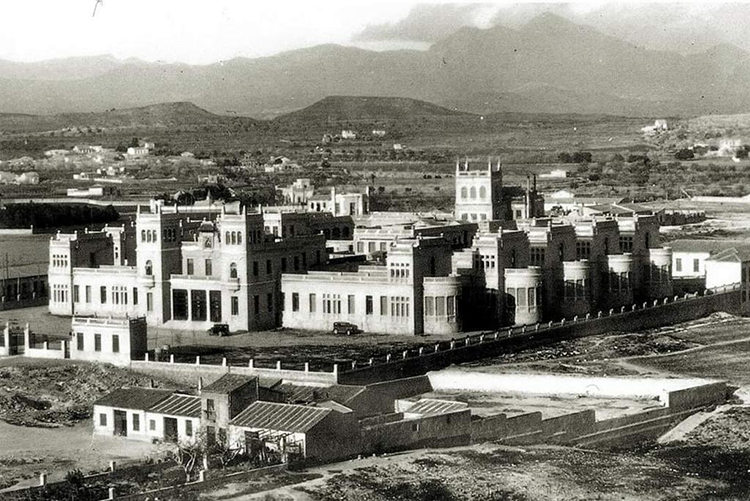
Hello!
Today in #stayathomewiththeMARQ I’m going to write a post about the history of the building where MARQ is currently located, the old San Juan de Dios
Provincial Hospital in Alicante, architect Juan Vidal Ramos, who was the architect of much of Alicante’s 20the century architectural heritage.
The history of the hospital institution of “San Juan de Dios” goes back to the 14th century, after passing through several locations throughout the centuries. At the beginning of the 20th century, the Provincial Council of Alicante approved a project for the construction of a new hospital centre as the city had grown at the end of the 19th century and a larger and more modern building and facilities were required for the care of the sick. The land chosen for the construction of the new hospital was located in the Plá del Bon Repós district. The works began in the 1920s and the architect Juan Vidal Ramos was in charge for designing the building. He was the author of other important buildings in the city of Alicante such as Casa Carbonell or the very same Palacio de la Diputacion Provincial of Alicante. Although the hospital had been partially functioning since 1930, it was definitively inaugurated the following year. During the years of the Civil War (1936-1939), a large part of the centre was transformed into a Military Hospital. The hospital functioned as such until 1991, when the San Juan de Dios Hospital closed its doors due to progressive appearance of new hospitals, outpatient clinics and clinics areas of the city.
It was in the late 1990s when an exhibition project was initiated by the Alicante Provincial Council to house the collection of the Archaeological Museum, which was then located on the ground floor of the Alicante Provincial Council Palace in the old Hospital building in the Plá district. This project saw the light of day in the year 2000, when the renovated Archaeological Museum of Alicante was definitively opened in the old hospital building, thus becoming one of the first museums of the 21st century to commit to the renovation of the traditional exhibition system, incorporating a wide variety of educational and audiovisual resources to make the rich archaeological heritage of our lands available to everyone.
On an architecture level, the building has the classic hospital structure on the first half of the last century. Following a scheme of rigid axial symmetry, the buildings floor plan is structured around a main axis with eight pavilions (four on each side) and two heads located at the ends of the main reason axis. From the ornamental point of view, a classical language was used, incorporating balustrades, arches of diverse origin, staircases and pinnacles, being one of the most beautiful and emblematic buildings of the city of Alicante.
The museum is currently divided into two exhibitions, both located on the ground floor of the building. The permanent collection is located in the pavilions on the right side, where women were formerly hospitalized, and the temporary exhibition area of the left side, an area reserved for men at the time of the hospital. In the central axis we find the thematic rooms destined to the archaeological method, where the operating rooms used to bel. At the end of the building, we find the museum library (former hospital chapel), one of the most beautiful and spectacular areas of this building full of history and tradition for the city of Alicante.
Carlos Pérez, guide at MARQ.
...
ALICANTE’S HARBOR
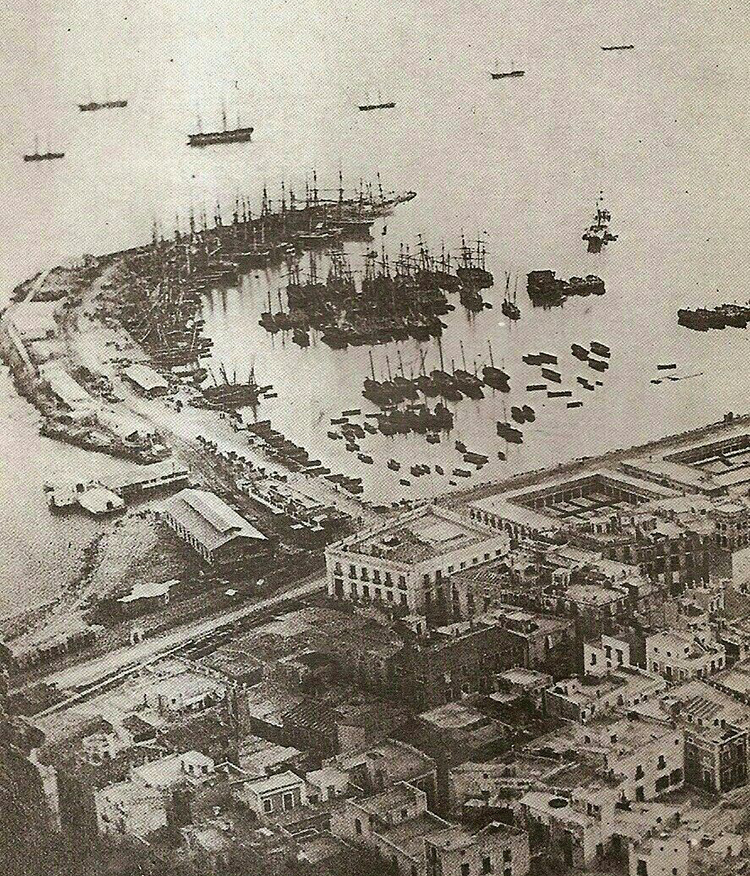
Hello everyone!
Today in #yomequedoencasaconelmarq I am going to talk about the important role that the port of Alicante played during the Modern and Contemporary Age. Its activity was decisive in the expansion of the city and since the time of Alfonso X “el Sabio”, it became one of the most important ports, thanks to its commercial activity, in the Spanish Levante.
After the granting of the title of city to the town of Alicante by King Fernando "the Catholic" in 1490, the port of Alicante experienced a growth in commercial activity that was key to the urban and economic development of the city during the Modern Age as for example indicates us the chronicle of Viciana (chronicler of the Kingdom of Valencia) in the sixteenth century. From that moment, Alicante became a great commercial and port city within the Mediterranean area. During these centuries, exports consisted of products typical of the region such as raisins, nuts, esparto grass, salt and wine. The port also received products from different parts of Europe, mainly from Italy and the Netherlands. Already in the second half of the 18th century and at the dawn of the beginning of the Contemporary Age, the port of Alicante was allowed to trade directly with America, thus becoming the most important port in Spanish Levante at that time.
In the Modern and Contemporary Age room of our museum we can find various objects resulting from this commercial activity that the Alicante port had, among which stand out a smoking pipe of Dutch origin, various objects of Italian crockery (plates, cups, jugs) and various fans from different origins, one of them from the Philippines dating from the late eighteenth and early nineteenth centuries and which shows the taste of the Alicante bourgeoisie of those times for the exotic and the oriental.
In short, the port of Alicante was a key engine for the economic and urban development of the city, and which, of course, continues to be an extremely important hallmark of identity for Alicante since the dawn of history, trade has been one of the key elements for the development of all the civilizations that have been happening in our lands.
Carlos Pérez, guide at MARQ.
-------------------------volver al menú >>
.jpg)
Hello everyone!
Today I want to tell you about one of the rooms of the permanent exhibition of the MARQ, the room of the Middle Ages. This room is divided into two, in the right half we can find objects from the Muslim period and on the left side remains from the Christian era. This is preceded by the fall of the Roman Empire and the Visigoth kingdoms in the previous room. If we look at the display case, we see that from this fascinating period, of no less than ten centuries, we find objects, customs and even constructions, which we see on panels and audiovisuals that are familiar to us, since they have lasted until our days. In the following lines I want to talk about this, about some of the things that have come to the present day, but focusing on the period of the Muslim occupation of the Iberian Peninsula.
First we are going to put ourselves in context. In 711 the Arab-Berbers arrived in the Peninsula from Africa and quickly occupied part of the territory, including the kingdom of Teodomiro, which occupied part of the current province of Alicante and part of Murcia. The conquest of this kingdom was made through a pact, since the treaty of Teodomiro or Tudmir was signed in 713 with ‘Abd al-‘Azīz Ibn Mūsā. Therefore this kingdom became part of al-Andalus.
After the conquest of the Muslims and the occupation of the new al-Andalus, they brought with them new customs, a new faith, new products and therefore due to these novel aspects they changed the lives of the people who inhabited all this conquered territory, and even many of these aspects have lasted to this day.
Some of these novelties were the new crops, since they brought date palms, citrus fruits such as orange and lemon, saffron and rice, to comment on just some of the products that arrived on the Peninsula at this time. These crops were not only important for the economy at this time, but still are today, since they are not only typical products of the Valencian Community, but have even become gastronomic symbols, since with products like rice and saffron is the best known dish in the Valencian Community and Spain, Paella. But to plant these new products, new agricultural techniques were needed, therefore they brought with them techniques such as irrigation, which consisted, in a synthesized way, in "domesticating" or "managing" the water so that it reached the plantation, in fact this technique is still used today.
Another aspect that we owe to these Muslims is the foundation of many cities in present-day Spain and therefore also in the Alicante province, such as the old town of Alicante itself; and even its place name comes from the Arabic name al-Laqant. Even many of the buildings in this old town have their origin at this time. Like the Santa Bárbara castle, the planning of the streets, narrow and sloping, and even the structures of many of the houses with an inner courtyard and glued to each other.
Something that revolutionized this territory was the faith they brought with them, Islam and this were one of the bases of the way of life of these people, since they are guided by their holy book, the Koran. That is why in the cities they founded they built mosques; in Alicante the great mosque was rehabilitated in the Christian era and the current church of Santa María was built on it. Another of the typical constructions of a Muslim city is the hamman, which used to be attached to mosques, since these baths use them to be able to purify themselves before entering it. In another aspect in which this religion influenced is in the decorative motifs, and we can see this very well in the ceramics that we find in the room. In these we see different decorative motifs such as epigraphs, using fragments of the Koran, geometric and vegetable motifs, and we even see the glazing technique in many of these ceramics; but we find no anthropomorphic motives. This is because Islam proscribes idols, and in the 9th century Mutazili theology introduced iconophobia, so for a long period of time the representation of animate beings was banned, even in secular books and art. This ban ended the iconic Umayyad tradition.
Many of these decorative traditions have not only decorated many of the Spanish cities for centuries in view of subsequent generations, as for example it has done in the Alhambra in Granada, which was even used by Christian monarchs. But in the current artisan tradition, these motifs and glazing continue to be used, and the use of tiles, which in many of our houses have a fundamental role, has even lasted.
With all the aforementioned we see that many of the objects, products and traditions that we use today and even some of symbols of our community, come from this time and were brought from distant lands.
If you want more information about Alicante remember #stayathomewiththeMARQ
See you soon,
Davinia Llopis, guía del MARQ.
-------------------------Back to menu >>
MEDICINE DURING MIDDLE AGE
Hello everyone!
In today's post in #StayathomewitheMARQ, I would like to talk to you about the importance of medicine and its advances during the Middle Ages.
Within this period we should talk about two types of medicine. On the one hand, popular medicine based on old knowledge and remedies, and on the other hand, those knowledge originally studied and practiced by monks and later in universities.
As regards the first type, it corresponds to diseases derived from superstitions transmitted from generation to generation.The conditions themselves ranged from the slightest, such as a sneeze or menstruation, to others of greater severity that could even end with death or leave a mark on the person, such as physical deformations at birth.
Such was their importance that they tried to eradicate at all costs, any disease, now listed, was said to be the result of an evil eye, divine punishment, possessions or bewitches. This is the case of those women considered "witches" only for the fact of being hunched over or having warts, and who, for that reason alone, were already considered a threat to society.
In the case of scientific medicine, it has its origin in Greece, specifically with Galen and his "theory of humors", based on the idea that the human body is made up of four basic substances known as humors, which must be kept in a perfect balance to avoid all kinds of diseases both body and spirit.
Arabic was the first culture to translate and interpret the Hellenistic knowledge between the 8th and 9th centuries AD, and from the 10th century they will develop their own medicine without losing sight of the ideas of Greek doctors.
In the case of the Christians, they also followed that Greek influence and it was the monks who were in charge of the healing practice in which they included their knowledge of medicinal plants. The monks were to treat every sick person who needed their help, especially the poorest, so their work was essentially beneficial. Therefore, monasteries were places where clinical knowledge was studied and transmitted, until the emergence of universities.
Apart from the monasteries, we have the record of hospitals from the medieval period, which became important in the final centuries of the Middle Ages when it was the brotherhoods that were in charge of their management, replacing the clergy, which had few resources economic. But, those hospitals continued with this charitable and religious work because, for the most part, they were full of the most disadvantaged people.
Regarding advances in medicine, despite the fact that there are numerous elements to highlight, some of them arrived with some delay in Europe or even in Spain. Apart from hospitals, at this time we will find, of Arab origin we will have pharmacies, the notions of optimal and ophthalmology; of European origin, the first universities, caesarean section, glasses, anatomy and dissection, among others.
Lorena Gomis, guide at the MARQ
-------------------------Back to menu >>
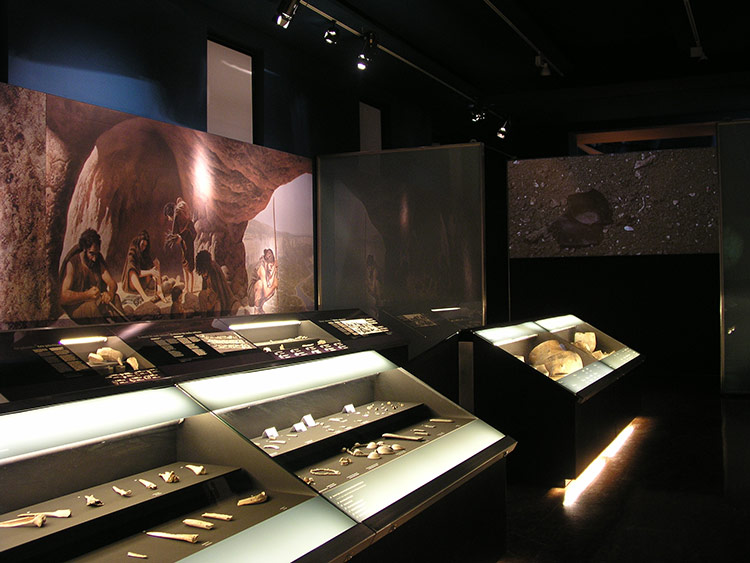
....
Hello everyone!
Today in #StayHomeWithMarq I would like to talk about the importance in my opinion of the Prehistoric room of our permanent collection.
The Prehistory room is very attractive for all audiences; all the knowledge it presents, together with the distribution of the pieces puts you in context by moving you to that time, and thus understanding the way of life and resources of our ancestors.
In this room we can learn and get to know very interesting information, such as who were the inhabitants who constituted the first human occupation in Europe, as well as what was their habitat. It also reveals the model of subsistence of the population through hunting, fishing and the collection of fruits and vegetables.
One piece I'd like to highlight from this room is the Cardial Cup. This comes from the Cova de l'Or, located on the Mediterranean coast where the first agricultural and livestock communities developed in our area. I find its decoration very striking, as it represents the first pottery to appear in our lands, associated with the new economy of
Neolithic production.
I hope you can soon visit us and enjoy this magnificent permanent collection.
We're waiting for you!
Cristina González, public attendant at MARQ.
....
Hello everyone!
In today's publication, I would like to talk to you about the Palaeolithic, going through the most general aspects of this period, but also focusing on the findings in the caves of the Levant of the Iberian Peninsula.
Human evolution has been a long process that started in Africa about five million years ago, with the Australopithecus, which will evolve into the genus Homo, being the Ergaster that just over 1,500,000 years ago first left Africa, to spread to the Middle East and Asia.
In Europe, the first hominids appeared approximately one million years ago, spread throughout the southernmost areas of the continent, including the Iberian Peninsula, since in the northern lands temperatures were very low and food shortages made survival difficult.
Although at a peninsular level, we have numerous evidences of all the stages of this period (Lower, Middle and Upper), it will be from the second stage onwards, when we will find the presence of human and lithic remains in the Valencian Community.
The first signs of activity can be found in Cova Bolomor (Tavernes de la Valldigna, Valencia), Cova Negra (Xàtiva, Valencia) and El Salt (Alcoy, Alicante), although their development or evolution does not take place in all locations equally.
Perhaps, the Cova Negra is the most important because of its wide range of material found, making clear the absolute control of the work on stone and the contact with other nearby groups that lived in Cova Parpalló and Malladetes, located 20 km away. In this location, it is possible to study how the group behaved in relation to their main source of resources, hunting, in which they monitored the herds and then selected the prey before shooting it.
We also know that the occupation was frequent, but not continuous, as in El Salt, although in the latter we have the presence of human remains, specifically five teeth corresponding to a relatively young Neanderthal man.
With respect to the Upper Palaeolithic, the new inhabitants, groups of Homo sapiens, knew well the work of the bone, elaborating, preferably in horns, punches or azagias; and that, as this period advances, they will be perfecting the lithic technique. As for the place of settlement, the choice of habitat will not be the result of chance, but will be conditioned by the ease of obtaining resources, and its permanence in the same must be understood, despite being a nomadic society, as a possibility of taking advantage of them. Moreover, it is at this time that the first manifestations of cave art, already mentioned in some previous publications, begin to develop, making these places true sanctuaries.
At this stage, there is more archaeological evidence to be found in Alicante and Valencia. Both the Marina Alta and La Safor regions have been highly inhabited areas due to high rainfall, varied ecosystems, caves and coastal plains that favour transhumance and the existence of animals such as horses. Clear examples are places like Cova de les Cendres (Moraira, Alicante), which has 25,000 years of human occupation during the Palaeolithic and Neolithic, and whose pieces are on display at MARQ, from ceramics to flint harpoons.
But, within the latest research on the way of life in this period, I would like to talk about the Cova del Comte (Pedreguer, Alicante), as it allows, once again, to ensure the natural wealth that our province offered for these first inhabitants. Making a brief mention to the art of the moment, this place, said by archaeologists and researchers, is the only one that combines engravings with paintings previous to the macro-schematic art, declared World Heritage.
Apart from the paint, projectiles have been found, tools for working the skin and for scrapping the flesh, as well as a large quantity of animal bones. All these elements allow us to determine that they led a balanced life dedicated to hunting and gathering, as well as the capacity to adapt to the environment.
In conclusion, it could be said that, during this long period, large settlement sites did not develop due to their nomadic way of life and, therefore, were conditioned by climatic factors and the scarcity of means, but despite this, they knew how to take advantage of natural resources and perfect them as much as possible, establishing, in many cases, lithic industry workshops.
Lorena Gomis, guide at MARQ.
....
Hello!
In today's article I would like to talk to you about the didactic approach of our museum rooms, more specifically, the Prehistory Room.
Many schools and associations visit the MARQ throughout the year, and the age range is very wide, therefore the level of attention or curiosity of each one varies as we go through the room.
In general, for this historical stage, the room has a series of panels that mark the evolution of Prehistory, from the Paleolithic to the Metal Age. In these photographs we can highlight the way of life, the customs, the activities they carried out, therefore, they allow us to accompany, in a better way, the explanations that as guides we give to the visitors, as well as, to understand the pieces that they can contemplate in the showcases of the room. In addition, within the space we have two audiovisuals about cave paintings and ceramics that complement the information.
Focusing on my experience as a guide, it is very complicated to make a standard visit for all visitors because there is a lot of variety in groups, ages and ways of approaching knowledge, that is why we must adapt the needs of each group.
In this article, perhaps, I would like to focus on the youngest in the house, the schoolchildren, who visit us every day and therefore we must make the experience more interactive and entertaining for them. In my case, I always try to focus on those aspects that allow, colloquially said, more play and allow them to participate. Therefore, I would like to highlight two moments during the visit when they, both the youngest and the teenagers, test their knowledge or even their imagination. This is the case with the recreation of the macro-schematic painting of the Pla de Petracos site in the town of Castell de Castells, which can be seen in the apse of the room. After some previous guidelines, they are the ones who describe the representation, the material used and are even capable of giving an interpretation, sometimes approximate, other times not so much, of the meaning of this cave painting.
The second moment that I would like to highlight, and which attracts your attention, is the burials. Perhaps, it is one of the aspects with which they stay more when they have finished the visit by the museum besides being also a didactic resource to stand out, it allows to explain him other concepts like the funeral trousseau and its functionality in the prehistoric way of life. I therefore believe that this museum, and in particular this room, allows the youngest to put themselves in the shoes of our ancestors.
Another resource the museum offers is the reproductions of archaeological pieces that can be found in the corridor leading to the exhibition rooms. These "touchables" have a very important function, accessibility, that is, to bring the story closer to those people with some kind of special need, whether auditory or visual, among others.
Accessibility, which is rarely discussed in our articles, but which is very relevant at MARQ, allows any visitor to have access to the exhibitions and workshops. We not only have the sample tables, but also QR codes, sign language interpreter, as well as some Braille and easy-to-read text guides. This great work is carried out by the Didactics Office of the museum itself, which makes it possible for these adapted programmes to reach anyone.
I hope you enjoyed this article, see you soon at MARQ. But, in the meantime, #stayHomeWithMarq
Lorena Gomis, guide at MARQ.
.........
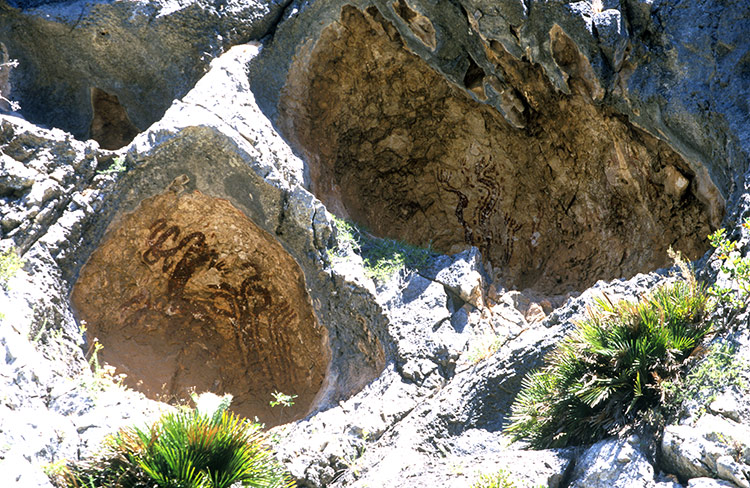
Hello everyone!
Today I come to talk to you about the techniques and pigments used by prehistoric societies for the realization of cave paintings, analyzing this in the different styles used.
The first artistic manifestations date from the Palaeolithic, and this period we find a series of manifestations included within the Palaeolithic art, in this style there are several techniques: the engraving: made by means of the puncture with a hammer or the incision or scratching of the surface with stone cutting instruments (burins of silex); and the painting applied by means of a brush, the own hands or by means of the erography (blowing the painting with tubes as if it was an airbrush, obtaining this way figures in negative). The colours that prevail in Palaeolithic painting are red and black. In the province of Alicante we only know 4 places with Paleolithic art, even so we find examples of engraved and painted figures. One example is the Cova Fosca, a Palaeolithic sanctuary, where we find different figures made by engraving. In fact, at MARQ we have a replica of a panel with the engraved figures found there. On the other hand, an example of painting of this type of art can be found in the Cova de Reinós in the Vall d'Ebo, where there is only one painted motif, a Goat with a bulging belly.
The Paleolithic period was followed by the Neolithic, a period marked by a series of changes, which caused people's lives to change completely, thanks to agriculture and livestock. At this time we also see a change in the cave paintings and various artistic styles originate which we will list below.
The Macroesquematic art, this is the art of the first farmers who came to the lands of Alicante in the middle of the sixth millennium. C. This art is exclusive to the mountainous area in the north of the province of Alicante, although in recent years there has also been a presence in the areas bordering the province of Valencia. The technique used to make this style is painting, using dark red pigments, dense and thick, and was applied with thick brushes or fingers, resulting in thick strokes. A magnificent example of Macroesquematic art is to be found in Pla de Petracos (Castell de Castell), where an extraordinary collection of paintings is located in six shelters forming a natural altarpiece on the spectacular rock wall. In the prehistoric room we have a replica of the V coat of this place.
Levantine art is another of the styles of this period and is contemporary to Macroschematic and Schematic art. Unlike the style mentioned above, this one has a greater geographical spread as it extends along the eastern facade of the Iberian Peninsula, from the Pyrenees to Almería and Jaén. Levantine art can be defined as a narrative and naturalistic style. The technique used is red paint applied with a brush, with very fine lines. First the contour and silhouette of the figure is made and then it is filled in totally or partially. The most representative place in the province of Alicante of this art is perhaps the Sarga (Alcoy). Where we find in the coat I on some macro-schematic figures a scene of Levantine hunting with several archers and deer.
Last but not least, we find in this period the Schematic art. Its origin in our lands goes back to the Ancient Neolithic and lasts until the Bronze Age (II millennium a. C). It covers the entire Iberian Peninsula and some areas of Western Europe. As the term itself suggests, schematic art is characterized by the simplification of figures. The technique used is painting in red, yellowish ochre and black, with a line of irregular edges and, only in some cases, with a well-defined outline. A significant example of schematic art is the group of the Cabeço d'Or (Relleu) where three idols can be seen with radiated eyes and facial tattoos, arms in two cases in a cross with marked fingers and the other in the form of a handle, resting on the waist.
Once the different styles have been exposed, and the techniques with which they were made, we are asked how the different pigments were made in order to obtain the characteristic colours of the paintings that were made in those prehistoric periods. To obtain the white colours, which are not very often used, but which are found mainly in paintings found in a funerary context, such as in the tholos of Montelirio (Seville), they were made of mica and kaolin. The colour black was obtained thanks to the mineral and vegetable coal. Finally, to achieve the red, yellowish and brown tones, they were made by means of compounds generally of oxide and hydroxides of iron (hematite, goethite, lemononite, manganese, cinnabar, etc). These were materials, which could sometimes be found in the form of dust in nature, but in most cases they were usually crushed into stones (mills and mortars), examples of which have been found, such as in Altamira or a fragment of a mill covered with dye and two crushers in the Cova de l'Or (Beniarrés). Once the powder was obtained, it was necessary to create a paste to be applied to the wall, for which the binder was added, which could be animal fat, resin or egg white. It seems that the most commonly used material in this case was animal fat. Once the paste was obtained, it was placed on a palette. Molluscs with traces of pigments have been found in different places, such as the Cova de la Sarsa or the Cova de l'Or. In addition, barrels or ceramics with traces of dyes have also been found, so they would also serve to introduce the mixture, the first case very useful to be able to carry it as it has two small handles that would serve to hang it.
Knowing the different supports where the pigments were introduced, the techniques and how these societies made the colourings, helps us to know a little better these hunter-gatherer societies of the Paleolithic, and the agricultural and livestock societies of the Neolithic, seeing a unity in the techniques, materials, and supports to be able to shape their beliefs and thoughts through art.
If you want more information about art in prehistory I leave you the link to some articles and videos related to this topic:
Remember, #StayHomeWithMarq
Davinia Llopis, guía del MARQ.
..............
Stone world
Stone is one of the most significant elements of daily life since Prehistoric times. In fact, we have numerous testimonies about its use as a building material, also in the manufacture of products. At the same time, there are parallels between these articles and the current developments, showing us some historical continuity.
Inside the room 1 of the MARQ, we can appreciate numerous examples of archaeological remains made of stone, especially of flint. It is a kind of very hard stone used traditionally to make stone tools and start fires. Some parts may contain sharp edges used to cut and drill.
The so-called cabin of the archaeological site of Illeta dels Banyets (4th millenium B. P) contains a few evidences of this stone work. A kind of anvil was found there along with numerous fragments, which were used to produce arrowheads.
In addition, in this place were also discovered different pieces of pottery (two containers) and molluscs. All of them tell us that this house was inhabited in different periods of the year.
Stone never go out of style!
#Istayatmarq
Anabel Castro, guide at Illeta dels Banyets
..............
Hello everybody!
Today, in #StayathomewiththeMARQ I would like to talk you about the evolution of burial forms throughout Prehistory.
For sure, we don't know exactly when those first burials, or at least concern for loved ones, could have occurred. Thoughtout the historical stages, societies have been developing very diverse and increasingly complex beliefs and funeral practises in relation to their social and mental stuctures. In case of Prehistory, it is such a long period that it allows the possibility of observing a succession of important transformations in social behaviour towards the dead. The first evidences that we have belong to the middle Palaeolithic in the Near East and some areas of Europe, both in caves and outdoors. They are funeral practises through the rite of burial, which will reach greater importance during the Upper Palaeolithic (32,000-9,000 B.C), because during this first period it os very difficult to affirm that the burials took place under some kind of symbolic ceremony or ritual. Anyway, the graves found, most of them population existing at the time, which seems to indicate that the most common burial was another, surely in the open air which has barely left traces.
In the Neolithic, thanks to the changes in the way of life and its economy, they promote population growth and with them, the creation of the first important villages and large cemeteries, located outside the towns.
They are usually sets of individual burial pits, where the skeletons are arranged flexed ritually. And it is that, through the material remains that we find in a grave, we can know the kinds of ways of life of the past.
In the mid-Bronze Age, a return to individual burials is recorded. This necropolis of some important towns of this time such as those existing in the southeast of the peninsula, show skeletons located separately inside stone cists or large ceramic vessels.
This situation lasts until the arrival of the Iron Age with the arrival of the Indo-European peoples, who bring to our territory the funeral ritual of cremation. The cremation of the corpses implies a different mental background from that of the burial, since it is not about returning the body to Earth as in the beliefs of Neolithic agricultural societies (agrarian cycle), rather, it is posed as a return of the some to the heights, enveloped in the smoke that rose from the ashes of the mortal body, as posed by the celestial European religious that are beginning bto emerge at this time.
In the case of the peninsular southeast, specifically with the Culture of El Argar, the practises through the cremation rite are not yet carried out.
In this way, we must highlight the adult and children's burials, inside the houses, in their subsoil or outside them. All of them, though the practice of burial, and placed in urns, cists or graves.
The human being has been in costant evolution, although we cannot speak of great radical changes or ruptures with previous periods and proof of them are the constant cultural survivals that we can find in the archaeological remains.
However, there is variety in the way of burial or in a prehistoric societies, reflected in a trousseau of greater or lesser wealth, in many cases due to the natural resources of the geographical area or the presence of a socio-economic, political or religious elite, already mentioned in other previous articles.
Despite this, there is a clear idea, funeral rituals allow ideologies to be formalized and mark their own identify in prehistoric social groups.
Lorena Gomis, guide at MARQ.
...
Hello friends!
Today in #StayathomewiththeMARQ, I would like to talk you about the greatest revolution that, with the industrial revolution, our species has experienced throughout its history: the Neolitic. But how did it come about? What were its main characteristics? What consequences did it have on the way our species understood its nature and environment?
In order to answer these questions we must first understand how our species lived in the Paleolithic. Homo Sapiens reached the Iberian Peninsula approximately 40,000 years ago, in the Upper Paleolithic, a period that lasted in our territory until about 7,500 years ago. It is a period in which we have not yet learned to domesticate nature, so our subsistence was based on hunting wild animals and collecting wild fruits and seeds. When resources were depleted where they lived they were forced to choose between two options: stay and die or leave and have a chance of survival. Therefore, they were constantly on the move, living as nomads and occupying caves seasonally. The cave, ancestral refuge, was a perfect place to shelter from both the animals and the intense cold they had to face, since we are in the times of the Würm glaciation, a very complicated time from a survival point of view, so we were not many and life expectancy was very low.
Our species lived this way for several tens of thousands of years, until an event occurred that would change everything: a great climate change. About 12,000 years ago, our planet began to gradually warm itself, ending the last great ice age. As a consequence, different places were especially favored, such as, for example, the Fertile Crescent, a region located in the Middle East Asia with a crescent shape (hence its name), where for the first time the human being learned to tame both plants and animals. With assured food, it was no longer necessary to wander from one place to another in search of sustenance, so our species begins to settle in certain places, near cultivation areas and, therefore, rivers and lakes, with the first permanent settlements. With this, new needs appeared and so they had to respond by creating new utensils, such as axes and polished stone tiles to deforest and work the earth and wood, ceramic containers to store what was produced, the spoon to consume new types of food such as "porridge" made from cereal...
With this new way of life there is a demographic explosion so that, step by step, these people will occupy new territories, beginning a journey that will take them to places as far away as, for example, the Alicante territory, which they arrived 7,500 years ago, located mainly in valleys and river basins, such as the Vall de la Gallinera or the Ibi-Alcoy Canal (particularly the Cova de l'Or in Beniarrés), and marking out “their territory” with paintings and engravings: sanctuaries where they contemplated and venerated sacred images, in which they performed ceremonies to reinforce the cohesion of the group, but also in which they symbolically manifested their dominion over the territory in front of others groups, requesting protection and fertility. Especially such important sites as La Sarga (Alcoy) or Pla de Petracos (Castell de Castells).
Therefore, the Neolithic marked a historical milestone, a before and an after in the conception by our species of the territory that surrounds it, beginning an intense process of appropriation and transformation of it that continues to this day.
I hope you found the article interesting.
Regards.
Mª Paz Gadea, guide at MARQ.
-------------------------back to menu >>
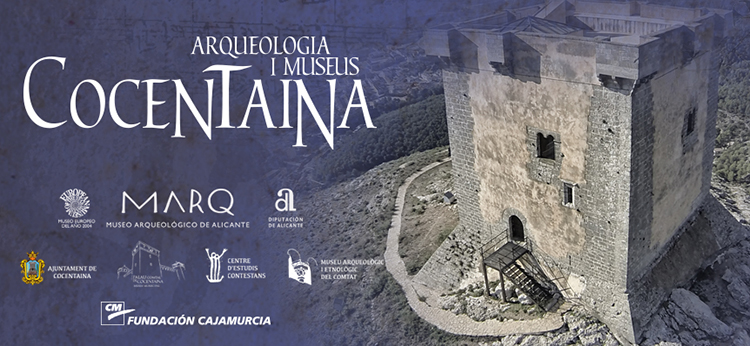
Hello, everybody!
We continue with more articles and more archaeology! On this occasion I would like to recall one of the exhibitions that I have most enjoyed guiding, Cocentaina: Archaeology and Museum, an exhibition that brought the rich heritage of this town to our museum, a magnificent opportunity to get to know the archaeological and artistic wealth of the capital of the Comtat. This exhibition took place in 2015 and was part of the Municipal and Local Museums exhibition cycle organized by the MARQ.
The first room of the exhibition covered the periods of Prehistory, the Ancient Age and the Islamic period of the Middle Ages. The first section of the exhibition, which was devoted to the first stages of human history, collected archaeological remains belonging to the three stages of Prehistory: Paleolithic, Neolithic and Metal Age. All these archaeological remains came from the main prehistoric sites in the Comtat region. As far as the Iberian period is concerned, the exhibition offered us three showcases with the arms of the Iberian warrior, religious votive offerings and ceramic vessels, with the Vas del Guerrer, one of the most exceptional ceramic pieces of the Iberian culture from the very important site of La Serreta (Alcoy - Cocentaina - Penáguila). As far as the Roman period is concerned, the exhibition offered a detailed map with the main Roman rural villas in the Comtat region, and in the part of the apse of the room the emphasis was on the Polyssinian necropolis, a late Roman-Visigothic cemetery that was discovered by the Centre d'Estudis Contestans in the 1980s. The panels recreated the different types of burials that existed in the necropolis, and the display cabinets showed various items of glass and glass paste trousseaux that accompanied the dead in their graves. The final section of the first room was dedicated to the Islamic period; at the beginning of the 8th century the Muslims began the conquest of the Iberian Peninsula, this gave rise to new forms of life after the arrival of the new settlers. It was at this time that Qustantaniya (the seed of the current town of Cocentaina) was founded; in this part of the exhibition, the ceramic basin found in the Plaça de Sant Miquel, worked with the dry rope technique, a fascinating object of Islamic material culture dating from the end of the 12th and beginning of the 13th century, is worth mentioning.
The second room ranged from the Christian conquest of the Islamic territory of Qustantaniya to the Contemporary Age. The first section was dedicated to the Castle of Cocentaina, built by the House of Llúria (lords of Cocentaina) on top of the mountain (Saints Cristobal's hill) that dominated the Christian village. This castle is considered to be one of the few examples of military Gothic in the entire Valencian Community. As far as the Modern Age is concerned, the town of Cocentaina passed into the hands of the Corella family (the nobility of Navarre) and it was at this time that one of the jewels of the town's architectural heritage was built, the Palacio Condal, the seat of the new Counts of Cocentaina.
Of this section of the exhibition, the coat of arms with heraldic motifs of the Corella family, a model of the Palacio Condal and the altarpiece of Santa Bárbara, one of the jewels of Gothic art in our lands, stand out. The final part of the exhibition was devoted to the process of industrialization that the town underwent throughout the Contemporary Age, mainly in the mid-nineteenth century. In the pre-apse and the apse of the second and last room of the exhibition, a tribute was made to the fantastic intangible and folkloric heritage of the capital of the Comtat, focusing on the Moors and Christians festivities, the famous pasodoble of "Paquito el Chocolatero" composed by the Contentious Gustavo Pascual Falcó and the All Saints Fair, one of the oldest medieval fairs in Spain.
In short, the exhibition of Cocentaina: Archaeology and Museum was a unique opportunity for everyone who visited the MARQ to get to know the rich historical, archaeological and artistic heritage of this wonderful town.
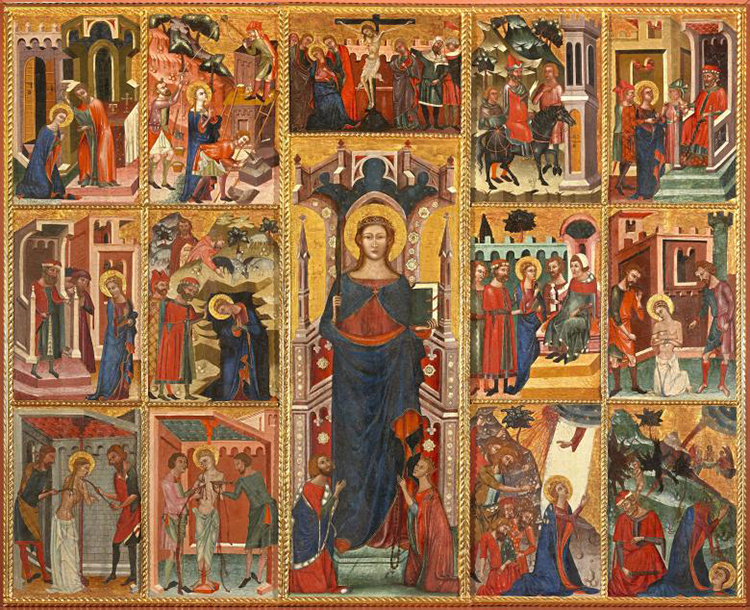
In short, the exhibition of Cocentaina: Archaeology and Museum was a unique opportunity for everyone who visited the MARQ to get to know the rich historical, archaeological and artistic heritage of this wonderful town.
Carlos Pérez, guide at MARQ
-------------------------volver al menú >>
“PETRER, ARCHEOLOGY AND MUSEUM” AT MARQ
Hello everyone!
Today I bring you writing about one of the temporary exhibitions that I have most enjoyed guiding, it is about the exhibition organized by MARQ in collaboration with the Dámaso Navarro de Petrer Museum in 2018. Petrer, Arqueología y Museo was the thirteenth proposal for the exhibition program "Local and municipal museums in MARQ". The exhibition aimed to bring the archaeological and heritage legacy (both material and intangible) of this town in the Medio Vinalopó to all visitors. It should also be noted that this was the first exhibition to have "Easy Reading" panels to help people with reading difficulties in their visit to the exhibition.
The exhibition had a chronological route that went from Prehistory to the Civil War; In the final part of the exhibition, elements related to the local craft traditions such as agriculture, pottery or footwear were also exhibited, and part of the second room was reserved to expose intangible heritage, highlighting its festivals and traditions such as the Moors and Christians festivities, the "Carasses" or the Three Kings Parade.
The first room of the exhibition was dedicated to Prehistory, the Old Age and part of the middle Ages under Muslim rule. In the first section of the room, archaeological remains from the Neolithic and the Metal Age from the main deposits in the area such as Chorrillo Chopo, l’Almorxó or Catí-Foradà were exposed. Regarding the Iberian era, archaeological objects from the four Iberian villages documented in these lands were exposed, these sites were possibly linked to a much larger settlement that would be found in Elda, and we refer to the Iberian city of Monastil. One of the most important vestiges found in the urban core of Petrer came to us from the Roman period, the mosaic of Villa Petraria that surely would decorate a room in the Roman villa that was operating as a place of agricultural and industrial production until the late-ancient times. Regarding the final section of the first room, this was dedicated to the first period of medieval times under Islamic rule, a key moment in the gestation of the city of Petrer, since the origin of this town is in the Islamic Bitrir which settled on the southern slope of the hill of Peter's castle. At the end of this section was a 3D model of Petrer's castle under Islamic rule, ideal for the visitor to get an idea of the primitive aspect of this medieval fortress.
Already in the second room, we found archaeological objects from medieval times under Christian domination as well as a model with the recreation of the castle with the reforms carried out by the new Christian settlers. From the Modern Age, the expulsion of the Moors in 1609 should be highlighted, a key event that brought important economic and mainly demographic consequences since Petrer was depopulated and a Puebla Charter had to be drawn up to establish new settlers in the territory. Finally, one hundred people settled in Petrer from other towns in the province of Alicante such as Jijona, San Vicente, Castalla, Monforte, Agost or Biar. Regarding the Contemporary Age, the historical event that was dealt with most emphasis in the exhibition was that of the Civil War since the republican government (which was located in Valencia) moved to the Poblet estate (Petrer) and it remained there until the end of the conflict. Among the exhibits, highlight an anti-aircraft siren and photographs of an industrial shoe area called "The City without Law" as it was transformed into an arms factory for the Republican side during the war.
As a museum guide, it is a pleasure and an honour to be able to learn more about the local heritage of the main towns of our lands and to reach visitors with the incredible archaeological legacy that we have in the province of Alicante.
In the following link, we can enjoy the video that was made ex profeso for the exhibition:
https://www.youtube.com/watch?v=tl4wTupPPog
Carlos Pérez, guide at MARQ.
-------------------------back to menu >>
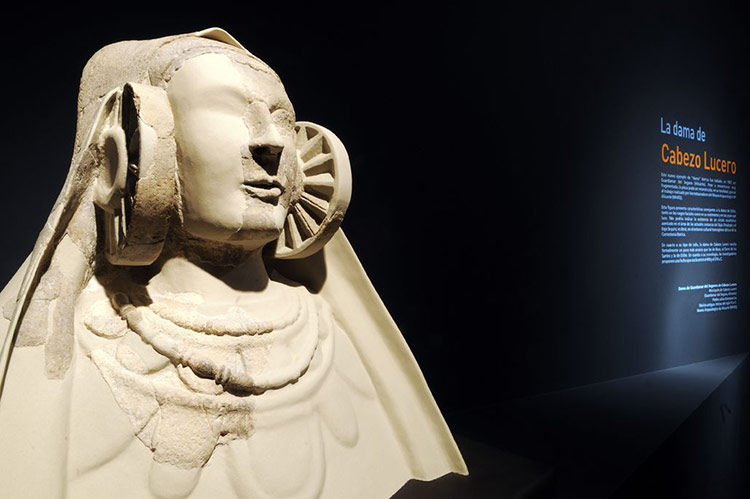
.....
Hello everyone!
We’re still #stayathomewiththeMARQ with more articles and more archaeology. Today is the turn to write about one of the star pieces of the MARQ Iberian Culture Room, the Lady of Cabezo Lucero (also known as Lady of Guardamar). This piece preside over the Iberian Room, an indigenous culture of the Mediterranean facade of our territory that coexisted with the Celtic peoples of the center – peninsular north before the arrival of the Romans in the Iberian Peninsula.
The Lady of Cabezo Lucero was found in the necropolis of the site of the same name, located in the municipality of Guardamar del Segura in 1987. According to studies based on dating and comparison with other examples of funeral busts of this culture, dates from the late 5the century BC – the first quarter of the 4th century BC. The sculpture was found fragmented and later rebuilt by Vicente Bernabeu, restaurateur of the Provincial Council of Alicante. Restoration and reconstruction work was carried out in the Restoration Laboratory of the Provincial Archaeological Museum of Alicante. Thanks to expertise and skill of Vicente Bernabeu as a restaurateur, the sculpture was reconstructed from a few original fragments, becoming one of the most important examples of Iberian statuary in the entire Province of Alicante.
It is a female bust in the front position with clothes and jewelry. Wear a robe, headband, side empellers in the area of the ears and beaded necklaces that would be made of glass paste. According to research studies conducted to date, this figure could represent a woman of the aristocracy related to religious power or it could even be the representation of some female divinity within the heterogeneous and orientalized pantheon of Iberian gods. As for it's function, it is clear that it is linked to the funerary world as it was found in the necropolis reserved for the aristocracy of the Iberian town of Cabezo de Lucero. If we look at other similar parallels of female sculptures of this type such as the Lady of Elche or the Lady of Baza, it could be a cinerary urn to deposit the ashes of the deceased next to his trousseau or a funerary sculpture to mark a specific area of the necropolis.
The stylistic similarities between the Lady of Cabezo de Lucero and the very famous and exceptional Lady of Elche make us think that there was possibly a defined sculptural circle in the southern areas of the Province of Alicante (Comarcas del Bajo Vinalopó and Bajo Segura), which in short, it would be a form of artistic expression of a homogeneous cultural environment known by sources as the Iberian Contestania.
Carlos Pérez, guia del MARQ.
....
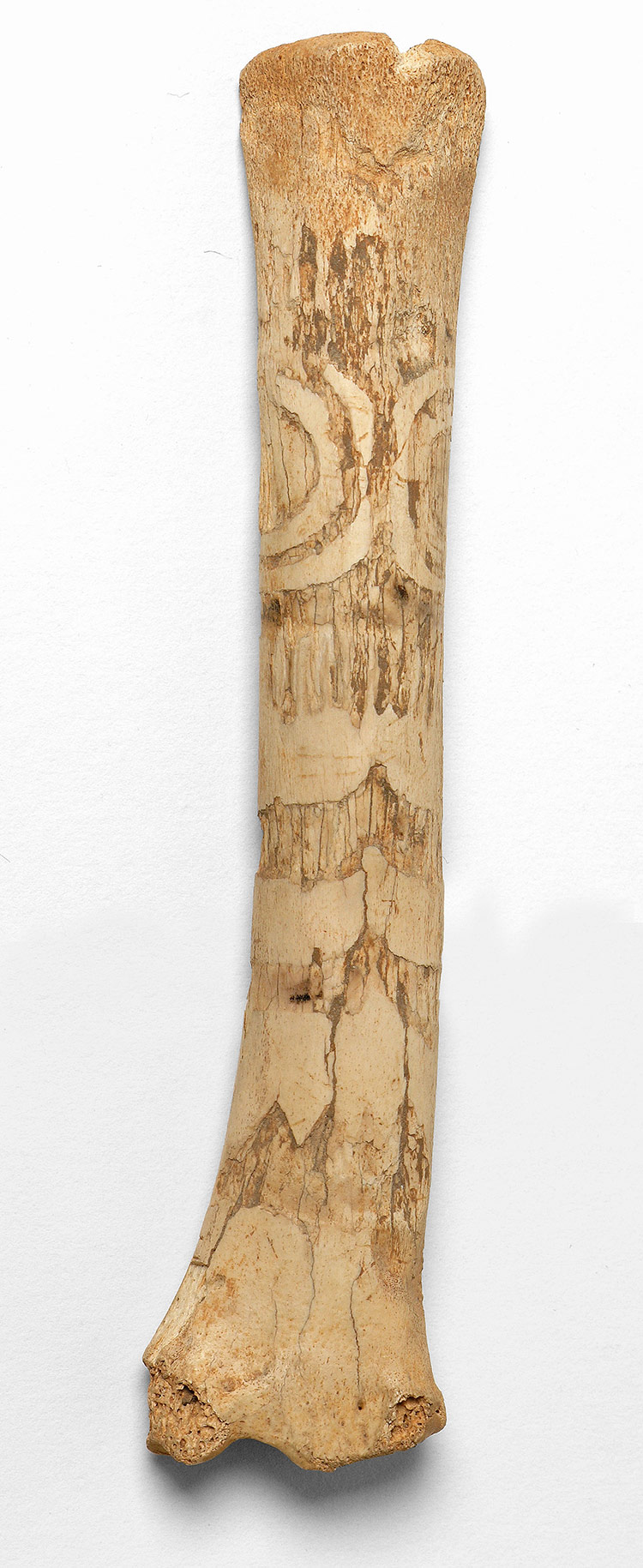
Port Guia 0904 from MARQ Arqueológico de Alicante on Vimeo.
-------------------------back to menu >>
.jpg)
The recovery and opening to the public of the monumental building that constitutes the Almudaina Tower, declared a Site of Cultural Interest-BIC with the category of Monument, is recent. Built in the first half of the 13th century, it is one of the many farmhouse defensive towers erected in the eastern region of al-Andalus shortly before the Christian conquest.
Port monu 0104 from MARQ Arqueológico de Alicante on Vimeo.
....
Hello everyone!
At the very beginning, Almudaina’s Tower had four levels, which you could acces thanks to hand-stairs. From XIX century, the tower was a dwelling so it had one more level.
When it was build, at the top levels – third and fourth levels – they put windows with small triangular shapes that people used like arrow-hole. This small windows, build for defending the tower, were about 8-10 centimetres size. It was so difficult to hit from the outside of the tower.
Moreover, the tower had a battlemented terrace from they had great visibility and it was a choice to contact with other defence towers or castles.
In XVI century, the battlemented terrace was replaced for a roof with two slopes because the humidity.
Enrique Juan Vidal, guide and public attendant at Almudaina’s Tower.
....
Hello everyone!
If we talk about amazing details of the monument, we should talk about two pieces of pottery that visitors can see on the walls of the Tower. This pieces are the key to know when was build this monument – between 12th and 13th century-. Moreover, inside the first level, there are some lines, joined together, which indicate people used them to count grain, olive oil or unities of time, like days or weeks.
Besides, I like to underline work was made by Diputación de Alicante and MARQ in the access of the monument. The external access to the second floor has a stair and it forms an atonishing viewpoint. The interior one, was build to let access to the four levels of the Tower. In order to preserve the monument, both stairs are independent and they are not affix to the monument.
Enrique Juan Vidal, guide at Almudaina's Tower.
....
#Didyouknowthat… In Almudaina’s Tower, appear some stamps on the outside. Perhaps, these stamps were made by impacts of some objects. Moreover, visitor could see lines of holes that we called “small quarters”, in the upper side all of them. This is because during its construction of mudwall walls, builders used them to put needles than they could recover later.
In the first floor of the monument, from the outside of the Tower, visitors could see a rectangle that hides a mysterious entrance. However, it is just a revolving door that hides the door that appears on the XVI century. This door could be opened just from the inside, and it’s a great detail for visitors.
Enrique Juan Vidal, guide and public attendant in Almudaina’s Tower.
....
#Didyouknow...That the four corners from Almudaina’s Tower are exactly on the four cardinal points?
Moreover, apparently first level of the structure was used as a cistern when the tower was build,
It is so important to focus on the hardness of the materials of the building because they achieve grate strains. This is due to the excelent quality of the gravel it was used in the mortar of the mudwall that make walls up of the tower.
Enrique, guide and public attendant in Almudaina’s Tower.
....
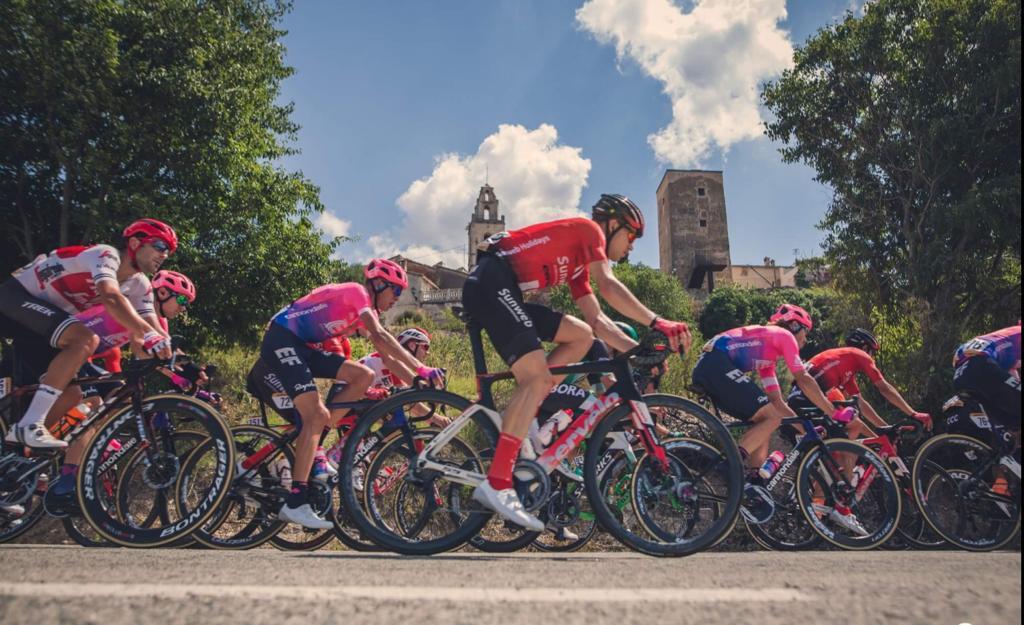
#Didyouknow… The edition of "La Vuelta a España 2019" passed at the foot of Almudain's Tower?
Here you have a picture of the "key moment"
#StayHomeWithMarq
-------------------------back to menu >>
.jpg)
Hello my friends!
Today, in #StayHomeWithMarq, I'm going to talk to you about one of the pieces that we can find in room 2 of the temporary exhibition Ídolos, Miradas Milenarias (Idols, Millenary Gazes) that is currently housed in the Provincial Archaeological Museum of Alicante (MARQ): the stela of Crato (Alto Alentejo, Portugal).
It is a piece made of granite and decorated in bas-relief, in which we can distinguish two different areas: the upper half, which represents the face, with an indication of the eyes - two simple points - and the nose - a vertical groove - and the lower half, delimited by a horizontal line under the face, from which three concentric circles emerge that have been interpreted by a large number of researchers as necklaces or decorative elements. Both on the sides and on the top of the piece, we can see a network of lines that cross each other, forming a grid pattern that resembles a net.
The stele was found by chance in a farm in the town of Crato (Portalegre), so it is out of context, although there are many parallels in the southwest of the Iberian Peninsula (Portuguese Alentejo, Extremadura and western Andalusia) that did appear linked to an archaeological context and therefore help us to discern its deep meaning. These are objects closely linked to megalithism, with a predominantly funerary connotation, as they are generally found inside collective graves (dolmen and tholos-type structures), at a specific point in the burial chamber, where they receive light from the rising sun every morning, casting their gigantic and imposing shadow over the dead.
Although these are elements that are very difficult to interpret and decode from a current perspective, as they are images and symbols related to the mental structures of prehistoric groups, we can come to intuit what they were intended to represent and evoke through these artistic manifestations. This type of stelae in particular, seems to represent a being, human or divine, profusely ornamented with necklaces hanging over his chest and with the head adorned by a mantle that also covers part of the body. It is possible that this is a type of clothing linked to a collective with an outstanding social and/or spiritual status; in fact, these reticulated motifs remind us of the clothing worn by the "priestesses" of Montelirio: some very luxurious and heavy clothes (between 8 and 10 kg), made of tens of thousands of limestone or shell beads strung with threads, whose use would be linked to the celebration of rituals of a liturgical nature. In addition, on the back of the piece you can distinguish a serpentine motif, a symbol connected to the underworld since ancient times, which must be related to the belief in a reality beyond death. Therefore, it may be that through those rituals in which the wakes seem to have played a primary role, what they intended was to breathe life into the dead, whose souls were destined to wander between light and shadow, between life and death, until the end of time.
Isn't it fascinating to be able to approach such a remote moment of our recent prehistory through such significant pieces as the one described in this article? This is what you get at MARQ, to relive history and learn from it. That's all for today, as far as I'm concerned. I send you much encouragement and strength.
See you soon at our beloved MARQ.
Maripaz Gadea , guide at MARQ.
-------------------------back to menu >>

Port Guía 0804 from MARQ Arqueológico de Alicante on Vimeo.
...........
Hello everybody!
Today in #StayHomeWithMARQ I would like to talk about anthropomorphic idols, their formal characteristics and their relationship with the social changes, that happen in the transition from the Chalcolithic to the Bronze Age. These figurines from the mid-3rd millennium BC are on display at the end of our temporary exhibition “Idols: Millennial Gazes”.
The production of anthropomorphic idols was widespread in the middle – end of the 3rd millennium BC throughout southwestern Spain (Western Part of Andalusia, Extremadura and Portugal). These pieces were made in several materials such as stone, fired clay, bone or ivory. In the latter case, the material puts forward the importance of trade between distant locations and shows the complexity of the trade relations that exist during these times. The detail and symmetry of these figures emphasizes the great skill and technique between people of the peninsular communities in the 3rd millennium BC. The body usually appears naked, eyes and nose are depicted with a high degree of detail. Furthermore, hair is represented by zigzag incised lines and below the waist appears the genital organ. Some of the most remarkable examples which perfectly fulfils this classic stylistic canon is the anthropomorph of Cerro de la Cabeza made of bone. This archaeological site is in Valencina de la Concepción (Seville), and this idol is part of the Archaeological Museum of Seville collections, but now, is currently on display in the second room of our temporary exhibition “Idols: Millennial Gazes”.
Usually, we find a higher percentage of male figures, while the production of female ones gradually decreases in number over the third millennium BC. It has also been documented a small number of anthropomorphs whose sexual organ has not been specified. Anthropomorphic idols have been found in housing, ritual or funerary contexts, and are linked to changes in societies in the transition from the Copper Age (Chalcolithic) to the Bronze Age, leading to the sharpest social inequality common in the peninsular societies of the 2nd millennium BC. Curiously, that time will be when the production of idols disappears, being, from a chronological point of view, anthropomorphic idols the most recent ones.
To sum up, anthropomorphic idols are one of the last artistic evidences in peninsular societies during Chalcolithic. These idols, which would be linked to tribal leaders and family lineages, will stop production from the Bronze Age, when it will be established (artistically) the representation of a warrior, in figures and funeral steles, due to social changes.
Carlos Pérez Soler, Guide at MARQ
-------------------------back to menu >>
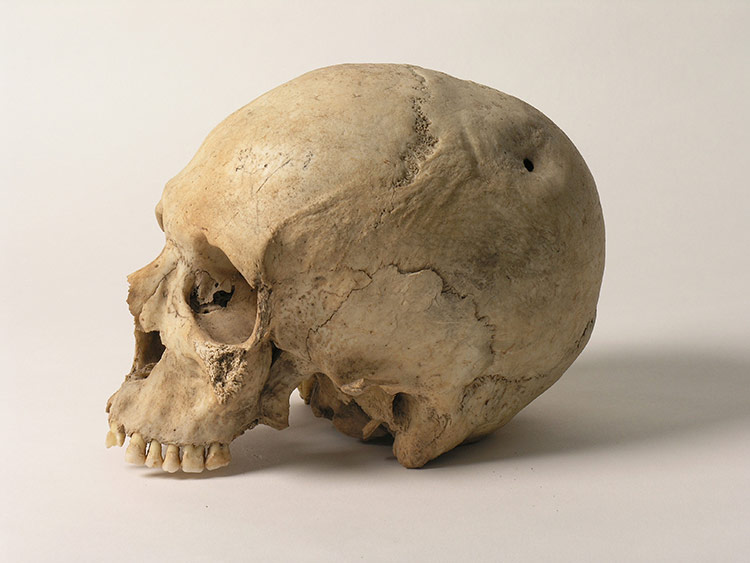
Hello!
In today's post I would like to talk you about something that has caught my attention in a deeply way, since I’ve started to guide the MARQ permanent collection: the prehistoric trepanned skulls.
Trepanation is a technique wherein a surgical instrument is used to make in the skull. This practise has been held from ancient times and around the world. However, nowadays we still have not found out which the purpose of trepanations were.
Througout Classical Antiquity these surgical practices were used to heal ailments such as severe migraine headache (by the lack of acetaminophen or ibuprofen) or different sort of disorders. As Hippocrates said, “this consist on opening the lining of the head and removing scattered bones fragments".
Thus, researchers spent a lot of time suggesting that trepanation was done for surgical purposes and probably it was so in some cases.
However, recent studies state that there may have been something beyond this medical purpose and link the trepanation to different rituals: initiation, to lead spirits, to acquire knowledge, and so on.
These theories are thrived, amongst other reasons, thank to a number os trepanned skulls discovered in 1997 into one of the collective tombs from the Copper Age, and excavated in Russia, near the shores of Black Sea.
Inside this grave, the human remains of five individuals (two men and three women) were found whose skulls had been perforated. In fact, all of them were trepanned at the same point: the so-called "obelion". This point, located at the top and back of the head (in the vertex), is extremely sensitive so, a bad surgery could cause severe bleeding in the brain.
However, we find that these five individuals survived trepanation, as well as the human skulls shew in our exhibition Idols. Millenial Gazes.
There are different types of trepanation: by drilling (by turning a sharp tip over the skull) and by abrasion (scraping with grainy stones). Both processes sought to reach the Dura mater, keeping people alive. In addition, we find a very small percentage of post-mortem trepanation.
In general, there are a small number of skulls with bone regeneration so we could keep on thinking in this practise as a way of healing ailments or a kind of ritual.
In Cova de la Pastora and Cova d'en Pardo, our examples at the exhibition, we observe these signs of regeneration, being much more evident in the second one.
Besides that, it is known the using of differents herbs and medicinal plants in these practises, probably they could lead people to a sedated, indolence or drunkenness state, such as poppy and valerian. These two plants can be found especially in the inner part of the province, in the Alcoy-Denia area, being more limited in the southern part.
In all cases, an infusion or fermentation process of its seeds and flowers, including a mixture between them, was used as an analgesic to cope with pain and lead people to a sedation similar to anesthesia.
This condition could also be obtained through proto-beer, very different from our alcoholic beverage but whose effects would be comparable and could slightly relieve pain.
We must say that the consumption of these substances is usually connected to some ceremonial acts, devoted particularly to death or honour the ancestors, so that, as well as the fact that trepanations were carried out at the same point and the "operated" individuals survival support research about rituals.
If this topic has caught your attention, do not hesitate to visit us and participate in our guided tours when all this ends because, as you can see/read throughout our articles and videos, we have a lot of things to tell and teach in our exhibitions.
In the meantime, follow us on social media and stay home with MARQ.
Greetings.
Henar, guide at MARQ.
-------------------------back to menu >>
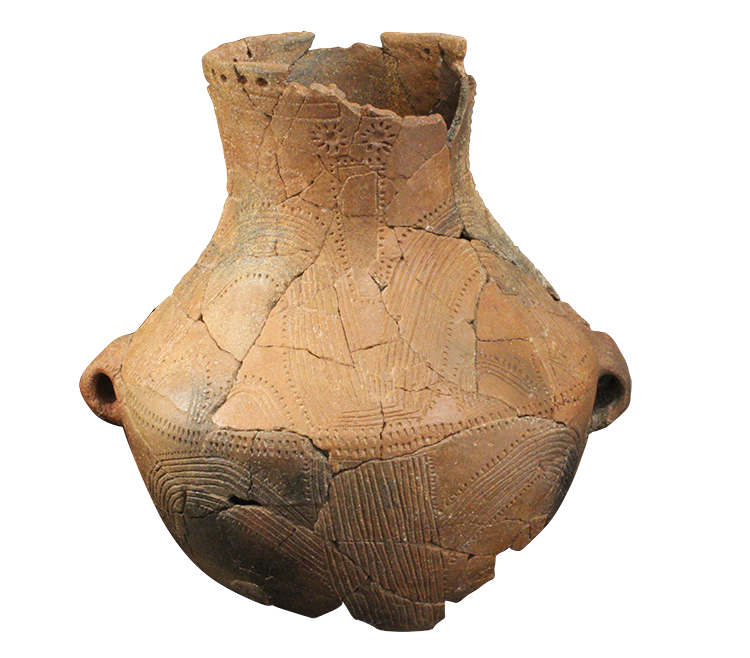
Port Guía 3003 from MARQ Arqueológico de Alicante on Vimeo.
-------------------------back to menu >>

Hello everyone!
Today I want to talk about something that makes MARQ a reference museum, its accessibility since it creates a space that facilitates inclusion.
As a MARQ guide it is a privilege to work in a place that brings something as important as our history to everyone, and it does so thanks to a series of professionals who dedicate their effort to it, together with the collaboration of a series of associations that make all this work possible.
Although it is true that the museum is fully accessible in every way, such as the adaptation of the design of the enclosure, its entrances, the exhibition discourse of the permanent exhibition, in addition to having wheelchairs available to the public, which can be acquire in the museum hall; Today I want to refer to something more concrete, to the accessibility of temporary exhibitions.
This is worth noting because a great effort is devoted to these exhibitions, because after all they are samples that last a short period of time and after this they are disassembled and redesigned another different sample, so it involves a great job. The final goal of these exhibitions is to bring our history closer to all people, for this they have different resources to make this possible. Below I tell you what those resources are based on the temporary exhibition that we currently have, "Idols, Millennial Gazes".
The first accessibility resource is found after passing the entrance door of the part reserved for temporary exhibitions, and it is a tactile plan, which not only facilitates orientation to the visitor but also indicates in Braille the arrangement of accessible resources.
Both the permanent exhibition and the temporary exhibitions we have a Braille guide made in collaboration with the ONCE resource center, which can be obtained at the box office of the brand, also in this same place we have other resources available to the public, such as the magnetic loop, something very useful to visit the exhibition, since a magnificent resource of these is music but it is true that this can make it difficult for people who wear hearing aids, so the magnetic loop is a great help for these people, In addition, there are magnifying glasses for those with reduced visibility to read the signs and panels.
Something very striking about these exhibitions are the reproductions of some outstanding pieces and the models that are found in the different rooms and are deposited on tables adapted to fit wheelchairs and so on, and especially blind people can see the exposure through touch.
In the case of the exhibition of "Idols, Millennial Gazes" we find several resources of this type. In the case of the first room, as soon as we entered, we found the miniature reproduction of a dolmen, which is next to a paper where it is shown in an image, in order to understand it visually or through touch the link idols have with megalithism. This same room has other reproductions, such as the Lady of Gavà, in the part of the preceding ones, or the most significant examples of each one of the typologies of idols, but between these two parts we find, in my opinion, one of the greatest successes of the exhibition, a peninsular map, where the different typologies of idols are organized by regions Thus we can all easily understand the difference and in turn the homogeneity of these figurines and the difference between the characteristics of the idols of the slope Atlantic as opposed to the Mediterranean.
In the second room, where the different sites where the idols have been found are discussed, in order to understand in which contexts they appear, we also find replicas of representative pieces, such as the trephined skull of the Cova d’en pardo. Also in this room, we find a model of one of the most impressive sites on the Iberian Peninsula, Los Millares, in Almería, to show us the housing part of this town. It should be noted that this model is unique, it is the first model made of this part and has been made for the purpose of this exhibition. But these reproductions are not alone, they are each and every one of them accompanied by other accessibility resources, such as explanatory panels in Braille, Qr codes, where the formal characteristics of the piece and Qr codes with reading in the language of signs.
It is also worth noting that the audiovisuals that are in the rooms are subtitled and thus the message they want to transmit reaches us all.
The panels of the exhibition and the edited educational guides have an easy part to read, in order to make the expository discourse and the didactic contents more accessible to all kinds of people.
As for the guided tours, the tours and content are also adapted depending on the users of the group.
If the guided tour in question is requested in sign language, it would have to be done two weeks in advance, and they would be conducted by professionals from the Federation of Deaf Associations of the Valencian Community. In addition, this temporary exhibition has interpreter points that facilitate these visits. These points are marked areas that are specially illuminated to allow the hands of the interpreters to be fully visible to the groups of deaf people making the visit.
The museum staff, having the necessary resources at hand, carry out guided tours for people who are blind or with different intellectual capacities, and it is a great opportunity to have these materials to transmit our heritage, which is our work and passion to all visitors. The teaching partners also do the same, adapting the conduct of workshops in form and content to different users according to their needs. So together we make this museum a museum for everyone.
For more information on this topic, I leave you the link to the website of the accessible brand:
http://accesibilidad.marqalicante.com
#quedateencasaconelmarq
#StayHomeWithMarq
Davinia Llopis, guide at MARQ.
-------------------------back to menu >>
.png)
Hello everyone!
In this publication I wanted to talk to you about a piece that you can find in our temporary exhibition, Idols. Millennial Gazes";. I'm talking specifically about the Plate Idols. Throughout this article I will discover different curiosities about them, from the material with which they are made, the different types that can be found, to their meaning for the social groups that inhabited our peninsula during the Late Neolithic and Chalcolithic.
The Idols plate, characteristic of the peninsular southwest, is made of clay or stone (slate or shale) and usually has decoration on at least one of its two sides. They usually present a decoration engraved in a schematic and geometric way, based on superimposed bands filled with triangles that seem to symbolize identity marks or, in some cases, the representations of the human body.
This type of pieces are linked to individuals of a clan or tribal group, because they appear next to them in tombs or burial chambers and, were visited periodically to be consulted later when an important decision had to be taken within the group, such as a burial. Therefore, we could say that, these plates would serve to control, as a record, the members that occupied the clan, or, in other words, genealogical information.
As we have just commented, these objects symbolize the belonging to a social group, but we have to talk about another representation already mentioned before, the anthropomorphic one. The human body can be reflected in a variety of ways, either schematically or, conversely, as eyes, limbs and even sex. One of the examples we can find within our exhibition is the Plaque of Anta do Espadanal of the National Museum of Lisbon. In this case, as can be seen in the image, the pierced eyes are sculpted in bas-relief, with facial tattoos under them, and large arms, whose hands rest on the lower abdomen, representing the pubis.
We can also observe examples in which the head, in a rectangular or triangular shape, is separated from the plate itself by way of an appendix, suggesting the evocation of an upright body, and at the top, two perforations whose function of the plate itself is to be carried on the neck. This is the case of the Cavaleiros plate, also from the same museum as the previous example
I hope that this article has been useful for you to know the first manifestations of social relations and belonging to a group. Stay tuned to our social networks because. . .I'm staying at home!
Lorena Gomis, guide at MARQ.
-------------------------back to menu >>
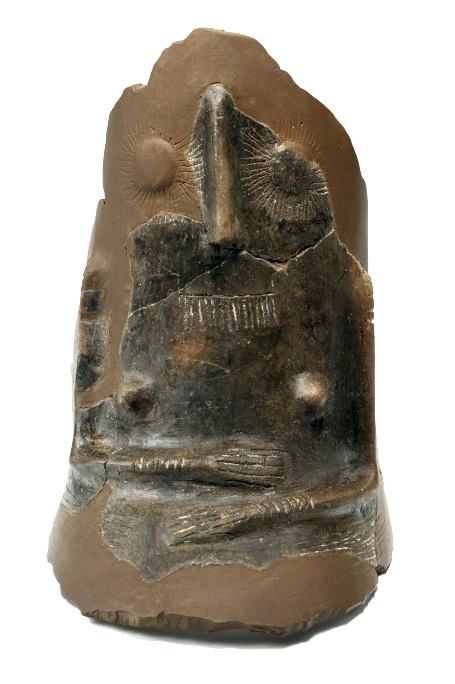
Hi everyone!
Today I am going to talk to you about one of the most exceptional pieces that we have in the first room of the temporary exposition
"Idols. Millennial Gazes." An exposition that collects more than 200 pieces from all over the peninsular territory to bring the different forms of human representation that were made during Prehistory closer to public, especially during the Chalcolithic period (4th-3rd millennium b.C)
The piece that I am going to comment on, is at the beginning of the room. This is the reproduction of the Venus of Gava, from the museum of that town, a representation of the Neolithic (pre-chalcolithic stage) that serves as a precedent and starting point for the idols of the Chalcolithic stage, main protagonists of the exposition.
Venus of Gava is a female human figure made of ceramic, found fragmented and incomplete in late 1994, in a pit in the Gava mines (Barcelona) that were intensively used and exploited during the Neolithic period. It is one of the oldest ceramic human representations in the entire peninsular territory since it dates from the 5th Millennium b.C.
As for the formal analysis of the piece, you can recognize the eyes shaped like the sun (typical representations of peninsular), the nose, a pendant shaped as a comb and the crossed arms arranged on the inflated belly, surely recreating a pregnant woman.
According to research, this magnificent and unique piece could be related to the fertility cult as a mother goddess, a very common ritual practice among the farmers and ranchers of our lands during the Neolithic.
By way of conclusion and to close this writing, emphasize the importance of this figure, since it has given us a lot of information about the beliefs and ritual practices of the Neolithic settlers in the eastern peninsula and about the type of anthropomorphic representations that were made in this period.
Carlos Pérez Soler. Guide at MARQ.
-------------------------back to menu >>
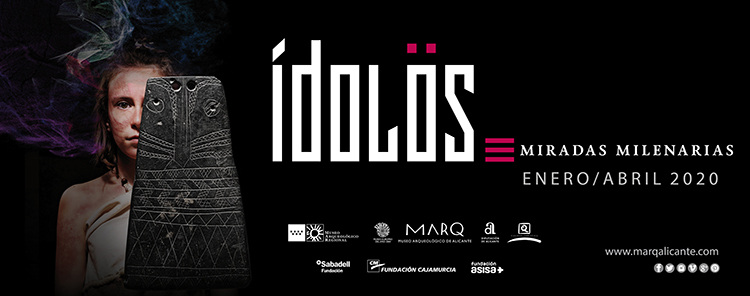
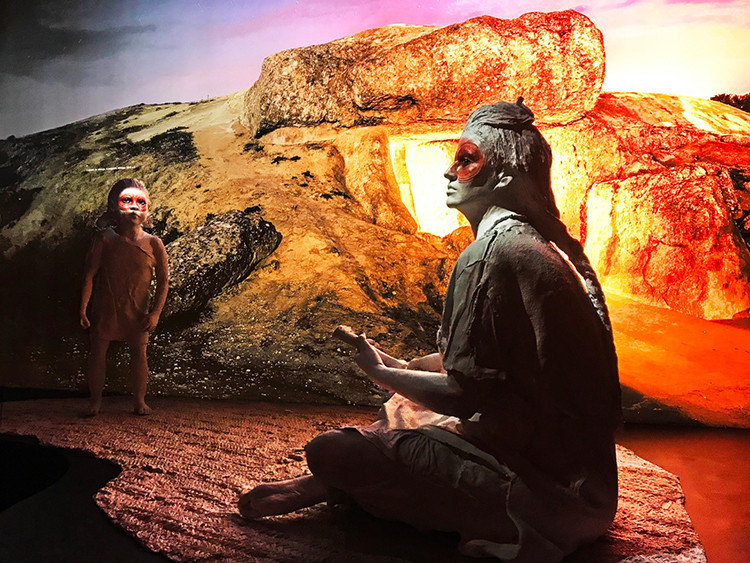
YOU CAN ACCESS FROM HERE THE MICROSITE OF THE EXHIBITION >> https://www.marqalicante.com/idolos
VERO from MARQ Arqueológico de Alicante on Vimeo.
Ídolos Museo 2403 from MARQ Arqueológico de Alicante on Vimeo.
Port guía 3103 from MARQ Arqueológico de Alicante on Vimeo.
....
Hello everyone!
Today in #stayhomewithMarq I’m going to talk to you about the idols found in the Province of Alicante. As we have already mentioned in previous articles and videos, idols are anthropomorphic objects made in different materials (mainly bone and stone) dated between the IV and the III millennium b.C. They are common in the southern half of the peninsular territory, there are two large geographical areas, where we find an abundant number of idols; the Atlantic focus (Portugal, Extremadura and part of Andalusia) and the Mediterranean focus (Levante peninsular, specifically, Alicante and Murcia).
In today's writing, as I mentioned at the beginning of the article, it is time to talk about idols found in Alicante lands. Firstly, we should emphasize that on the Levantine facade predominate idols made in bone (mainly phalanges and long bones of bovids and cases) and that most of these findings have been found in funeral contexts, mainly in collective burial caves, although a small numbers of idols have also been documented in domestic contexts linked at villages of the late Neolithic and Calcolithic, such as those found at the Niuet site (L'Alqueria d'Asnar)
As regard typologies, oculate idols on bone, hopper idols, tritriangulars, and exceptional ancoriform abound. All of them represent silhouettes of human bodies, anatomical features in a partial and very schematic way.
At the geographical level, Alicante idols are concentrated in the interior of the territory, mainly at the head of the Serpis River and its adjacent mountains, highlighting the tritriangular idols of Cova d'En Pardo (Planes), the oculated idols, on the bone of Cova de la Pastora (Alcoy) and the wonderful ancoriform, made in bone, found in the Cova De la Barcella (La Torre de les Maçanes) which is in room one of the exhibition. All of them have been found in collective burial caves (usual burial model in Alicante at the end of the Neolithic and early Calcolithic), where different types of wealth and variety have also been found, that have provided a lot of information about funeral rituals and the world of beliefs during this stage.
The territory of Alicante is very prolific in variety of typologies and number of idols, being one of the most important in the Mediterranean area. Thanks to all the findings and the research carried out, we can make it clear these kinds of known objects as idols would have a direct connection with the world of death and burials in our lands.
Carlos Pérez Soler, guide at MARQ
...
Hello dear friends!
As some colleagues have already commented, we can talk about a wide variety of idols from a typological perspective: phalanx and long bone idols, baetylus and stone cylinders, slabs and steles... Its shapes are regional modifications of the same meaning, the human body, engraving from simple outline to represent in sharp detail, which we could identify limbs, sexual attributes or personal ornaments.
But there is one aspect that consolidates all these typologies into a single group, a large face disproportionate to the body. The most expressive part is eyes, which are permanently open and normally radiated, evoking the star (eyes-suns). We wanted to observe everything from the representation of the eyes themselves - whether divine, human or animal - to astral motifs, related to the life cycle of nature. We can state absolutely the close link between the first soliform motifs in the Iberian Peninsula and first settlers in Neolithic times. These are people for whom agricultural cycle were essential, the Sun was an important issue in their worldview. In other words, like an “entity” thanks to life arose. In fact, caves with full of prehistoric paintings and burials in dolmen or tholos, are directly connected to solstices or equinoxes (by their orientation). Therefore, these radiated eyes represented in idols, referred to that solar cult arose in the Ancient Neolithic and go on in Chalcolithic age.
Furthermore, most researchers are linking idols to a cult of ancestors with the purpose of legitimating ownership over lands because do not know the writing. There is an old proverb which says "the eyes are the mirror of the soul" so, maybe, they have tried to capture ancestors to worship them. In addition, we can also find other features: curved lines interpreted as eyebrows -over the eyes, facial tattoos -under the eyes- or even masks. If we observe the current "primitives" (bushmen, ethnic groups from Amazon...) they will allow us to understand the way of thinking or behaviour. All these groups use body painting or ornaments as elements that give information without speaking, indicating status, group membership... Therefore, it is quite possible that the lines that appear under the eyes represented that face painting. But, were they tattooing? In 1991, German climbers found a freeze-dried body in the Italian Alps known as "Otzo, the Snowman”. His body was covered with tattoos, for example dots, stripes and crosses. Due to this find we can say that prehistory people wear tattoos. In addition, we know that they used body painting, like ochre and cinnabar. Many remains have been found in a lot of archaeological sites.
Ultimately, the technical detail shown by some idols as well as the presence of unique traits, suggests that they could evoke people rather than deities, following common codes in specific areas and becoming symbolic ancestors’ images.
That's all for today. See you soon friends!
Mª Paz Gadea, guide at MARQ.
....
Hello everyone!
Today in #QuédateencasaconelMARQ, I want to share with you my opinion about the initial room of the temporary exhibition that is currently in the MARQ: Idols. Millennial looks.
First of all, I want to emphasize that thanks to the subtlety used in harmonizing the ambient music with the dim lighting of the room, it has been possible to create an atmosphere that radiates mystery, thus awakening the curiosity of the visitor by bringing them closer to the exhibited pieces in order to analyze them carefully.
Personally, I am a great admirer of intrigue and in this case, the pieces play a fundamental role since there is a diversity between them, whether due to the shape, origin, color, texture, or some other characteristic.
The provenance above all is one of the things that most attract my attention. Who among you has never been surprised when contemplating a piece from your place of residence or origin? Who has not said to himself "Go, but if it is from my land"? Yes, some of these figures have been on this Earth for no more than 5,000 years, and it’s a real privilege to us to host them in the MARQ, a place recognized for its appreciation of Prehistory and History as a whole.
Another part of “Idols. Millennial looks” more acclaimed by visitors, are the models located in the central part. In them, there are scale reproductions of the set of samples exhibited in the showcases, being in my opinion an ingenious, attractive and creative way of summarizing the content of the room.
To conclude, I would like to underline that this exhibition has a second room that we will analyze soon, so continue to be very attentive to our social networks, because the journey through Prehistory continues! ;)
Regards!
Nerea Cuba, public attendant at MARQ
....
Hello everyone!
Today I'm going to talk a little bit about the new exhibition of IDOLS, MILLENARY GAZES and what it transmits to me.
In my opinion, this exhibition seems to me to be very complete with regard to any kind of detail, because they have not overlooked anything. I must mention the magnificent layout of the rooms, the decoration, the music that accompanies it...
One of the things that I would highlight, since it called my attention when I was able to see the exhibition, were the two sculptures that are at the beginning of the itinerary. It's about a woman and her daughter and as soon as you see them, you can imagine and be transported to that time because they are two very real figures. The magnificent facial tattoos on these sculptures are remarkable, as they are very striking, as is the wonderful background that accompanies mother and daughter, I must also say, the expression on their faces makes them look like flesh and blood.
In conclusion, this exhibition is worth a visit and to know a little more about it, since it helps us to know the way of life of our ancestors in the Iberian Peninsula and thus to be able to travel in the time and to know a little more.
Lidia Alcázar, public attendant at MARQ.
-------------------------back to menu >>
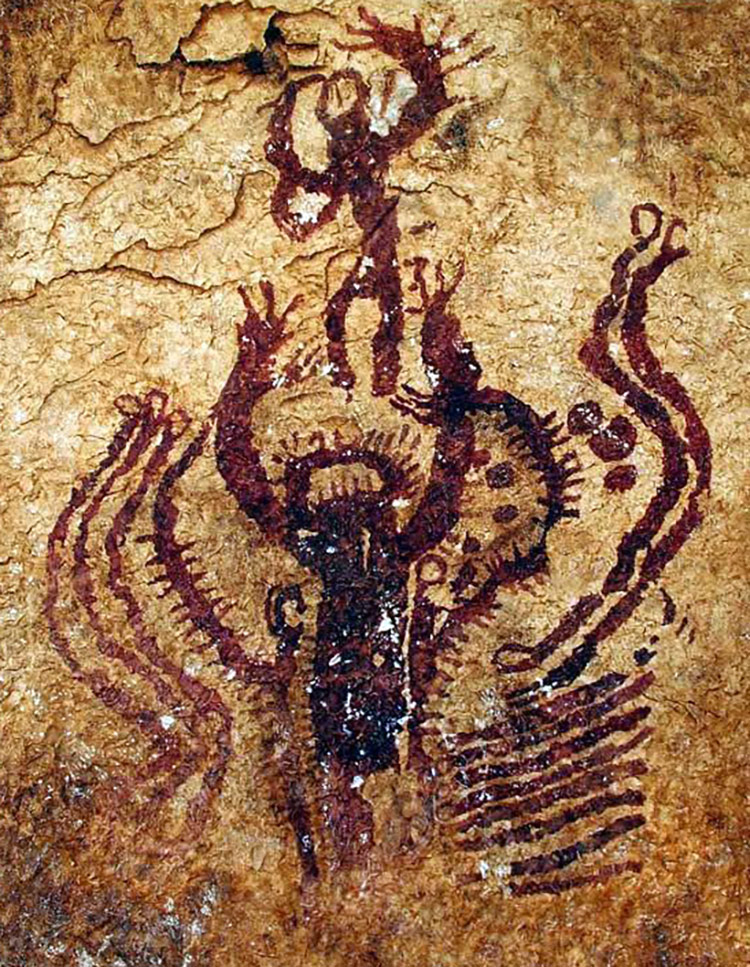
¡Hello everyone
Today in #stayhomewithMarq I'm going to talk to you about my favorite piece in the permanent exhibition, but not before saying that it's very difficult for me to choose one in particular because each room has incredible pieces with an incalculable archaeological value.
Due to its spectacular nature and artistic value, I will keep the recreation of the cave painting of the ‘Orantes’ of the Pla de Petracos, located at the end of the Prehistoric room.
This painting is one of the most characteristic of Macroschematic Art, a type of cave art belonging to the Ancient Neolithic that can only be found in the mountainous interior of the Province of Alicante and the south of the Province of Valencia and is linked to the first farmers of our lands.
‘The Orantes’ scene is located a few kilometres far from the town of Castell de Castells (Marina Alta) in Alicante, in the so-called Sanctuary of Pla de Petracos. The painting is located in the middle of a group of coats in which we can also find different motifs characteristic of the purest Macroescheamatic style. The representation that occupies us in this writing, is composed of two human figures in attitude of prayer (of request or supplication) to ask for good crops, these would be represented by the artists of the Neolithic through serpentine motifs, also very common in this type of prehistoric art. The representation has a religious character since it is a ritual scene linked to the fertility of the land and the religious world of the first farmers located in our land around the 6th millennium a.C.
In short, the Sanctuary of Pla de Petracos is one of the most important sites with cave paintings in the entire Valencian Community. Your visit is a magnificent opportunity to get to know and enjoy nature and prehistoric art in a privileged environment.
Carlos Pérez, guide at MARQ.
-------------------------back to menu >>
'Mayas. The mistery of the lost cities.'
A great sample made of over 200 pieces, mostly from the National Archeological and Ethnology Museum of Guatemala, and two guatemalan institutions that fight against the plunder to preserve the memory of this millennial culture: The Maya Foundation and The Neria Herrera Collection from the Juan Antonio Valdés Museum.
I have to thank for being lucky to participate in it, transporting and submerging visitors
in the jungle (origin of this incredible culture), touring its myths, legends and history thought this exceptional collection of pieces.
Besides, in each room we could walk through temples and monumental palaces to finally travel to Xibalba, the underworld, where The "Jaguar Man" was shown; a sculpture of a sacred feline on the prowl, which bring us closer to the supernatural Maya world.
Visit this museum turned into a completely sensorial experience thanks to the impressive exhibition montage and the monumentality
of the pieces.
Visitors made their way through the jungle
and the temples, while they listened the roar of the jaguar and howler monkeys marking territory or they could perceive the smell of the wild vegetation and the cacao, the money
that grews on the trees.
In conclusion, visit the MARQ means open a door to the past, where also we can find the History of the future.
It is time to remember the wisdom of our ancestors, and because of that, I want to tranfer to you this thought:
"Everyone get up, no one left behind,
not one or two of us,
Everyone."
Popol Vuh (Sacred mayas book)
Mª Paz Gadea, guide at MARQ.
……
Hi everybody!
Today in #StayathomewiththeMARQ, we are going to travel through to the time to remember an exposition that not only dazzled because of its marvelous sculptures, but also its history and culture.
We are talking about 'Mayas. The Mystery of the lost cities'.
In this exposition, we can saw how this pre-columbian civilization established a magic connection between the cycles of the nature and its sacred world, through some crops like the cacao or corn kind, this first also turn into one of their gods.
It was a valuable collection of over 200 pieces that decorated our showcases of the temporary rooms, where we contemplated the beauty of sculptures such as The Man with Jaguar Tributes, the Stele 1 of the Amelia or the Stele 89 of Calakmul.
Hi everybody!
Today in #StayathomewiththeMARQ, we are going to travel through to the time to remember an exposition that not only dazzled because of its marvelous sculptures, but also its history and culture.
We are talking about 'Mayas. The Mystery of the lost cities'.
In this exposition, we can saw how this pre-columbian civilization established a magic connection between the cycles of the nature and its sacred world, through some crops like the cacao or corn kind, this first also turn into one of their gods.
It was a valuable collection of over 200 pieces that decorated our showcases of the temporary rooms, where we contemplated the beauty of sculptures such as The Man with Jaguar Tributes, the Stele 1 of the Amelia or the Stele 89 of Calakmul.
We also discovered the hieroglyphic language through out the Stele 1 of Cacuen, differents styles of censers or artistic wonders like The Mask of Jade.
Is worth highlight the perfect and garish setup of the rooms, being that we could feel the greatness of the pyramids, the depth of its temples and the cold of the underworld.
Although it is known as a lost civilization, its cities keep many mysteries and thanks to this exposition, its memories keep enduring through the time.
See you all soon!
Cristina González, public attendant at MARQ.
-------------------------back to menu >>
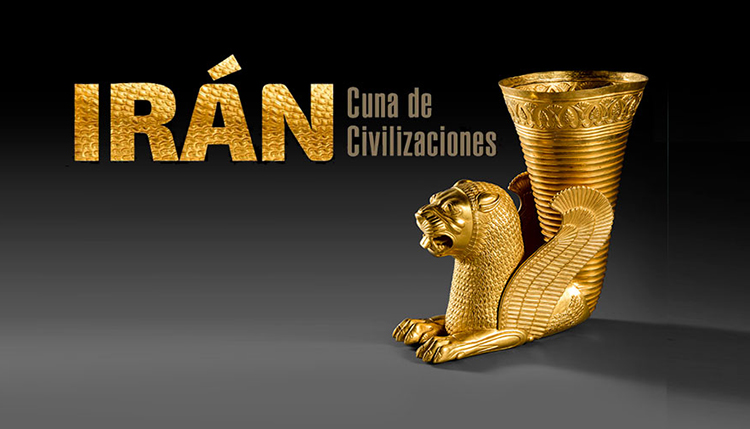
Hello!
The temporary exhibitions housed in the marq are an opportunity to bring the visitor a little piece of our history and even help us to get to know distant cultures without having to move from Alicante. Furthermore, for us as guides, it is an unparalleled opportunity to deepen and make us aware of different cultures and civilizations and this be able to bring the individuals who lived in other times and made and used the pieces that can be seen exposed in our rooms to all our visitors.
Therefore, it is true that all the exhibitions of the marq, because of its exhibition setup and its content are spectacular, but if I have to choose just one of the temporary exhibitions, I will certainly choose the exhibition of “Iran, Cradle of Civilizations”, since for me it is very special, because it is the first temporary exhibition I have guided in this museum, and therefore I have a special affection for it. It also meant that I was faced with new challenges, such as being able to talk about a country as vast and rich in history as Iran, taking a tour from prehistory to the 18th century in just one hour, and trying not to leave the visitors totally ecstatic.
But in addition to helping me overcome these challenges, the exhibition took us on a journey through time in which we could understand how such important inventions for humanity as writing came about, since the first room housed a buzz. The bullae are clay balls with tokens inside that served as a kind of contract, where to record a commercial transaction, and this system was the germ of writing. Once this was known, our journey continued with the empires of which Iran was a part or which originated in this current country, such as the Achaemenid Persian Empire, an empire that between myth and truth left a record of pieces, monuments and cities that make us see its power and wealth as the golden rhythom of Hamadan.
A vase in the shape of a winged lion which had a liturgical use and which we found in the apse of the second room. He even took us back to the birth of a religion such as Islam and how it came to spread its faith to the Persian lands, since in the third room we found a 16th century Koran. And our journey ended in the 18th century when the capital of Iran changed from I-sfahan to Tehran, the current capital of Iran.
So that you can get hooked on this exhibition like me, I leave you the link to the video of “Iran, Cradle of Civilizations”. https://vimeo.com/323666071
Davinia Llopis, guide at MARQ.
-------------------------back to menu >>
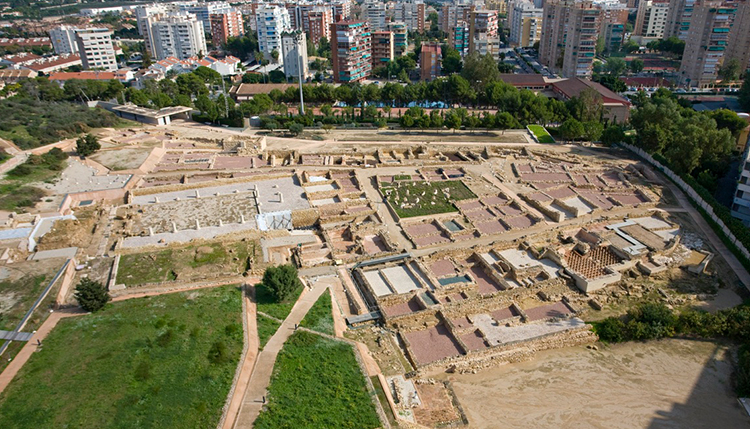
.....
OVERVIEW
Hello everyone!
Today, we want to show you a little bit of one of the most extraordinary places that MARQ offer us: the archaeological site of Lucentum.
Lucentum, often called Tossal de Manises, is located in Albufereta’s Bay at northwest of the current city of Alicante. Traditionally, it has been considered the scene of meeting of different mediterranean cultures, which found in this area an ideal point to settle and develop their commercial activity. This privileged location justifies the large number of archaeological remains that have been found on the five hectares that currently occupy the site. This extension is smaller than it should have been at its origin due to the urban pressure exerted on the environment.
There, we can find two different phases of occupation (Punic and Roman), in addition to the remains of an old Islamic cemetery (maqbara) dated between the 8th-10th centuries AD. The first ones coincide with the existence of a Carthaginian military detachment, which was active between the III-II centuries BC. This coincides with the time when Carthage and Rome faced each other in the great historical episode known as the Punic Wars. Some projected structures stand out to defend the town from Roman artillery.
Thanks to the archaeological campaigns directed by Enrique Llobregat in the eastern sector, we are aware of the existence of a section of wall, several hollow towers and a gate. All these elements are indicators of the Carthaginian presence and the contact that they had with the local indigenous culture, but also of the consequences of the conflict. This is confirmed by the appearance of catapult bullets.
With Rome's victory after the Second Punic War these structures abandoned their original function and acquired a monumental sense. This is how the city of Lucentum was born, a key point in the eastern peninsula perfectly integrated into the network of roads and secondary branches of the Via Augusta.
At the end of the 1st century BC the new city underwent a dramatic transformation under the Julio-Claudia dynasty. At this moment, houses, commercial and religious buildings were installed in the streets. We will highlight the Roman baths and the forum. There are currently two baths: the Popilius baths (in honour of Marco Popilio Onyx, who financed his improvement), and the baths on the eastern wall. Both were equipped with a sophisticated heating system.
The forum represents the heart of the municipality. In it we recognize the local government and the religious power (consecrated to the Imperial Cult). The great protagonist of this singular space is the one known as Mano de Lucentum, a unique piece in the world that has been guarded by MARQ since its discovery in 2005.
Finally, all those who visit Lucentum have the possibility to know its history better through the museum's permanent exhibition, where you can find some objects that will help you to understand the daily life in the city until the moment when it was abandoned in the 3rd century AD.
Be sure to follow us if you want to know more about our heritage!
#StayathomewithMARQ
Anabel Castro, Guide at archeological sites.
....
RESTORATION PROJECTS
As in the site of Illeta dels Banyets, in the 90's Lucentum began a range of restoration projects for museum exhibition. As a result of this reform process, the available space was adapted as an archeological park, which becomes one of the most important archaeological sites in the Valencian Community.
As you can see on the Illeta, various colours of gravel are employed, with each colour coded to denote the function of the space that is covered and protect it. That allow us to differentiate between different areas. However, coloured gravels and their meanings vary from one archaeological site to another.
The colours are the following:
- Yellow for defensive area, walls and the towers.
- White to distinguish public spaces, such as streets and some tabernae.
- Blues to identify the cisterns and the sewerage system/ cloaca.
- Grays for the Maqbara (Islamic necropolis).
- Red to identify Roman houses.
- And browns or dark reds to represent areas destroyed by fires (pre-Roman dwelling of Carthaginian origin).
If we compare the colour code on both sites, we will see that they coincide in blue to represent the water storage, while the rest are different.
Enjoy the museum at home>>
#Istayathome
Beatriz Bueno, guide at Lucentum
....
GUIDES VISITS AND WORKSHOPS
In sites such as the Tossal de Manises and the Illeta dels Banyets, all year round there are guided visits to all kinds of groups, especially during the winter season, whether they are school children, university students, different associations, or families during the weekends in guided passes, at the scheduled times; reason why we have a very varied public and in this way there are guided tours adapted to any of them.
Something interesting is that for the smallest, or school groups, during the winter excavation workshops are carried out using a medium-sized “box”, as we call it; where some pieces or examples of materials found are placed and through a sheet to fill in and some utensils provided to the students, they can carry out excavation work so that they can see with their own hands, what field work is like and they can realize how important is the conservation of these findings, the value of archaeological remains, the history itself, and the subsequent conservation and enhancement of the resources they have in their city.
For the groups of students who visit the sites, these types of activities are very interesting and fun, since every day as a guide to the site, I see the students leave very happy for everything they have learned both on visits and in the work done in the workshops by my colleagues.
All this done through the MARQ teaching department and the colleagues from that department, who are in charge of carrying out these educational workshops and in a didactic way, show the little ones a very important piece of what they have formed and continue somehow being part of our city, making the work more attractive to the little ones
#IstayathomewiththeMARQ
Anabel Castro, guide from MARQ at archeological sites.
....
MESURES TO MAKE LUCENTUM ACCESIBLE
Hello everyone!
Today, I want to show you how the archaeological site of Lucentum was open to the public and what measures were implemented to make it accessible to all visitors.
First, I will tell you that preserve the archaeological site was a hard struggle because the area had a great potential from urbanistic and touristic point of view. However, thanks to the efforts of some people this archaeological site finally was preserved.
In 1990´s archaeologists started to rescue the historical remains.
In 1998 Lucentum (often called Tossal de Manises) opened its doors to the public after being valued by the museum and the architecture area of Diputación de Alicante.
This space was adapted in order to everyone could visit it easily. Several access ramps for baby carriages and disabled persons were constructed.
Numerous objects found there are on display for the visitors in the permanent exhibition of MARQ, such as ‘the bronze hand’ or some ceramic pieces.
Be sure to follow us if you want to know more about our activity! In the meantime, rest at home.
Enjoy the museum at home >> https://www.marqalicante.com/Paginas/es/El-Marq-contado-por-sus-guias-P622-M1.html#lucentum
#Istayathome
Alexis Becerro, public attendant at archeological site of Lucentum
.....
IBERIAN PRESENCE AT LUCENTUM
Hello!
Today I would want to talk about the iberian presence close to the archeological site of Lucentum.
After several studies carried out by the MARQ and the excavations conducted under the supervision of Don Manuel Olcina Domenech, director of the Alicante archaeological museum, they reveal that an Iberian township located in the Tossal de les Bases, may have settled near the Tossal de Manises.
The Tossal de les Bases is an archaeological site located about 300 meters from the Tossal de Manises and it´s extension is about 3.5 hectares.
In it remains of the oldest and most prehistoric tribes of the city of Alicante have been found, developed during the bronze age in the Neolithic period.
Some time later, an Ibero township developed during the 4th and 5th Century b.C. would stay this same area. This town would be surrounded by a great walls, of which only the remains of the walls of said fortification have been found.
The inside of the fortified area was divided into areas whose distribution is delimited by streets. In some of them remains of buildings for the storage of the products have been found.
To the south of these storage sectors, it has been possible to verify the existence of primitive ibera period.
Another of the discoveries in this area was the Iberian cemetery, in which almost a thousand tombs were found.
Near the wall, remains of areas dedicated to artisan work have been found, linked to pottery and silver metallurgy.
A very interesting find in one of the rooms near the Albufereta, was to find fragments of terracotta warships, since according to some historians they indicate clear evidence of the existence of a naval sanctuary.
Remains of some pieces were also found, since apparently this enclave had been intended for the exploitation of resources from the environment and also for the importation of other products.
Elena Noguera, guide at archeological sites.
.....
MAQBARA
Hello everybody!
Today I’d like to talk you about the archaeological site of Tossal de Manises (Alicante) and, specifically, about the maqbara or islamic necropolis that was built over the remains and ruins of the roman city of Lucentum. The necropolis was excavated in different archaeological campaigns, like those carried out by Lafuente Vidal in 1931 and 1932, or others that were effectuated by Figueras Pacheco between the years 1934 and 1935. These first archaeological campaigns were paralaized by the civil war outbreak and they will not restarted until the 50s and more recently, during the research, consolidation and enhancement project.
From the second century AD, Lucentum began a slow process of decline that would culminate in its final abandonment in the third century AD. This is a time when there was an important process of ruralization in the area, that is, many people moved to live in the countryside, but on the other hand, a large population contingent settled in other more prosperous cities, such as Ilici (Colonia Iulia Ilici Augusta, Elche), which was a colony and, therefore, paid less taxes to Rome. In addition, it was very well connected both by land - since the Via Augusta, considered the "Mediterranean highway" of antiquity, passed by it - and by sea, because it had a large port open to the Mediterranean Sea, located in the present Santa Pola-.
Although there has been documented a recurrent frequentation of the area in the high imperial / late antiquity era, it will not be until the first moments of the Muslim domination when a new occupation of the place takes place, but not for alive people but for the deceased, because a maqbara or Islamic necropolis was created, that was in operation from the eigth century to the tenth century AD, according to the data obtained.
The location of the maqbara in this precise place is not something casual, but obeys a series of common features in most of them; This is located on a hillside and is related to water points, although at present, the visual relationship between the maqbara and the coastline is distorted, due to the enormous urban pressure suffered in the area, mainly because of the housing boom derived from the emergence of sun and beach tourism. Obviously, another point related to the location is the necessary proximity to some habitat nucleus, in its proximity or next to their access roads, an issue that hasn’t at the moment, due to no population nucleus has appeared in the surroundings. It is possible that they were the inhabitants of a small rural settlement or even a nearby farmhouse. Regarding this topic, we can obtain certain information from the anthropological analysis of the skeletal remains, which, in this case, indicate that these people probably worked in the field and lived from it.
On the other hand, the total number of tombs located is one hundred and eight people buried in accordance with the Muslim rite and another, curiously, associated with the Christian rite. Anthropological analyzes have revealed that she is an adult woman and, although she does not fully conform to the grid, Islamic graves not only respect this burial, but also that it is surrounded by Muslim child burials. Hypotheses such as kinship or mortuary tradition are considered in the area, although we don’t have sufficient data to explain this phenomenon.
This type of necropolis is usually completely parceled, with an arrangement of the tombs in a grid and a dominant orientation southwest-northeast of the tombs, establishing a kind of streets or roads - longitudinally and crosswise - designed not only to facilitate the transfer of those who came to visit the graves of their loved ones, but also to facilitate the funeral processions.
If you want more information, I recommend you the book "The Islamic Maqbara of Lucentum", a publication by our colleague Enric Verdú Parra, technician at MARQ.
https://www.marqalicante.com/Publicaciones/es/LA-MAQBARA-DEL-TOSSAL-DE-MANISES-ALICANTE-P64.html
I hope you’ve enjoyed this article. Greetings. See you soon.
Mª Paz Gadea, guide at MARQ
....
ARCHEOLOGICAL SITES THANT WIN YOUR LOVE
#Didyouknowthat… Tossal de Manises like the Illeta dels Banyets, are two of the most important and visited tourits attractions, not only in the province, but in the entire Valencian Community.
These sites are full of stories and legends, from prehistoric times, passing through the MARE NOSTRUM with other cultures such as the Phoenicians, Greeks, and Carthanigians among others, also indigenous and tribes, adopting in this waynot only objetcs subsistence and decoration, but cultures and other customs.
For this same reason both sites become emblematic sites, but not only at a tourist and historical level for the population or tourists interested in the evolution of our lands, but also for the enclaves in which they are located, thus becoming places for photographing or where you can enjoy, not only in groups, individually, or with your family, but also as a couple.
We, the workers of the archaeological sites, the guides, as the partners of attencion to the public and the partners to security, we have been witnesses on some occasions, even to ask for hand in marriage, inside our archaeological places, photographing these iconic places in our province, so that in indirectly the couples have made us participate in their own celebration.
That is why we see that these historical places, also fall in love and for this reason we as workers of these sites, we feel happy and satisfied that people know how to appreciate these beautiful places in our city.
Beatriz Bueno, guide at Lucentum
....
ALL ROADS LEAD TO ROME
#Didyouknowthat… The civilization of the Roman era was the first to consider the construction and creation of roads and communication routes between towns, cities and access to them.
It is estimated a creation of more than 140.000km of road that connect with each other having the epicenter and cultural, commercial and political centre in Rome. This is where the popular saying comes from “all roads lead to Rome”.
This type of construction would also allow military control and commercial development of the cities, converting and understanding Rome as state.
One of the main roads of the Roman period, which cross Spain is the known “Vía Augusta” almost certainly due to the interventions and modifications that were carried out on this road in the time of the Emperor August.
This road has a length of approximately 1.500km, which runs through the entire Peninsula, from the Pyrenees to Cadiz and bordering the Mediterranean coast.
Beatriz Bueno, guide at Lucentum.
.....
THE PRINCIPAL WAY OF LUCENTUM
Did you know that… On 2017, during the annual excavations carried out in July, archaeologists located the main via of a Carthaginian settlement at the same place where later was built the roman site of Lucentum, located in Albufereta bay.
This discovery was an important fact, because revealing the existence of an urban development corresponding to a first human occupation. Different preferences were expressed regarding this place, specifically if this was a punic settlement or a military camp. Finally, this area was considered the first thing.
According to Manuel Olcina, director of the archaeological museum (MARQ), Antonio Gilabert and Eva Tendero, team members of the archaeological project, this discovery was fundamental to reconstruct the history of this place and understand it their social context. In this sense, it has also been confirmed that the punic entrance was the continuation of the main street.
As we have said previously, this entrance has not yet been excavated, but it will be explored in the future.
Then, this route would be the most important connection with the other areas. For this reason, we could talk about an urban planning. All different capes of paving localities may indicate it certain reform regarding this kind of main street.
Every year the archaeological sites of the province of Alicante offer us extraordinary discoveries about our history through different works and archaeological campaigns.
Beatriz Bueno, guide at Lucentum
....
ROMAN VILAS
#Didyouknowthat… The Roman villas also called “villae”, would be located in the so- called suburban neighborhoods or on the outskirts, that is, they were outside the walled cities but close to these and the ways to be well connected.
They were similar to a current country house, that is a large house with lands.
In Lucentum most of the towns near the city, disappeared throughout the III century with the evident decline of the main city.
Despite this the remains of a villa appear in the “Parque de las Naciones” near the main city.
But just as it happens with the rest of the Iberian and Roman remains, with the constructions carried out in the Albufetera. Many elements that are part of the history and context of the site are being removed, such as: oil mills, facilities for the production of fish, presses for wine, the villas among them, the necropolis, production areas, etc.
It was also cultivated areas for later production and marketing or own supply (pars rustica), so the villas had a large plot of land and different rooms, that is, the owner´s house (urban pars).
Near the Tossal de Manises, and the Tossal de les Basses, two villages were located for the production of oil and wine, this is known by the presence of a “torcularium” and in addition to the oven for that use.
The owners for these villas, were normally those who belonged to the richest classes of the population. Their wealth came from rents that they obtained from the exploitation of agricultural extensions and areas.
The owners of the villas moved to them seasonally to control the work and production that was carried out in them, in addition to resting and having fun but without depriving themselves of the same luxuries as they had in the main homes in cities.
Therefore, it could be said that they are like the second homes that some people have in our current society.
In other words, we can get an idea of what those villas would be like since they are very similar to our current country houses.
Anabel Castro, guide at Illeta.
......
ROMAN BATHS
#Didyouknowthat… Two buildings dedicated to baths and hygiene care have been found in the Tossal de Manises site, that is, we can see two Roman baths. All the Roman cities, although they were poor and had a lesser size, always had this kind of buildings due to the importance they had for the Romans and curiously in Lucentum we find two.
Some have been named as the thermal baths on the wall, these are more spacious and modern and are very close to the main defensive zone, so the name that has been given to it.
The others, on the other hand, are there so- called termal baths of Popilio, due to the discovery of the bank in the shape of “T”, by Popilio Onix, which was located inside it.
These finally would be the oldest thermal baths in the site, and of a smaller size.
Beatriz Bueno, guide at Lucentum
....
THE ROMAN INSULAE
#Didyouknowthat… In Roman times the blocks of houses were called “insulae”, normally for rent for those citizens who couldn´t afford to have their own home, such as the “domus”.
Normally, the commercial premises called “tabernae” were built at the bottom.
The insulae were built with bricks and mortar, if with think about it, it would be something very similar to the current buildings, where we find the commercials premises below and the houses above.
But unlike today, with the penthouses, at that time the poorer and more modest, the citizens were located above the building.
In the Tossal de Manises there are some examples of insulae but, where they are best preserved is in the city of Rome, very close to the Capitol.
Beatriz Bueno, guide at Lucentum.
....
THE VIEW POINT OF LUCENTUM
#Didyouknow… At the site of the Tossal de Manises, at the highest point of the ancient Roman city, there is a viewpoint, above the famous Roman mosaic.
From the Lucentum viewpoint, one of the most beautiful points apparently of many people who visit us, you can see the geography of the entire area that is forming the Albufereta and that has been changing over the years.
Panels are placed at the cardinal points with images of the geographical profile of the Roman and later times and the comparasion with today.
Today you can see the buildings and part of the Tossal de les Basses, that other site named on another article.
From the top of the beautiful viewpoint, you can see part of the coast, today covered by large buildings that have been hiding the site between them.
We can distinguish and compare thanks to the information panels, the evolution of the environment and the geography of the place that surrounds the site of the Tossal de Manises, giving us an idea of what it would be like in Roman times or even in the XVI and XVII centuries that coincide with the expansion from the Alicante orchard, so also as we can see many of the defensive towers of that time and what would be part of the Alicante orchard, it is still preserved despite the plundering in the entire Albufereta area.
These defensive towers, were built to defend against attacks by Berber pirates, some already completely disappeared and others preserved in places such as Santa Faz or La Condomina, in addition to those that we can see from the Lucentum viewpoint.
Beatriz Bueno, guide at Lucentum
....
#Didyouknowthat… The word Ornatrix means adorner, although it would also be said adorner as ornator.
They were people designated as slaves existing in Roman and Greek times.
They were in charge of the care and styling of their master in the homes of the richest population. In addition to hair care and styling, they could take care of the body decoration, thus concealing some defects, using perfumes, jewelry and dyes.
Ornators also came into existence for the servants of some wealthy houses so that they were also elegant, especially when it came to hair, since this was a great luxury.
In the same way that it became customary to decorate the statues of the idols coming to be encrusted with jewels.
Beatriz Bueno, guide at Lucentum
....
SIGNS OF A GREAT WORK
#Doyouknowthat... As you well know, we have already spoken in previous articles about the work carried out and the so important enhancement that has been carried out in the archaeological site as in Lucentum and La Illeta dels Banyets.
But today I would like to tell you something curious. When you visit these archaeological sites, if you look a little, you will find in some of the walls or houses, among the stone slabs, identification plates, with arrows and specific years.
These plates would be indicating the intervention works carried out where the plates are located, qualifying with the arrows and the years, all that work carried out and even differentiating the different materials between the intervention work and the vestiges originally found.
....
THE ROMAN FORUM
#Doyouknowthat…The Roman forum is a public space where different public buildings are housed, with entities such as civil and religious that is, buildings within the forum of great importance to citizens in Roman times.
Did you know that the word “forum”, can also be translated as “square”, and this word comes from the Greek term “plateia”, designating it as a very wide street and a meeting place and political area.
In this place government matters were decided, part of the commercialization and exchanges were also carried out, therefore the square or plaza would also be used as a market area, (exacly the same as today), and as a place to deliver justice or free slaves.
In this same place, being the central axis and nerve centre of the city, it was also possible to carry out acts or events for the rest of the population, even within an amphitheatre in small cities, such as the example of the city of Lucentum.
In this forums or squares temples were built and they could even be decorated with colums that surrounded the enclosure and in this way the entire forum was delimited, and as in the example of the city of Lucentum, large bronze statues were placed representing someone important from the city, giving way to the square so that the population when walking through the central area and seeing said statue remembered that the representation that was made, was of a person with a prominent role in the city.
In the Lucentum forum, curiously, apart from the bronze remains of a statue, it is also thought that a triumphal arch might have existed on pedestals just at the entrance to said square.
Beatriz Bueno, guide at Lucentum
.....
CULTURAL FESTIVALS IN LUCENTUM
#Doyouknowthat… At the Tossal de Manises site, LUCENTUM, there was a time when it became a cultural site, not only because of the archaeological remains themselves, but also because of the activities that were carried out there, made by Diputación Provincial de Alicante, in summer specially.
Among the findings and the remains of the city of Lucentum, jazz concerts have been held, among others, and summer festivals such as dance or even theatrical shows, which have generated enormous diffusion among the citizens of Alicante.
Not only at that time, but today, even years later, people still go to the site, asking about the concerts or the "famous galas", as they were known by many; for your enjoyment and in this way attract culture in every way, in a spectacular setting and one of the most important sites in the Valencian Community.
Nowadays, from MARQ and the Diputación of Alicante, we try to start with these festivals, more than our Historical Recreation Lucentum Reviviscit, that this year will run its 5th edition.
Beatriz Bueno, guide at Lucentum.
.....
THE GATES OF LUCENTUM
#Doyouknowthat… In the Lucentum site, two entrances have been found, one of which is the so called “Eastern door” that led to secondary road or way that reached the Via Augusta to communicate the other entrances to other Roman cities and towns. This road runs through our lands the valley of Vinalopó River. From the Novelda and Aspe area, a branch was born that went through Agost and San Vicente del Raspeig until reaching the old Lucentum.
The other door, still pending exhaustive excavation work, opened onto a fishing port for supply, use of natural resources close to the city and for its subsequent commercialitzation, which communicated with the bay although with great competition, such as Portus Ilicitanus, therefore after a few years, the anchorage of Lucentum entered into crisis with the disappearance of that city.
Although, it is said that in Iberian times a small jetty already existed in that same place.
In the muslim and low medieval- crhistian era, the port activity was transferred to a new enclave were the city would be located, that is, on the slopes of mount Benacantil. Through the seaway, not only food products and ceramic products or other material were exchanged, but ideas, customs, religions and cultures have been exchanged throughout history. As the city grew so did its port. The Mediterranean and the needs are modifying and creating the city and its port.
Throughout all the historical stages through with the city of Alicante has passed, it is shown in every corner of the remains found, how this coastal city has always taken advantage of and has had a very important relationship with the Mediterranean Sea.
In other words, the city of has always been linked to the sea, not only for leisure as it is known today, but for its use, and a key link with other cities and towns through the so-called Mare Nostrum.
Beatriz Bueno, guide at Lucentum.
....
SEWER NETWORKS
#doyouknowwhat...
In ancient Rome, was built one of the oldest sewer networks in the world, the `Cloaca Maxima’, which was used to drain local wetlands and remove the residual remains out of the urban area. This system carried a tributary to the Tiber River, which flowed alongside the city.
This name literally means `Greatest Sewer’ and according to tradition began to be built in 600 BC by order of the king Tarquini Prisc.
Thanks to the archaeological works out in the city of Lucentum under the direct supervision of the director of the MARQ, Manuel Olcina Domenech, we know that there was a sewerage system. It should be modest and circulated through the center of some of the most important streets.
To date, only a small part of the sewer system has been possible to known. This network crosses the middle of Popili Street and simultaneously connects with the Roman Forum.
In addition, there was a transverse branch, which collects rainwater from the central area: the square. Likewise, the last part of the Domus of the peristyle and the one of the street of the chambranle connects with a wider section, known as the collector. Finally, there was also a branch in the wall north of the East Gate.
Then, all walls were made of masonry and lime mortar, blocked to large and irregular slabs. These pieces had circular holes covered with a set stone. They functioned as a damper as well.
This sewer system changed the last channelling of Popili baths. For this reason, there were different heights that lead to some homes or ‘tabernae’ had to change their thresholds and building stone stairs to access the lower level. As a result, the pavement remained unchanged after the elevation of the street due to the construction of the sewer under the main street.
Enjoy the museum at home>>
#Istayathomewithmarq
Beatriz Bueno, guide at Lucentum.
.....
FOOTWEAR
#didyouknowthat... In Roman times, regarding footwear that was uses, there was no great difference between male and female, but women´s shoes were made with softer skins, of varied colors and more ornate.
Footwear as now was used according to the climate and the activity. There was a great variety contrary to what is thought, there were from boots and shoes to the famous sandals.
Many of the footwears used by the Romans were partly adaptations from other cultures. For example, “calcei” shoes come from Etruscan tribes and sandals without a doubt from Greece.
The material that was used the most was leather due to its resistance and flexibility.
As in clothing, there were designs in footwear for the everyday and for the extraordinary (showing elegance and social class).
It was common to see women in sandals decorated with fine pearls and gold ornaments during the history of Rome.
TYPES:
The sandals “soleae”, were worn at home or in good weather or also for the soldiers and workers.
The clogs “socci”, when it rained.
The shoes “calcei” were reserved for great occasions (citizen should always wear them with their toga).
And the sandals for the army called “caligas”.
Another kind of minor footwear was that of slaves, a kind of “soccus” clog.
The footwear was made by the “calceolarius”, the shoemaker.
Depending of the skill, of the work that was carried out, on the quality of the materials, the price was established just as today, the higher the quality, the higher the price.
As we can see there are things that have not changed much since Roman times until today.
Enjoy the museum from home at >> https://bit.ly/2vTfJekk
Beatriz Bueno Redondo, guide at Lucentum.
....
MONETARY TIPS
#didyouknowthat... The monetary circulation in the Tossal de Manises is characterized by the bronze coin belonging to the Empire of August between XIX- XV b.C. with emissions of different value:
Sesterces
Dupondios (value of half sesterce)
Ases (half dupond value)
Semises (average value Ases)
Quadrants (half semis value)
There were also silver coins, the Denarius (it was worth four sestercios), and gold coins like the “Aurio” whose value was 25 Denarious.
This monetary system was in force until the 3rd century d.C, when the new currency the “Antoniniano”, appeared replacing Denarius and Sesterces.
Enjoy the museum from home in >> https://bit.ly/2vTfJek
Elena Noguera, guide from MARQ at archeological sites.
.............
#didyouknow... As in the site of Illeta dels Banyets, in the 90's Lucentum began a range of restoration projects for museum exhibition. As a result of this reform process, the available space was adapted as an archeological park, which becomes one of the most important archaeological sites in the Valencian Community.
As you can see on the Illeta, various colours of gravel are employed, with each colour coded to denote the function of the space that is covered and protect it. That allow us to differentiate between different areas. However, coloured gravels and their meanings vary from one archaeological site to another.
The colours are the following:
- Yellow for defensive area, walls and the towers.
- White to distinguish public spaces, such as streets and some tabernae.
- Blues to identify the cisterns and the sewerage system/ cloaca.
- Grays for the Maqbara (Islamic necropolis).
- Red to identify Roman houses.
- And browns or dark reds to represent areas destroyed by fires (pre-Roman dwelling of Carthaginian origin).
If we compare the colour code on both sites, we will see that they coincide in blue to represent the water storage, while the rest are different.
Enjoy the museum at home>>
.....
THE LANDSCAPE
#didyouknow... The landscape located around some Roman cities is characterised by a system based on orthogonal grid.
The parcels included in a regular grid patterns were called centuries (as a result, they were also known as centuriation) of approx. 50.5 acres, whose edges were reflected in roads or ditches.
Centuriation system was an instrument of land distribution (deductio). The main axes within the plots were the Kardo (axis N-S) and the decumano (axis E-W).
The grid plan was used as a denominator of rustic possessions. Then became a document of land registry.
Centuriations have been located in different points of the province of Alicante. One of the best examples of this was the surrounding landscape of Ilici.
Enjoy the museum at home>>
#Istayathomewithmarq
Beatriz Bueno, guide at archeological site of Lucentum
..........
.jpg)
#didyouknow... In Lucentum, once a year, the Lucentum Reviviscit is recreated, which is a recreation aimed at the whole family. In these recreations the most public that comes are children with their families, since above all it is focused on them, due to their more didactic way. In Lucentum Reviviscit, which is done a recreation of the time when the Romans lived in Lucentum.
Actors come and recreate daily scenes that the Romans performed in their cities and towns, in a way very faithful to reality and very didactic, so even children can enjoy.
It usually lasts more than a day, and our Romans from the Reviviscit set up their camp and sleep on this site. They do workshops, battles, teach which objects they used in their everyday life, etc.
The favorite part of children is usually the battle, since warriors come and simulated very well, even so the whole family has a great time.
And you, would you like have a good time?
You just must attend to our social networks to find out when the next one will be, but meanwhile #stayhomewithMarq
Enjoy the museum from home >> https://bit.ly/2vTfJek
Alexis Becerro, public attendant at Lucentum.
...
LIBERTOS
#didyouknowthat…
In Ancient Rome a freedman was a slave who had been freed but was still linked to his former master.
Freedom was achieved thrugth the so-called manumission, this was the process of liberation the owner gave to the slave.
A slave could be freed out of affection by merits or favors performed, by the predisposition of the master himself, buying his freedom or by the death of his owner, who in the will used to free his slave as a sign of generosity.
As a curious fact in the Lucentum site, it is found in one of excavations, an inscription in wich it says that “ Marco Popilio Onyx made it out of hyis money”, (expanding the reform of one of the hot springs and recording it);his cog-nomen “Onyx” is Greek, and indicates the social status.
This does not mean that he was Greek, but that it was common for the owners to give their slaves a Hellenic name, since gave them more value.
Interesting, right?
For more information, continue with us on social netyworks
Beatriz Bueno, guide at Lucentum
...
HOW LUCENTUM WAS SAVED
#didyouknowthat… Solveig Nordstrom is a Swedish archaeologist who managed to save the destruction of Lucentum archaeological place, also known as Tossal of Manises (a place over 25.000m2 approximately).
Solveig lay down in front of the excavators after notifying the international press of the collision that was being committed with the most important cultural heritage in the province of Alicante, saving in this way this archaeological site.
There was the possibility of a large urban project, a Hotel Complex in the 1960s in that same place.
A person from outside our city had to intervene, in order to preserve part of our history and heritage to realize How important this place was and is at the present.
Fifty years later, in March 2011, the city paid a tribute by opening the park that today bears his name.
Beatriz Bueno, guide at Lucentum.
-------------------------back to menu >>
----------------------------------------------------------------NEWS
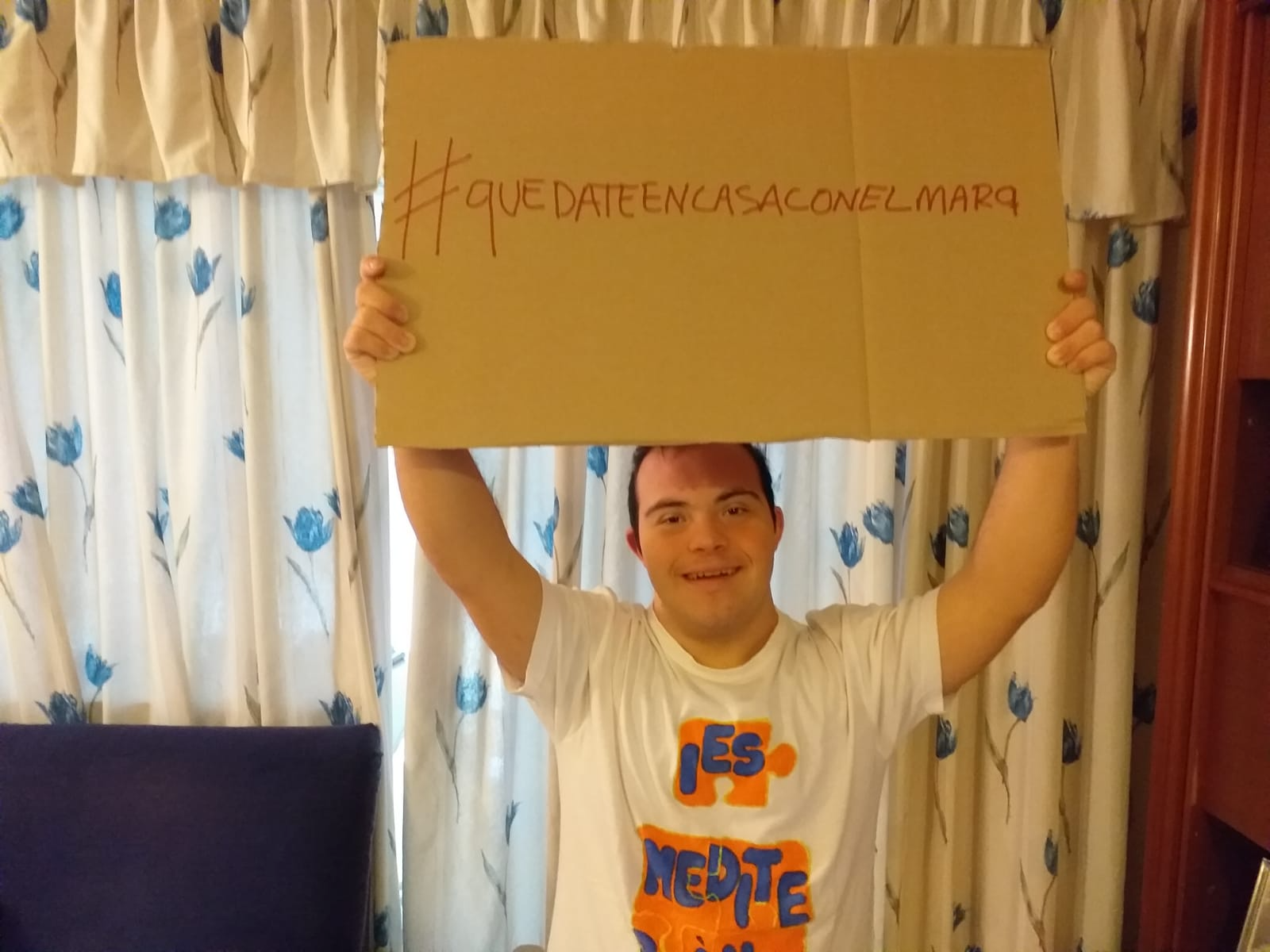
El 21 de marzo se celebra el Día Mundial de las personas con Síndrome de Down. El MARQ se une a esta iniciativa reafirmando la colaboración que durante siete años mantenemos con la Asociación Alicantina Síndrome de Down.
Desde aquí os animamos a que apoyéis esta magnífica campaña, con el optimismo y la fuerza, que nos trasmiten las personas con síndrome de Down, como José Manuel y Jesús del IES Mediterrània de Benidorm, que se han unido nuestro hastag #quedateencasaconelmarq.
Puedes ver el contenido completo en:
https://www.marqalicante.com/Noticias/es/El-MARQ-con-el-Dia-Mundial-del-Sindrome-de-Down-N1199.html
-----------------------------------------------------------------------------------------NEWS
.jpg)
....
Women and religion in Roman Culture
Hello everyone!
When we tour the MARQ's permanent exhibition, there are many pieces that make us reflect on our past and therefore on our present and future. They also help us imagine how our ancestors lived, thanks to the objects they used in their time. This happens to us when we visit the Roman culture hall and we come across some female figures that are attributed to the goddess Venus, as seeing them makes us think about the role of women in the Roman religion. A priori we could think that the role of the latter would be very active in religion, since the Roman pantheon has many goddesses, but as you will see if you continue reading the following lines, this thought is not very real.
In order to understand the position of women in the Roman religious world, it is necessary to emphasize that the Roman religion has a public character and therefore it is a religion directed, administered and organized from the state so it is strongly linked to the political and citizen life. Political life was something exclusive to men and therefore women were excluded from this power. Because of this the head of the Roman religion has always been a man. In monarchical times it was the rex; in republican times the Senate became the highest religious authority; and with the establishment of the one-person system of government in the hands of Augustus, religious power was held by the emperor, pontifex maximus of Roman public religion and, at the same time, became a divinity.
It was no different in the private or domestic sphere, since both the family members and the domestic worship fell to the highest power of the family, the paterfamilias, who was the priest of the private worship, and the one in charge of carrying out the rites and making them respected.
In spite of all that has been said, it should be noted that women had a space reserved for expressing their religious feelings, and in some cases even went so far as to hold the priesthood
One of the priesthoods that women could perform was the priesthood to the goddess Vesta. The cult of Vesta fell to six women from noble families who consecrated their virginity. In fact, the loss of virginity was a serious crime, the crime of incestum, of contamination, and the guilty parties were condemned to be buried alive. These women dedicated their lives to the goddess from the age of 6-10 to 36-40, during their fertile years. These women could exercise the priesthood because they were legally considered as men, since upon entering the priesthood, the young vestal left her father's custody, and no longer needed a guardian to perform the acts derived from civil activity, and thus she was no longer considered a minor, like the rest of the women.
Apart from the vestals we find the female presence in the priesthood, but in this case as complete of their husbands; since the wives of the flamingo maiores and rex sacrum, had the task of helping them in the priestly acts, although they did not enjoy the juridical privileges that the vestals had, but were under the power of their husbands. These women represented the model of the Roman matron to which they could be applied, the qualifiers of caste, chaste, lanifica, univira and unicuba.
In addition to these priesthoods we find women in a prominent position in the emperor's cult, where both male and female priestly functions were established. In addition, the wives and mothers of the emperors became imperial divas and after their death became divinities symbolizing motherhood, being assimilated to the fertile mother-goddesses who brought prosperity to the empire and protected its inhabitants.
Within the Roman religion we find foreign gods due to the Roman contacts with the Greek and Eastern world, thus other female priesthoods linked to Eastern divinities arise in Rome: Baco-Dionysus, Magna Mater-Cybele, Isis and the Hellenized cult of the goddess Ceres, Demeter. The cases of Cybele, Isis and Demeter represented particular forms of motherhood that were attractive to Roman women because they had elements in common with the traditional matrimonial cults, although a cult that went beyond this perception of the chaste woman was the mystical cult of Bacchus, which at first was exclusively for women, although in time men, especially young men, were allowed to join.
In addition to the female priesthood, we have to highlight the participation of women in cults and rituals, such as matrimonial liturgies and cults that future midwives would practice, such as the Fortuna Virginalis, in which the girl who entered adolescence, normally having her first menstruation, gave her childish clothes to the goddess fortune and wore her own midwife's stole. It was a rite of passage that placed the young Roman in the position of a marriageable woman, which was evident in the eyes of the people because of the change in her dress.
But women did not only participate in cults related to fertility, also, although at prominent moments, women participated in cults to the more political and warlike advocations of the goddess Juno, or even during the Republican period they worshipped Hercules.
Therefore we see that although she participated in cults and rituals, she had a very limited role in political power and therefore in religious power.
Remember that if you want more information about the past stay in our social networks, and very soon we will see you at MARQ.
Davinia Llopis, guide at MARQ.
....
Hello friends!
I'm going to tell you about my favourite showroom at the museum. Honestly, I enjoy with all of them very much, due to the richness of pieces and the way they are shown to the public. But if I had to choose one, I would prefer the Roman Culture Room, undoubtedly.
As a guide, I enjoy explaining it to visitors, because it is very easy to understand how Roman inhabitants developed their daily life. The showroom is provided with two large screens which allow us to “go back in time” for the purpose of knowing Lucentum, our ancient city in Roman period. Guests Visitors can discover different sort of pieces while they are walking through the streets of the city, entering Roman baths of the city, watching the traditional olive hand pole beating in an agricultural town or how they breed fish in "Illeta dels Banyets", one of our archaeological sites in Campello. Indeed, such activity served to make salted fish and “garum”, a fermented fish sauce, which is said it had curative and aphrodisiac properties.
Futhermore, this exhibition room includes a unique piece in the world: the "bronze hand". It was found in Lucentum in 2005 during an archaelogical campaign, led by the Director of MARQ Manuel Olcina. It is a fragment of a sculpture located in the forum of the city, which must have measured between 2.20-2,30 metres in height. The hand holds the handle of a unique sword called "parazonium", is usually characterized by the representation of an eagle head. At the museum, our copy has two-headed eagle, therefore, it is become a singular piece.
(So, guests) To sum up, you must visit because it is recommended by National Geographic as one of the essential museum for learning ancient periods.
I'll see you soon. And, remember that "I stay at HOME WITH THE MARQ"
Mª Paz Gadea, guide.
....
Hello everyone!
Today I want to talk about the daily life in the Roman era, specifically about an essential aspect for the day of the highest classes, since we are going to talk about fashions, the hairstyles used by women and men from the republican era until the arrival of Christianity; and is that in Rome there really was a great cult of hairstyle.
Starting from the base that the Romans have always been to wear long hair, but the shape of this was varying according to the time. Let's start by talking about the republican era, at which time the tenure was that of simple hairstyles for women, with buns with a stripe in the middle generalizing. Already in this same period the toupe appeared, which from then on was very present and progressively evolved.
In imperial times and, especially with the change of era, the sobriety of the previous period begins to be left behind and the most sophisticated hairstyles begin to be common, in which braiding is incorporated and one begins to play with wigs, volumes and curls . To achieve the curls, the calamistrum was used, a red-hot iron that functioned as a kind of curling iron. The oldest hairstyle known in the early years of the Empire is the "Octavia hairstyle" which consisted of a pompadour on the forehead and a braid tied in a bun at the nape of the neck.
During the Flavian dynasty a new trend emerged, multi-story tall hairstyles; the hairs were collected forming a semicircle (orbis) and letting them fall into curls (anuli), keeping each one in place by means of a thick needle (accus). In fact, in the MARQ Roman culture room we can see samples of those needles and pins to hold the hairstyles. Each hairstyle had a name, like the tutulus which was the hairstyle that gathered the hairs on top of the head forming a kind of cone and a veil was placed over it. These hairstyles were not worn daily, due to their complexity, but were reserved for large parties, and often the help of expert women was necessary and sometimes, even hairpieces were used to increase the volume of the hair and they also put on hairnets that hold the hairstyle in place.
During the time of the Empire the use of wigs, hairpieces, dyes and even colored ointments for hair was very common. Hairstyles were achieved thanks to the use of purple needles and ribbons, sometimes they added flowers to decorate it, as well as gold and rose powders, and perfumes.
As a curiosity, an exclusively feminine fashion was to pretend to have blond hair; the Roman woman used to have black hair, and the blonde effect was achieved with the use of a dye (toad) that dyed the hair in that color, complementing the effect with the use of hairpieces made up of Nordic hair.
But these elaborate hairstyles saw their end due to the penetration of Christianity in Roman society that influenced the way of combing. His message, which encouraged austerity and discretion on the part of women, led to a return to simplicity in hairstyles, leaving behind headdresses, wigs and loops, and simple, low bows with stripe came back into fashion in between, as during the Republic.
In the case of men, haircuts and the way they wear their beards also changed over time.
Until the third century BC, men did not shave or cut their hair, but from this century on, the custom of shaving spread until the Second Punic War, when the custom of removing the beard became widespread after forty years of age. as a sign of old age; When the first gray hairs began to show, they removed them with tweezers and over time they decided to shave their faces definitively. During this period, the adolescents wore their hair short and straight, that is, left to themselves, they cut it per pectinem or strictim, a monkfish.
In Hadrian's time the beard fashion returned, which lasted until the first decades of the 4th century when Constantine came to power, then he returned to the habit of shaving; although there were exceptions. Mourning men grew their beards, as did their hair. Those who had a criminal proceeding pending did the same to make the judge feel compassion, appearing badly dressed, dirty and disheveled. Philosophers also wore a thick beard, a singularity that dates back to the Greek custom of the Hellenistic age, when all began to shave and only the philosophers maintained the ancient use of the long beard. During Constantine's time there was another variety of men's hairstyle, which was characteristic of young Romans who were excessively concerned with maintaining a good appearance, this hairstyle consisted of curling the hair with the calamistrum.
Seeing this desire to follow fashions, and to take care of men's hair, we can understand that a serious problem for them was baldness, and it caused them great concern. Julio César was one of those who felt that concern, like Caligula, who tried to cover baldness with wigs, diadems and even a laurel wreath, another method to hide alopecia was to paint the head, imputing each hair.
Therefore, there is no doubt that Ovid was right when he said: "I don't even feel able to explain so many different fashions, a number that increases with others every day that passes", and that is that the fashion of the hairstyle was constantly changing and coinciding with the emperors who were in power at that time, also influenced in a way also the family of this.
#quedateencasaconelmarq
Davinia Llopis, guيa en el MARQ.
....
FUNERAL RITES IN ROME
Hello everyone!
In this new post from our space #quedateencasaconelMARQ, I would like to tell you about the funeral rituals of the Roman era.
Funeral customs and rites in Rome had a long and varied evolution throughout history. In its origins, there was no unification of burial systems or traditions to follow, and it will be, with the passage of time and the result of cultural exchanges with other civilizations, when they develop their own and world-renowned funeral rituals.
But, before moving forward with this topic, we must ask a question, what does death mean for the society of this time? Perhaps, the answer is summed up in one word: everything. Death was a very present aspect and even more so when life expectancy was very short. For this reason, from the beginning of the Republic, people began to believe in the permanence of the soul in the body of the deceased and not in its separation, as occurred in previous cultures.
Thus, it was necessary to have an underground place covered with earth so that soul and body remained united. The fear that his soul was destined to return to the underworld to torment his loved ones for not having followed the stipulated funeral ceremonies of mourning and burial led any economically capable Roman to write down the funeral rites before dying. that his relatives and heirs were to provide him, as well as the location of the grave.
The preparation of the funerals of the high social classes was celebrated during the day and the families competed with each other for the greatness of the event. As for the transfer of the corpse to the grave, it was always at night because death was impure and was also associated with contamination, therefore, they had to be done outside the cities.
In the event that you did not have enough money to buy land for burial or a niche for cremation, there was the possibility of joining what was called collegia funeraticia, a union or religious association that, through a annual payment of a fee, they promised to ensure that their partners had a decent funeral. It was the only way that the poorer classes could have a burial place, except at times when certain emperors were tasked with ensuring a proper funeral.
The situation was very different for the poorest, who were collected, at dusk, in the streets, thrown into mass graves on the outskirts of cities so that their bodies could rot and, subsequently, be cremated in those same graves.
The preparation of the corpse for the wealthy classes required a series of complex processes that I will discuss below. When a person died, the closest relative would collect his last breath in a glass to retain his spirit before leaving the earthly world; afterwards, he was kissed, closed his eyes and took off his rings to avoid any type of burglary at the grave.
To confirm that the person had died, he was named, out loud, three times in order to retain the soul until its burial and of course, to verify the actual death. The next step was taken by the slaves, who washed, perfumed and dressed in their best clothes, the body of the deceased. In some cases, the deceased could also be accompanied by a mask, which he would wear for the duration of his funeral. On the contrary, their relatives were dressed in their worst costumes, as was the case with women, who tore and stained their dresses during the ceremonial rite as a demonstration of affliction and grief.
The next event, in the case of being able to afford it, would be the funeral pomp or funeral procession. For this, musicians in charge of singing funeral tunes were hired, then torch bearers and after them, the mourners accompanying the coffin. Noble families could even incorporate images of ancestors who had held public office, through the masks of these relatives worn by men. Behind them came the coffin and relatives dressed in mourning.
As for the duration of funerals, as is evident, it also depended on the social class that person occupied. In the case of the poor, they were buried on the same day or at most the following day, therefore the exposure of the corpse was rather nil; the middle and upper classes lasted from three to six days, and finally, the emperors, who, came to be exposed for a whole week.
Once the deceased had been veiled, according to the stipulated time, only the burial place remained: the necropolis. These funerary spaces, located outside the walls but close to the entrance and exit routes of the city, became a place of ostentation through their decoration on the funerary monuments. But, above all else, the primary objective will be to guarantee the memory and social prestige of the deceased
Lorena Gomis, guide at MARQ.
....
PERSONAL CARE IN ANCIENT ROME
Hello everyone!
Today I want to talk about the care of the skin and makeup products that were used in Roman times, and it is that in the Roman culture room of the permanent exhibition of the MARQ, we find a showcase dedicated to objects used for personal grooming. Perhaps despite the fact that Roman culture is one of the best known, it is still astonished today for its architecture, for its vast empire and we are always discovering new details about this fascinating culture, since there are topics, such as the one we are going to Deal today that they are still unknown to many.
Grooming and appearance was very important to both women and men at this time and the skin was given even more importance. Skincare was a true obsession for upper-class Romans, and around it developed an authentic make-up art no less sophisticated and luxurious than that of our time.
Most of the women painted themselves when they left the house, especially the eyes, eyebrows and eyelids following the canons of beauty. These canons advised women to have a luminous, rosy and, above all, white skin. Getting a white skin became a real obsession, it was already a feature of distinction. Therefore, to achieve this whiteness effect, various substances were used, many of them not recommended, which were applied to the face in the way of current makeup. For this and to soften in turn, creams were used in which the ingredients such as lanolin from non-degreased sheep wool, starch and tin oxide stood out. Lanolin served as the basis for the mixture; starch softened the skin, a function for which it is still used today in cosmetic products; tin was the skin whitening element, and it was used during the Empire as a substitute for lead acetate, which had very harmful effects. A makeup base made with vinegar, honey and olive oil was also used, as well as the dried roots of the melon applied as a poultice and the crocodile or starling droppings. Other ingredients used as whiteners were beeswax, olive oil, rose water, almond oil, saffron, cucumber, dill, mushrooms, poppies, lily root, and egg. For the same purpose, women were said to ingest cumin in large quantities. Mica powders were used to give the skin greater luminosity.
Once that color was achieved on the skin, the next step was to color the cheekbones with bright red tones, as a symbol of good health. For this, red earth, henna or cinnabar were applied, although there were cheaper alternatives, such as blackberry juice or wine grounds. On the other hand, for lipstick, very bright red tones were also used, it was achieved with the ocher from lichens or mollusks, with rotten fruits and even with minium. In addition, according to Propercio, the fashion for women to mark the veins of the temples in blue was widespread.
According to the Roman ideal of beauty, women should have large eyes and long eyelashes. So to obtain this effect, a small rounded instrument made of ivory, glass, bone or wood was used, which was previously immersed in oil or water, the eye profiler was applied, which was obtained with the galena, with the soot or with antimony powder. The eyeshadow had to be showy and the preferred colors were black or blue, and to obtain these, ash and zurita were essential. Also, and by Egyptian influence, there were green shades made with malachite powder. The eyebrows were outlined without lengthening and retouched with tweezers. In this sense, there was a preference for the united eyebrows on the nose, an effect that was achieved by applying a mixture of crushed ant eggs with dry flies, a mixture that was also used as a mask for eyelashes.
All the cosmetics used could be bought in the markets, and they could be found in different formats; Those that were liquid were placed in small terracotta containers, in green and blue glass jars or in small containers made with different materials; the neck of the container was closed in such a way that the makeup could be poured drop by drop. In fact, in the museum we can find some glass containers. Thick cosmetics were sold in small Egyptian-cut wooden chests, accompanied with shells to mix, spatulas, pencils, brushes, or sticks to apply makeup.
To make up it was essential to have a mirror, like the bronze mirror found in the display case, found in Lucentum and dating from the 1st and 2nd centuries. These mirrors could have a rounded shape, according to the Etruscan tradition, or square, a very widespread and common model throughout the Empire.
Traditionally, mirrors were made of metal (either bronze, copper, silver, or gold) and had finely worked handles, both metal and bone or ivory.
But to show off a perfect complexion not only is the makeup worth, but you also have to receive care and the Roman to be free of wrinkles, freckles or blemishes they used masks that they used at night. There were beauty masks against stains, such as one made with fennel, scented myrrh, rose petals, incense, rock salt and barley juice. To counteract wrinkles, a mask made of rice and bean flour was very common; Donkey milk was also used, with which there were women who washed up to seven times a day, according to Pliny the Elder.
The same author collects another surprising remedy against wrinkles: the astragalus (foot bone) of a white calf, boiled for forty days and forty nights, until it was transformed into gelatin and subsequently applied with a cloth. To treat freckles, the application of snail ash was recommended. To smooth the skin, a mask made from wild turnip and yero flour, barley, wheat and lupine was very common. Also, there were face masks to eliminate acne, eye ulcerations and lip wounds.
From what we have seen, the Romans spent a lot of time and resources to beautify themselves, making this a true obsession to the point of using toxic, disgusting and exotic products.
#stayathomewithmarq
Davinia Llopis, guide at MARQ.
....
IN THERMS
Hello everyone!
In today's post at #StayathomewitheMARQ, I would like to talk to you about one of the places most frequented by the Romans: the thermae.
Before entering the matter, we must make a distinction between public and private baths.
The thermae refer to the first type and it is, therefore, the one that we are going to analyze in this publication, while, for the second case, they are called balmes or balneum and they are the baths that were found in the ancient Roman villas.
The name of thermae comes from the Greek thermos (hot). And it is here, in Greece, where it has its origin, specifically from the traditional gymnasium, made up of a gymnasium, a bathroom and an exedra (construction of a circular plan with seats), where the Greek philosophers discussed with their disciples. After performing physical exercises, they went to bathe in hot water and then to the exedra where they received philosophical education. Following this example, and taking into account that, in Rome, the most important leisure activities were sports and the collective practice of bathing, the combination of both gave rise to the so-called thermae.
Initially, they were created in places where it was possible to use hot water from natural springs until, already in imperial times, they began to spread to cities, thanks to technical advances that allowed water to be heated. Later, the water will come through constructions such as the aqueducts or the cisterns.
Although the inhabitants of the cities already began to use small spas located around the houses, it will not be until the end of the 1st century BC. C. when we see the first great baths with the Emperor Agrippa. This will be the starting point, so that, with the succession of emperors, we will see much grander constructions in order to surpass their predecessors.
The baths or public baths became meeting places for all social classes and sexes. They were one of the main places to do community life or even close businesses of any kind, including political issues. But, although men and women sometimes shared certain spaces, bathing hours were different for each other: women used to come in the morning, while men did in the evening. However, with the arrival of Christianity it was determined that women did not have access to the bathroom in the baths.
Another nuance of the occupation of these rooms was the enjoyment of some services within them such as massages or the use of ointments and perfumes, only suitable for the most privileged, because they were expensive products and, therefore, they were not within the reach of any pocket; or because it was necessary to have slaves for their enjoyment.
As for the construction of the place, we know that a thermal complex should have at least three basic rooms: frigidarium (cold water room), tepidarium (warm room) and caldarium (hot water room), but there were others, such as those built in Rome itself, where we can find changing rooms, a sauna, an exercise yard, a library and even a swimming pool.
As for the main rooms, the person who accessed the thermae had to start the tour of the tepidarium until they reached the caldarium and repeat the process in reverse to end their bath. In the case of the thermal baths of greater extension, the tepidarium and the frigidarium were duplicated so that the route went in a single direction without having to go back.
The interior of the rooms and hot water pools used a system known as hypocaustum, which consisted of distributing the heat below the floors of these rooms through tunnels and hot water pipes, through a series of furnaces located in the basements.
In short, the baths were essential elements in Roman life in terms of physical education, hygiene and health. But also, we can say that it was an enrichment of art, reflected on its walls through fresh paint and on its floors decorated with mosaics. Unfortunately, after the Roman era, the baths lost their splendor, perhaps due to the excessive cost of maintaining them or due to changes in customs under Christianity.
In any case, despite its gradual abandonment, we can still enjoy its essence through its archaeological remains, in many places in our Spanish geography, but especially, in the sites of the Illeta of the Banyets in Campello and Lucentum in Alicante.
Lorena Gomis, guide at MARQ
....
WOMAN IN ROME
Hello everyone!
Today I want to talk to you about the role of women within the private sphere, that is, within the family in Roman society. It should be noted that this role was changing from the time of the kings to the Empire, thus evolving the role of women, until acquiring new customs that would never have been allowed in ancient times. In this writing we will focus on the life of this from the end of the Republic, since in the Roman culture room of the MARQ we find remains from this moment, after the Second Punic War, at which time the Romans expanded their territory to the Iberian Peninsula.
Before continuing to clarify that although from the beginning we are referring generically to women, unfortunately we will talk about the rights of privileged and upper-class women, since most of the information that has come down to our days through contemporary sources tells us about the woman of this social class.
Roman society was characterized by enormous class inequality, and also inequality between men and women, especially if we compare it with other societies such as the Egyptian. Although it is true that Roman society, on this subject, was much more advanced than other cultures such as the Greek, since the role of the Greek woman was to remain secluded in her home.
Roman law dictated that women were inferior to men and always remained minors or impuber, that is, legally they were the same as children. Therefore she depended on the authority of a paterfamilies, who would first be her father and, if she married, she would be her husband. Thus, under the leadership of the paterfamilies, the fundamental role of women, within the family, was that of formal custody of the keys to the house and that of controlling the daily life of children and slaves,
although it is true that rich women did not have obligations as housewives.
However, towards the beginning of our era, things began to change and women began a process of emancipation thanks to their achievements, although it should also be noted that it was partly thanks to the influence of Egyptian society, among other factors.Thus, women overcame the traditional role that had been imposed on them and began to achieve a certain freedom regarding family ties; since she achieved independence both from the father and fatherland potestas and from the husband's absolute authority over her (in manu), which gradually disappeared. Although she could never acquire certain rights such as politicians, something exclusively for men, so she never had the right to vote. At this time we already see that women had freedom of thought and some freedom of action and even had economic freedom, in fact we find examples of women who managed to amass great fortunes, as was the case of Livia and Mesalia. Despite these changes, which are obtained over time, the role of the woman belonging to the aristocracy, remains almost mostly, that of supervision of the house and the people who are part of it, because work in ancient Rome was not seen as a right or proof of liberation. Although if the chronicles tell us about women of more privileged social status than were poets like Melinno, who wrote a poem about the greatness of Rome (imperial age); writers of elegies like Sulspicia (age augustea); even lawyers like Afrania or Carfania, something surprising due to the express prohibition of this type of profession. In addition, there were women of humble condition who were vendors, copyists, tailors, pedagogues or doctors, workers in places of recreation or theaters, merchants, among many other professions.
We also see this change in the rights of women in social activities within the home, since although women could participate in banquets, we see great differences between the Republican era and the period that followed Augustus. Since initially the woman at these banquets had to stay out of the beds or lectus (triclinium) and had to be withdrawn, sitting in chairs with the children, instead from the 1st century B.C. Women have already started to be seen as a more active part of these receptions, since they were allowed to lie down in these beds like the men who had been invited to dinner, fact that we see represented in the Roman culture room of the MARQ, where we find an image that recreates a scene of a banquet held in the triclinium room where we see women lying in it.
After this brief review of the role of women in the home, we can see an evolution from being considered to legal terms such as an impuber or a minor, despite the fact that he had reached the age of majority, until he could achieve certain rights such as having his own patrimony as a result of making the father of the family no longer have absolute rights over his wife.
Remember that if you want more information about Roman culture, #StayathomewitheMARQ.
Davinia Llopis Martínez, guide at MARQ.
....
ROMAN MOSAIC ART
Hello everyone!
Today in #StayathomewiththeMARQ I would like to tell you about the mosaics in Roman age.
The word mosaic comes etymologically from the Greek "muse". In Greek mythology, the muses are, according to the earliest writers, the inspiring deities of the arts. Therefore, such precise and magnificent work, such as the making of a mosaic, should be inspired by them.
The mosaics do not originate from the Romans, since they have been found in other places such as Crete or Mesopotamia, but it will be in Roman culture where they will become important elements of all buildings, both public and private. Such will be its importance and its artistic level that decrees were issued to set the price that artists could give their works, following a scale of qualification of the works. The price of the mosaic depended on the complexity of the design, its polychromy and the materials used (imported or local). Therefore, the possibility of having a mosaic at home was not available to anyone.
At a general level, the mosaic was a work made up of small stones, terracotta or glass of various colours, which, strategically placed, form different drawings and designs. His technique comes from an improvement of the primitive pavement that was made with pebbles and was called with the Greek term lithostrotos (“prepared with stones”), in which the area to be paved was excavated to a depth of two meters and compacted; Above it, these pebbles were spread in three layers, the deepest being the largest, until reaching the top layer, the mixture of which would be brick dust and fine sand for a better fixing of the pebbles.
This practice stopped being used from the 2nd century BC, at this time it will be when the pebbles or boulders give way to the tesserae, facilitating the application of materials, faster and easier, in addition to having a range much wider colours. The tesserae are small cubic-shaped stones made of calcareous rocks or glass and ceramic material. These were carved, with special care, in different sizes and depending on this, the chosen themes or the place where it was to be placed, the mosaics adopted different names.
Both in mosaic and mural pavements, before applying the tesserae, marks were made on the space to be decorated, to indicate the areas that should have the same colour of tiles. For its placement, a previous design was necessary, made to life size and painted in the actual colours to be used.
Once this was done, the tiles were inserted and the spaces between them were filled with mortar and polished with sand.
Following these guidelines, three types of mosaics are the most common. Firstly, the tesselatum based on marble or limestone cubes that make up black and white or polychrome figures; secondly, the sectilese is used to represent geometric compositions and is made with pieces of colored marble and, finally, the opus signinumel which alternates tesserae embedded in mortar with ceramic pieces forming geometric or animal figures. In some cases, proper names could appear in the mosaics that made reference to the craftsman's pride in a job well done and the recognition of the entire group that had been part of that craft activity, although not all received the same recognition.
Although mosaics were originally used to decorate walls and ceilings at first, over time and with the improvement of techniques, they also began to be used to cover the surface of the floor, thus creating spectacular pavements that provided villas and palaces with an additional majesty, showing the social and economic position of its tenants. With the arrival of the imperial era, the mosaic became popular and began to be used also in temples, theatres, public baths and even in stores.
The themes represented in the mosaics were very diverse, and also vary according to the destination of their place of placement and the context of their elaboration. For public buildings, those referring to historical events and games of the circus or amphitheatre were more common. In the case of the thermal baths, any marine image in relation to the god Neptune, animals or everyday scenes around the ports or the fishing villages. On the other hand, everyday scenes (representations of hunting and agricultural work), elements related to prosperity and protection of the home, were chosen in the domestic mosaics. Finally, on a decorative level, two themes were used, which, although they were more minor, also drew attention, the obsession with time, represented by the zodiac signs or the seasons, and their concern for geography with maps of different parts of the Roman Empire.
After a while, the art of music developed and each era contributed a different style and materials, while always maintaining the original essence. The cultures that continued this Roman heritage will be the Byzantines or the Islamic culture, great lovers of mosaic as a decorative element.
Lorena Gomis, guide at MARQ.
....
ROMAN FOOTWEAR
#doyouknowthat
The world of footwear in Roman times, that great unknown. I have spoken about it in previous articles, but today I will continue with this topic providing us some curious facts.
The parts of the shoe were as follows:
- Vincul- would be equivalent to our current cords.
- Corriagi- were ropes used to support the piece on the foot as well.
- Lingul- similar to our `flaps´.
- Lunula were silver bands on the shoes of some magistrates of importance and antiquity that indicated prestige.
A curious fact is that when patricians and citizens of a high economic level took to the streets, they used to wear leather shoes. On the other hand, a slave carrying his sandals usually accompanied them. When they arrived at their destination, they put on sandals again. As soon the banquet ended, and already sitting in their benches or in the parks and gardens around the village, the slaves exchanging ones by the other.
At present it remains unknow if socks should be more common than expected. It is known that leather or wool strips were often used in very cold weather to cover the joints and toes. The poorest used pieces of leather but without tanning in order to protect their feet during their hard working days.
Confirmed reports could indicate us that Roman legionaries used socks in cold climates outside Spain. However, they would not be like the current ones but would probably look more like those wearing by the ancient Egyptians, with separations between the toes to be able to locate the tapes of the sandals in a more comfortable way.
Beatriz Bueno, guide from MARQ at Lucentum.
...
THE AUGURS
#Didyouknothat…
There were priests from ancient Rome who practiced divination. The augurs existed from the foundation of Rome, exercising a practice taken from Greeks and Etruscans. His corporation constituted one of the four prestigious priestly colleges of Ancient Rome.
It was an official position, although there were also particular augurs. Only magistrates could consult official augurs, in special enclosures. The official position was for life, compatible with magistrates or with other priestly position.
They had two types of books for their work: rituals, they were those that contained fixed formulas; and from comments, these collected summaries of the proceedings.
There were two kinds of augurs:
- Those who impetrated the gods and manifested their will through rituals.
Those who deciphered the signs of the will of the gods manifested without prior request. These were the most important, to the point that just by declaring that the auspices were unfavorable, they could annul assemblies, elections or any resolution of the magistrates.
This position was reserved for the patricians but, from the Lex Ogulnia, it was accessible to the commoners. In monarchy times they were chosen by the king. With the Republic, at first they were elected by co-optation in the College, and later their choice resided in the town, except during the period of the Sila dictatorship, when they returned to the primitive system.
Finally, in the Empire they were named by the emperor. The charge was abolished by Emperor Teodosio. The good augur is represented in the form of a young, agile, handsome man, dressed in a green robe, a symbol of hope, and his head covered with a white veil secured by a star. In his right hand he has the augural cane (lituo), with a twisted shape and with his left hand we can see him stroking a swan.
The bad omen, is the figure of a man severe in appearance an sinister gaze. The robe he wears is dry leaf color.
There was different types of divination:
- Signs from heaven. In the case of lightning, they estimated the favorable omen if looking south, they fell to their left (Jupiters right).
- Screams and bird flights. They analyzed the squawk of crows, rooks, and owls. Also the flight of eagles, vultures and hawks.
- Intake of sacred chickens. Auspice was considered favorable if they had an appetite and unfavorable if they were inappetent.
- Positions and attitudes of mammals and reptiles.
- Extraordinary unforeseen events. Generally considered to be a bad omen.
Divination in the disposition of the guts of the animals
Elena Noguera, guide at Lucentum.
-------------------------back to menu >>
.jpg)
.....
¡Hello everyone!
Today I want to tell you about the Iberians and thus introduce one of the most spectacular rooms in the entire museum, the room that tells us about this culture. This introduction will allow you to have a general knowledge about the Iberians and thus be able to know and understand them in an optimal way the publications related to this culture that you can already browse on our social networks or that will be published in the coming days.
The Iberian world constitutes a complex and very rich universe that developed in the 6th century BC, lasting until the 3rd century BC. Iberian culture saw its end with the
Second Punic War, a war between the Romans and the Carthaginians that took place on the Iberian Peninsula. Thus with the victory of the Romans, the Iberian resistance did not last long and thus its territory was annexed to the Roman empire. Stressing that the 5th century BC was the peak of this culture.
The Iberians occupied several territories of the Iberian Peninsula, those that extended by the Mediterranean slope, also including the West of Andalusia, until arriving at Cádiz and even the south of Huelva. After knowing the territory and the time of these Iberians, we cannot delay solving the question of the emergence of this culture and how it happened. This culture arises after the arrival of different peoples such as the Phoenicians who came from Tire from the 9th century BC, the Greeks and the Carthaginians who came to our lands by order of mention.
These towns came to our Peninsula with the intention of expanding their territories, managing to found cities in the case of the Phoenicians, Cádiz, and in the case of the Emporion Greeks, on the Gerona coast. These took advantage of the rich resources of the peninsula to exploit them and enrich their new settlements, as well as help their territories of origin. In the case of the Greeks, they took advantage of their new location to commercialize with the entire Mediterranean coast of the area that we can already call Iberia. These peoples managed to mark in great demand and influence the indigenous people and thus helped the Iberian culture to be born.
These influences can be found in sculpture, religion and writing, among other cultural factors. Although at present we globally name the peoples who inhabited the territories mentioned above as Iberians, in fact, in the document in question we call them this way, their contemporaries did not call them that. The writings called iber to different rivers of the Iberian peninsula, such as the Ebro, Tinto and Tagus rivers and called Iberia the territory that today occupies the Iberian peninsula that in the Roman world would be translated into Hispania. But they did not call with this nomenclature, Iberians, the human groups that were in this territory, but as the sources comment, they were divided and had their own names, which we can see on the map (figure 1).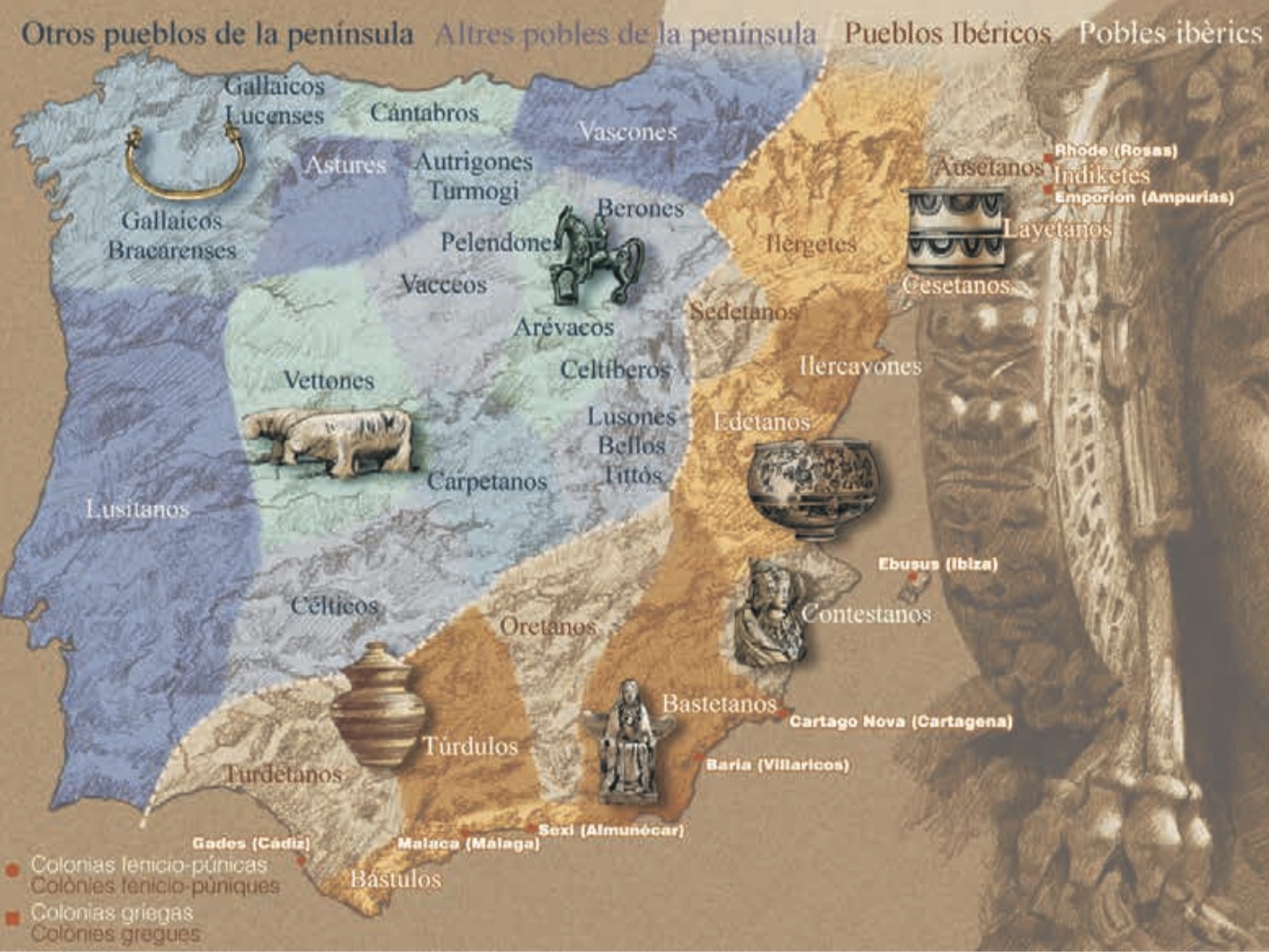
Part of the territory of Alicante, according to the texts of Ptolemy and Pliny, the part extended from the Segura, Júcar and Vinalopó was called the Contestania. Therefore, there was no one name that encompassed all of these groups. So if this nomenclature does not come from antiquity why do we call them that, Iberians. Well, this comes from 20th century research, it is a name generated by researchers to encompass these peoples, because they were peoples that had elements in common, thus forming part of a homogeneous culture, elements such as sculpture, non-Indo-European languages or the ceramic painted with figures.
Although while it is true that there are differences between territories and their own aspects, for example, in Contestania we see our own features such as the Elche-Archena-style ceramics (figure 2) or the use of the Greek Ionian signario (figure 3). Despite the studies carried out, we still do not know different aspects of these Iberians today and it is because we are facing a great problem: the Iberians wrote in their own language, but although we know how to read it, we cannot translate it, because we have found a kind of Rosette Stone to help us solve this enigma, but instead we do know how to read it thanks to the fact that they used different known signaries. 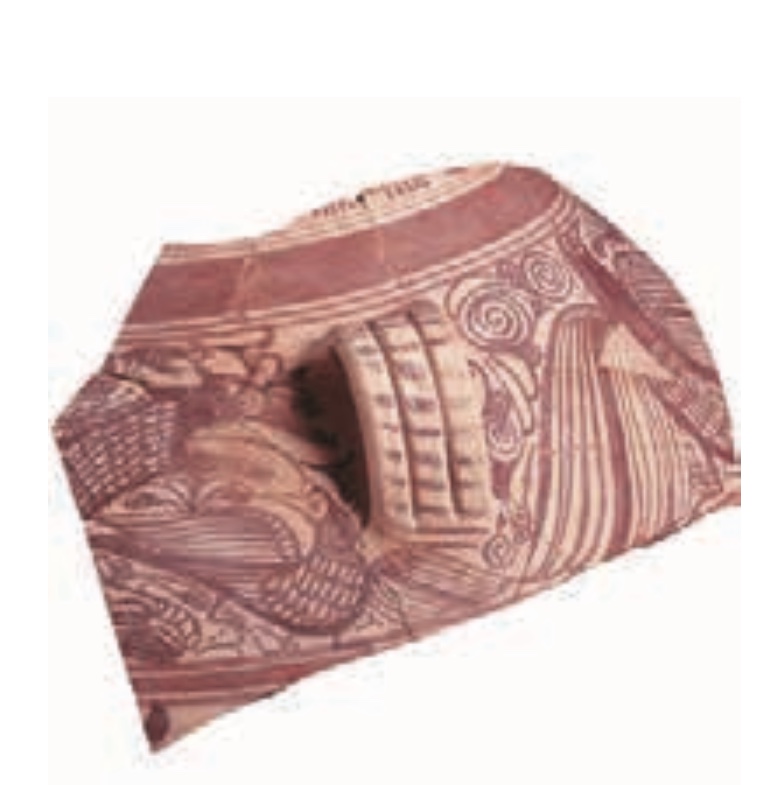
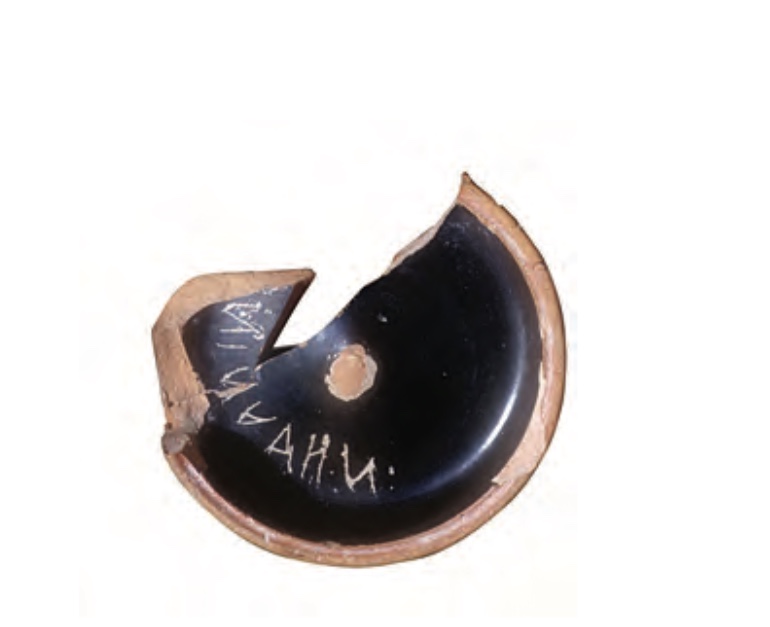
To get to know what this language sounded like at MARQ, in the Iberian culture room, we have an audio that reproduces the reading of a writing done in this language that makes us amazed and so when visiting it we can get an idea of how it sounded. Therefore, because we do not have our own sources that we can understand, the research of these peoples is based on classical sources (Greek and Roman), on archaeological remains and on the narrative drawings that we find in Iberian ceramics, an exceptional resource. Since we find representations that shows us daily scenes, of work in the field, of hunting, or even wars and rituals, and thus through these stories, we can know how the day to day of this people.
In the room we find an audiovisual that shows us animated scenes found in the ceramics, which have been found in the province of Alicante and so we can see by way of introduction what is explained throughout the room, through different archaeological remains among which we find some of those ceramics in which these representations have been found.
Once these Iberians were presented, here is the link to the video of the Ibera culture room, where we find some details of their daily life, religion, society or funeral world and also remember that you can find different publications on this and the other rooms of the archaeological museum of Alicante, on social networks so you remember
https://vimeo.com/4743114
#quedateencasaconelmarq.
Davinia Llopis, guide at MARQ.
....
Hello everyone!
Today in #StayathomewiththeMARQ I am going to write about my favourite room from the permanent galleries of the Museum.
First of all, I really enjoy guiding the permanent galleries of the MARQ, since it offers us a global vision of all the cultures that have passed through our territory throughout time, allowing us to know and value the historical and archaeological wealth of Alicante.
Among all the rooms of the tour, I would choose the gallery dedicated to culture of the Iberians. From my point of view, it’s a very didactic and attractive room; the montage exhibition is spectacular (visuals, sounds, interactives), and the room has some magnificent archaeological pieces (funerary sculpture, ceramics, objects of daily use, weapons...) that perfectly approach us to the different ways of life of this fascinant culture that inhabited the Iberian Peninsula before the arrival of the Romans.
If you dare to travel back in time to learn how the Iberians lived… You must visit this room! We wait for you!
Carlos Pérez Soler, guide.
....
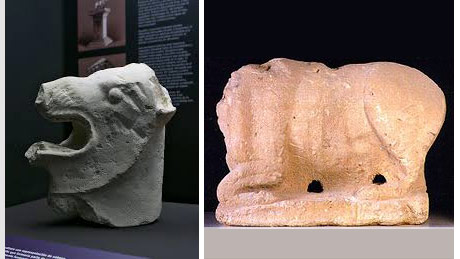
Hello everyone!
Today in #StayathomewiththeMARQ I am going to talk about funerary sculpture in the Iberian world, highlighting three examples that are exhibited in our permanent collection, specifically in the final area of the Iberian room, where emphasis is placed on the funerary world of this culture.
One of the most striking aspects of Iberian society is the use of sculpture as an element of decoration in the funeral field. Thanks to archaeological works, many examples of different types of sculptures have been found inside the necropolis of the main towns of this culture; about human beings, animals (bulls, horses, birds, etc.) or fantastic monsters are represented with great mastery by this indigenous culture of the Southeast peninsula that brings us closer, its way of making art through a sculpture connected to the world of the deceased.
Many of these sculptures would flank the entrances to the funerary spaces (necropolis) of these populations with the aim of protecting the deceased, many sculptures of this type would also be made to mark tombs (as pillars-stela or turriform monuments) belonging to people from the local aristocracy, since we are facing a highly hierarchical and perfectly structured society. The vast majority of these sculptures are made of limestone, an optimal material to carve but weak to survive in the face of inclement weather or the confrontations that surely existed between the different towns of this culture, as archeology has shown us. This is why many of these sculptures are fragmented, making research tasks difficult.
In the final area of the room dedicated to Iberian culture in our museum, there are some spectacular examples of funeral statuary. We found two bulls worked in limestone found in the Province of Alicante. Both sculptures are incomplete, but very important from the iconographic and funerary point of view, since the bull is a much represented animal in Iberian statuary, being an animal associated with the funerary world that would be linked to the protection of the deceased. One of the bulls was found in a well in the Albufereta necropolis (Alicante) and the other was documented in the Iberian necropolis of Molar (San Fulgencio). In that same area of the room, we also find another magnificent example of Iberian sculpture, the head of a griffin (a fantastic animal represented by many Mediterranean societies during Antiquity, especially by the Greeks) that was found in the necropolis of Cabezo de Lucero (Guardamar del Segura) and which highlights the Greek influences on Iberian sculpture. These Hellenistic influences in the world of Iberian art occurred thanks to the trade between the two cultures, facilitating the adoption of characteristic features of Greek art by Iberian society. All these sculptures would have a similar chronology (S. V - IV BC), corresponding to the moments of maximum cultural splendor.
Definitely, thanks to funerary archeology we have been able to draw general conclusions about the importance of sculptural production destined for burial spaces, as well as analyze and study the main characteristics of Iberian funerary sculpture.
Next, I give you a link to download a publication dedicated to the Iberian necropolis of El Molar that is part of the Catalog of Funds of the Provincial Archaeological Museum where the discovery and characteristics of the bull-shaped sculpture mentioned in this article are explained, as well as other items of trousseau (jewelry, ceramics, Greek cups, amphoras, etc.) found in tombs: https://www.marqalicante.com/Publicaciones/es/LA-NECROPOLIS-IBERICA-DE-EL-MOLAR-SAN-FULGENCIO-GUARDAMAR-DEL-SEGURA-P33.html
Carlos Pérez Soler. Guide at MARQ
....
IBERIAN WRITTING
Hello everyone!
Today I want to talk to you about what is still a mystery today, the language and the writing of the Iberians.
The Iberian culture recorded its language in different writings, reflected in numerous supports, nowadays we know more than 2,300 Iberian texts, although these are still untranslatable and therefore the words, which at one time spoke, are now silent to our eyes.
But it should be noted that since the
Renaissance, when this language began to be studied, until today, there have been notable advances in the knowledge of this language.
According to the remains found so far, this script was used between the end of the 5th century BC and the middle of the 1st century AD, from this moment an Iberian inscription has been found on a bench in the Roman theater of Sagunto. During this wide period of almost 5 centuries, this language was written in an extensive territory that goes from Roussillon (France) to Almeria, mixing in Andalusia with other scriptures.
Everything studied until today seems to indicate that in all this territory a single language was used, although this implies “a linguistic problem", since according to classical sources and archaeological remains, all that territory, which we now call Iberian, was occupied by independent towns, each named with its own name,reason why it is strange that all these peoples had the same language, until today the how and why of this somewhat strange phenomenon is unknown.
Although it is true that even it seems that it is the same language, different signaries or writing systems were used, specifically three: The signor called Northeast, used in the northern area, the Southeast used in the middle area, and finally, inscriptions have been found with a system that is the adaptation to the Iberian language of the Greek-Ionic alphabet (Figure 1).
This last script called Greco-Iberian was used since the 4th century BC in the territory between Alcoy (Alicante) and Mula (Murcia), that is, in the territory of Contestania. Also mention that exceptionally the Greek and Latin alphabet itself was used to write this language.
One of the most extraordinary advances and the first to be made on this subject was the one that took place in 1940 by Gomez-Moreno. This researcher established the phonetic values of the set of writing signs, and thanks to this we now know how to pronounce this language, I mean, how it is read. This is thanks to the study he carried out, both this researcher and the colleagues who preceded him, the Greco-Iberian inscriptions and the study of the Iberian legends that came from coins of the same mint as other coins with Latin legends, which presented the same type of images. This was a great advance in the investigation of the Iberian language and writing, although today there are still many unknowns to answer, some of the answers to these questions are beginning to see the light, such as the function of the Iberian language. This writing has been found in different supports, in ceramics, it is sculpture (showing us the possible narrative function of the history behind them) in fusayolas, funerary stelae (although they already appear in these in a late period and by Roman influence) and in the most common supports, especially from the Greek-Iberian script, the lead plates. Therefore, despite having a narrative character, it would also have a commercial function.
Many of the things that are known about this language are due to external writings or documents, such as the Roman bronze inscription written in 89 B.C., where Neo Pompey, after a war victory, licenses some troops who have fought at his command and lists in this inscription the characters who were part of the troop, luckily they were Iberian characters and thus it has been possible to see a series of proper names and how they are formed, most of them composed and with common formations, this is a great advance since now in Iberian writings it is already possible to identify, thanks to these compositions, the proper names. For commenting on another recent advance in the investigation, to say that the names of three gods are also known, who are very possibly Iberian, and are also known thanks to texts in Latin, since in three different places, Jaen, Cartagena and Gerona, inscriptions have been found asking for the favor or invoking a local god, in each of these the name of a different god is cited, Betatvun, Salaeco and Sertundu.
In addition to these discoveries, translations are being tested for some of the most found words in the Iberian inscriptions. This is thanks to comparisons in Latin, which are accompanied by proper names or toponyms that are known, and even by their similarity to Euskera. And it was that I could not finish this writing without commenting on one of the hypotheses that has been taken into account since ancient times, who defends that the Iberian language comes from the Basque language or that both languages come from another older common language that has been lost today, but even today this is a debated theory. There is no doubt that Iberian is not an Indo-European language and that we are still waiting to find a "rosette stone" to help us translate this language and thus, to better understand this culture that is still riddled today.
If you liked this article, you can find more publications related to this culture or others that inhabited the Alicante lands, long before us, on our website and social networks, so #StayathomewitheMARQ.
Davinia Llopis Martínez, guide at MARQ.
.....
Hello friends!
Do you want to learn more about the characteristics of Iberia writing? Well, here we go!
The most characteristic feature of Contestania is the adoption of the Greek-Ionic alphabet to write the Iberian language, it is known as Greco-Iberian writing and it is one of the three variants of writing in the Iberian world.
The Iberian Greek alphabet that developed during the 6th and 3rd centuries BC appears only in the territory of Contestania and only at very specific points in the province of Alicante. They have been found in the deposits of the Serreta of Alcoy, the Illeta dels Banyets in El Campello and in other places in the Murcia region.
I want to emphasize that the Iberos wrote with a metal punch on a lead plate, since this is softer than iron and would be less difficult for them to record on.
This alphabet has been documented in the form of brief inscriptions on ceramics in the Illeta dels Banyets and in the form of texts on lead sheets in the Serreta De Alcoy, which were commercial documents.
La Contestania is how named today the part of the province of Alicante that was occupied by the contestans were the tribe that occupied our lands in Iberian times.
Thanks friends. I hope you liked it.
See you soon!
Veronica Gregorio, Public Attendant at MARQ.
....
Hello everyone!
Today I want to talk you about religion in de Iberian culture:
The footprints of the Iberian religion are not so numerous if we compare them with those left by other peoples of the past. However, thanks to the excavations carried out in different sites in the province of Alicante (La Albufereta, El Tossal de la Cala de Benidorm ...), it has been possible to collect some essential testimonies for their understanding, most of which are they exhibit in the MARQ room dedicated to Contestania.
Religion in the Iberian culture had an indisputable social function, often acting as a connecting link within the community itself. Many of the sacred objects that have come down to us come from religious or funerary spaces documented both outdoors and in cave-sanctuaries. All, in short, help us understand the indigenous beliefs and rituals of those who inhabited these lands since the end of the 6th century BC. C until the change of era.
In the Illeta dels Banyets (El Campello) some hollow terracotta figures have been found inside known as cauldrons. All are related to other pieces found in different areas of the Mediterranean.
These elements are shaped like a female head and are reminiscent of a deity associated with fertility (probably Demeter or Tanit). It should be added that some have traces of polychromy (light shades for the skin, browns for the eyelashes and eyebrows, and reddish tones for the lips), although those that have come to us, unfortunately, hardly retain the original pigments.
The process through which different religions recognize each other in a common cult is called religious syncretism. In this way, the sailors who would reach the Illeta would see their beliefs represented through this process of assimilation and peaceful coexistence between cults. The recovered cauldrons and votive offerings would be the best proof of this.
In addition, in the Illeta dels Banyets there is a small stone altar from Temple B that reminds other similar figures located in the Punic world and which once again shows that the Illeta was part of that mosaic of cultures that it was the mediterranean sea.
#IstayathomewiththeMARQ
Anabel Castro, guide at the archeological site of Illeta dels Banyets.
....
Hello everybody!
In today's post of #StayathomewitheMARQ, I would like to talk to you about women in Iberian times. In order to study this topic, we can draw on three possible sources that complement each other. In the first place, the texts of Greek and Latin historians, who, in the absence of being able to translate Iberian texts due to ignorance of the language, they are, the only ones on which we can rely to extract information. Secondly, we have representations of women in ceramic sculptures and decorations, and finally, female objects found in grave goods.
A good starting point would be childhood and adolescence, but both the sources and the archaeological remains give very little information about these vital moments. This is due to the high percentage of infant mortality during the Iberian period due to problems during childbirth or the following days, malnutrition and even illness.
Still, there is evidence of a key moment for any individual: the initiation rites. And, it is that, as is customary, both in the Iberian culture and in others, any type of ceremony was held, and, in this case, during adolescence, young people (male and female) were subjected to initiation rites to welcome them to the community or entry into the active social life. After all, they were the ones who were going to guarantee the succession of future generations.
As for adulthood, there is much more evidence that shows a great role for women and, therefore, one of the most fundamental pillars for Iberian culture. Maybe we should start with this roles in domestic life. The main function of women was to protect the home and in war, they had to take charge of the entire house, including agriculture and livestock, regardless of their social status. It is possible that the frequent war situations favored the social importance of women, who watch over the family and the town while the man is fighting. They were also part of the world of trade and the production of fabrics, since activities such as sewing were an exclusively female task. As a result of these tasks, objects such as needles, bone plates or fusayolas, among other instruments, have been found within the funerary trousseau.
As for marriage, the average age to marry was 15 years. Until then, the Iberian woman depended on the father of the family, and, once the marriage ceremony had taken place, it became dependent on the husband, but, despite this dependence, women could keep, manage and transmit their dowry. After all, it was they who received the inheritances and planned the marriages of their children.
Women's life depended a lot on their social status, in most cases, their function was purely domestic. But, in the upper social classes, women were associated with participation in the religious world, recording their performance as priestesses and even, in some cases, sacred prostitution, a consensual practice at this time, and those women who carried it out had great prestige in society.
On the other hand, thanks to the sculptures found, we can know the clothing of elite women. They always had their heads covered with a veil that reached to their waist, where they could sometimes be complemented with ornaments, headbands or even hats. The dress used to be plain and always accompanied by some superimposed tunic or an embroidered cloak; and her most common accessories were necklaces, rings, earrings, and bunches to collect her braided hair. Examples of these important women are found in the Lady of Baza, Lady of Elche or Lady Cabezo Lucero, the latter is exposed in the MARQ.
Within the religious world, it seems that women took on various roles: faithful, priestesses, or even divinities. In sanctuaries, votive offerings in the form of a woman in a supplicating or offering attitude, pregnant, linked to motherhood and representations of breasts or phalluses appear. In the Hill of the Saints (Albacete) were found large sculptures of ladies who look like priestesses performing some libation ritual.
In these places, considered sacred, they have been associated with feminine divinities related to fertility and nature, assimilating her, in our closest case, to the Phoenician goddess Tanit. With the image of this goddess, terracotta pieces were made to burn perfumes or to place the first samples of the harvest, such as ears of wheat.
In short, the woman was an essential element in the reproduction of the family structure, transmitting with her the lineage and the blood link from generation to generation. Her role in society was not so much a matter of gender but of status, that is, if the woman belonged to the aristocracy or possessed enough wealth, her power and influence in the socio-political, economic fields equaled that of men.
Lorena Gomis, Guide at MARQ
.....
THE PRAYER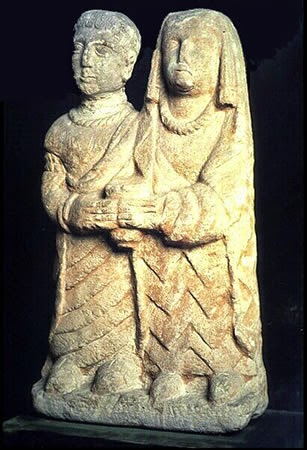
#Doyouknowthat…
As for the religious world of the Iberian culture, we know that the person praying or practicing tries to approach the gods through rites that involve reverence, adoration and gratitude.
In most of them, offerings and sacrifices of more or less nature are made. Both make communication between men and gods possible.
This gesture of Offering a Glass has also been related to the libation ritual of the ancient Mediterranean (performed by Phoenicians, Greeks, Iberians). The libation consisted of a “Liquid Offering” spilled on the ground, fire, at the end of a sacrifice, or on a deceased.
The most representative example of our Iberian Peninsula in terms of vessels and libations, stands out the "Lady of the Galley" in Granada, a Phoenician figure who appreciated in a tomb, of a person of a high rank of the aristocratic and priestly, in the necropolis from Tútugi. It is an anthropomorphic female figure holding an offering tray in her hands, illustrating a libation ritual on a throne flanked by sphinxes. This piece, despite being very prestigious, differs from the others, as we can see how it flows and drains at the same time. This "offering voter" would be part of a funeral outfit.
The Cerro de Santos Sanctuary (Montealegre del Castillo- Albacete) offers the best and most abundant specimens where ex-offerings with vessels of Iberian culture have been found, most of them female figures with outstretched arms; hidden under the cloak; rigid hands holding the offering glass with the fingers of the hands in parallel. Feet almost always apart and legs hidden under dresses.
In the case of the male figures, we can see how the votive offerings carry a bowl with the right hand and with the left hold the edge of the cloak.
A couple's ex-vote has also been found; Although normally these offerings were private, in this case, the man and the woman appear united through the joint offering of the glass.
Due to the quality and quantity of these votive offerings with "offering vessels" we would be talking about the Cerro de Santo sanctuary, as one of the most important places of worship and pilgrimage in the Iberian culture.
These goblet glasses (in the form of a chalice) are represented with a gesture in which they are carefully carried and protected by the votive offerings, apparently these glasses would belong to a very fine tableware, not intended for domestic use but rather for a cultural use and of worship (glasses for offerings).
The "offering of glasses" can have multiple meanings that will depend on the contents of the glass; like milk, mead, wine or water (very common in the Iberian culture); of the material of the offering glass (stone, bronze or terracotta) and the gesture of the votive offer. In the female pieces, it has been observed that the majority present the glass to the gods, but they do not perform the action of pouring the liquid they contained, a gesture representative of the libation. Although this could be defined as a double offering to the gods.
#IstayathomewiththeMARQ
-------------------------back to menu >>
.jpg)
.....
Hello everybody!
Today, I would like to talk about one of the most emblematic sites we have in Alicante, The Illeta dels Banyets, in El Campello.
Its name is based on two main factors. Firstly, it is due to its morphology, since it is a small island, connected by the coast with an artificial isthmus. And, secondly, there are Roman fish farm at the end of the site, regionally known as "Los Baños de la Reina" (Queen’s Baths).
This island, despite being mentioned in the seventeenth century, it will remain intact until Figueras Pacheco, a famous chronicler of Alicante, led the first excavations in the 30'. But it will not be until the 70's when the archaeologist and researcher Enrique Llobregat carried out some archaeological campaigns in order to the preservation of the site and declared as a Public Heritage by the Provincial Council of Alicante since 1999.
Illeta dels Banyets was an important trading port, that is more than five thousand years old. It controlled not only the seaways, but also inland trade. There, it is possible to know three cultures to understand our ancient society. Starting with a Neolithic circular hut and Argaric Culture cisterns, we will reach an Iberian settlement, where the manufacture of wine, olive oil, esparto and ceramics took place. And, finally, we can see from above some fish farms in order to make salted fish.
Finally, this site has activities for students and families, since we have workshops to bring archaeology closer to the little ones and dramatized visits that reveal the life of our ancestors.
I hope this article has helped you to understand a little bit about this unique location and may visit us as soon as possible so, but, not yet, because "I STAY AT HOME".
Lorena Gomis, guide at Illeta dels Banyets.
.....
LA ILLETA AND ITS LOCATION
One of the greatest problems facing to the museum's archaeologists and curators of the Illeta dels Banyets it is about the geomorphological composition of this archaeological site. Numerous studies carried out at this point on El Campello coast show that the relief here has undergone significant changes over the time due the abrupt forms, but also because the presence of certain materials that make it vulnerable to wind, marine erosion and human intervention.
As we can see in the image, the Illeta is composed of three different rock levels. A first layer of calco-sandstone rocks, characterized by a brownish-gray colour; a second group, consisting of very fragile and vulnerable sandstone; a third calcareous crust on rock base.
This type of geological formation promote erosion and causes a great impact into the ancient island. The intermediate level is the most hard-hit affected of all. It is easy to recognise because has a porous texture and yellowish colour. 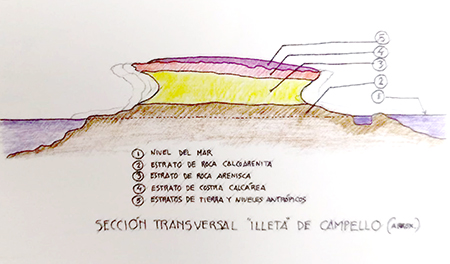
The continuous modifications made by the human hand, in addition to the tasks of the archaeologists, have accelerated this destruction process. There is now no solution to minimize the landslides.
Unfortunately, the Illeta is breaking apart. We must preserve it.
Enjoy the museum at home >>
#Istayathomewithmarq
Anabel. Guide at Illeta dels Banyets
....
Hello everybody,
Today, I want to talk about knowing an archaeological site and their impression after finishing their tour.
Perhaps it is little bit difficult to focus on an only matter, because anyone who wants to visit the site can do it freely or, supported by our explanations as guides. Thus, there is a wide variety of people’s reactions but always in positive.
Turning to substance, many places could get public attention inside this cultural environment, starting with the location. This island, artificially connected to the peninsula, allows to enjoy oneself with unique views of the Mediterranean Sea, as well as understand their importance on a commercial level in the past.
Going on with the most surprising areas of our site, we would get to the garden area. There, flora has been planted, with the role of absorbing salt from sea water in order to avoid any damage in archaeological remains, still unexcavated. Some plants are “cat`s claw”, very useful for making spirits and infusions; or samphire, for the purpose of preventing scurvy, in other words, the lack of vitamin C.
Also, I would like to emphasise the viewpoint, where we can find Roman fish farms. Maybe, by far, this is the most visited place by anyone. They were dug of the the rock in separate compartments with lead doors, allowing water oxygenation where the fish were located. But, from a local perspective, this area is known as “Baños de la Reina” (Queen Baths), due to an Islamic legend.
Finally, as a curious fact, many people are surprised to hear about the recent history of the site. Specifically, the urban project such as restaurants or housing constructions which take place here, causing, in a period, changes in the island. But, thanks to archaeological campaigns headed by Enrique Llobregat, and subsequently, with the value through the Provincial Council of Alicante, this unique and essential enclave was protected.
Keep on reading our blog because "I STAY AT HOME"
Lorena Gomis, guide at Illeta dels Banyets.
Elena Noguera, guía.
....
Hello everyone!
We continue in #yomequedoencasaconelmarq! Today I am going to talk about ceramic production in the Illeta dels Banyets (El Campello). The alfar area of this deposit produced large quantities of ceramic containers that were distributed throughout the different Iberian villages through an intense commercial network. In one of the panels of the Iberian culture room at MARQ dedicated to Iberian ceramics, there is an image of the recreation of the alfar area of the Illeta dels Banyets. Along with this panel, there are an infinity of ceramic typologies from the most important Iberian deposits in the Province of Alicante.
The Illeta dels Banyets is one of the sites that best preserves the structures of the ceramic production kilns in the entire Iberian area of the Province of Alicante. The alfar area is located on the mainland, next to the 18th century watchtower (known as the Torre de la Illeta), so the kiln area for ceramic production is far from what would be the nerve center of the site .
The first publication that talks about the area of the pottery and the ceramic production furnaces of the site is by F. Figueras Pacheco in 1943. A work by Nuria Álvarez has also been published, in which the amphorae of the pottery from El Campello are discussed. regarding those found in the warehouse of temple A of the Illeta. Of course, Manolo Olcina (Technical Director of MARQ) has carried out different excavations and works in relation to the ceramic production areas. At the beginning of the 21st century, works related to ceramic distribution were published, which showed the importance that this enclave must have had as a point of import and export of ceramics in the Iberian Peninsula.
The ceramic production of the kilns of the Illeta dels Banyets was very prolific and through commercial activity a large number of amphoras were distributed throughout the surrounding territory between the 5th century BC. and III B.C. La Illeta not only exported its own ceramic production, but also imported Greek ceramics as indicated by the archaeological findings that have been made at the site. Many ceramic specimens from the Greek sphere found in the Illeta dels Banyets are on display in the Iberian culture room of our museum. Of course, it is necessary to highlight the commercial activity between Greeks and Iberians in these moments before the arrival of the Romans to the peninsular territory.
In conclusion, it should be noted that the Iberian level of occupation of La Illeta has been interpreted as a great coastal emporium, that is, an outstanding place of production and commercial exchange, and that is that trade has been, throughout all its history, one of the hallmarks of the Alicante territory.
Carlos Pérez, guide at MARQ.
....
THE WONDERFULL EXPERIENCIE OF A TOUR GUIDE
Did you know that… When we visit the archaeological Tossal de Manises near Albufereta Beach, La Illeta dels Banyets in El Campello, or the MARQ in the city of Alicante, we can enjoy of a circular route along a predefined circuit.
During the guided tours, visitors can observe our work as tour-guides and follow us in order to understand the most important structures, remains and objects around them.
People can also view informative tables giving general information, which contribute to a better understanding of the geographical location of the area and the reasons why certain structures were built there. Thus, they can assimilate the different phases of the history of the archaeological site. In addition, along these tours, anyone who visits us will be able to enjoy with a little imagination of a more detailed and complete explanation.
In this sense, through our imagination amount and pleasant explanation of the accredited guides and in constant formation, you can see how "a handful of stones or pieces" becoming into something spectacular. In the end, these remains have been part of the history of our city to this day.
Each of these visits are often provided with information leaflets, which can be requested in the information point. For example, we can ask for a map showing the route of the archaeological trail.
Above all, all those who visit the museums of our city, MARQ and the most important archaeological sites, should be predisposed to feel these experiences, history and legends in good company.
Beatriz Bueno, guide at Lucentum.
....
The “Priest’s House” of Illeta dels Banyets
#Doyouknowthat... Thought archaeology we know that Iberian houses usually had one floor. However, the presence of stairs in many sites could indicate us the existence of a second floor or maybe upper terraces. In other spaces have been found basements or semi-basements.
The size of these houses could vary greatly as well the number of rooms and floors. The ground floor should be designed for daily tasks. The upper floor would serve to store products.
In the archaeological site of lleta dels Banyets scientists found a complex house attached to wine press. They detected the remains of a staircase inside an inner courtyard that would lead to a second floor.
The loom was usually used vertically. The two most important objects associated with it are the weights and the counterweight. The counterweight, also know as fusayolas, were small pieces of ceramic or stone with a hole in the centre. They would be used to pass a rod and make it easy to spin. Some of them had decorations or Iberian inscriptions. Loom weights had one or more transverse perforations and served to keep a thread. This activity was essentially female.
Iberian families would probably study the position of the looms to maximize resources. In addition, archaeologists have found rotary mills to grind cereals or make fish flour along with ceramic objects (glasses or bowls).
This space was known as "The Priest house", because diverse perfume burner dedicated to goddess Tanit were discovered inside the building. These findings allow us to deduce that this building belonged to a member of Iberian aristocracy.
Elena Noguera, guide at la Illeta dels Banyets.
....
THE AGE OF BRONZE IN THE IBERIAN PENINSULA
The Bronze Age is a period of Prehistory or Protohistory that extends, depending on the area, between 1700 and 800 BC. It is so named because weapons and utensils began to be made with the alloy of copper and tin, resulting in a harder metal than copper.
The transit between Chalcolithic and Bronze is manifested through signs of crisis that occur during the second half of the 3rd millennium BC. C. and which are, among others:
- Abandonment of settlements and construction of new ones. Los Millares (prehistoric settlement of the Bronze Age) entered into clear decline, confining a small population in the highest part of the fortification.
- Substitution of the collective burials by other individual ones, which happened to be located inside the towns.
- Increased wealth and social differentiation.
The ancient Bronze (2250-1900 BC) is initially found in the south-east of the peninsula: Almería, Murcia, the highlands of Granada and the upper Guadalquivir, areas in which the so-called Argaric culture begins to develop, one of which reached greater relevance in Europe during the Bronze Age.
In the archaeological site of the Illeta dels Banyets, tombs of the Argaica culture have been found, an exceptional exception in this area of Alicante. That shows us clear indications that this culture spread to our lands, despite the fact that archaeological studies tell us that this culture only developed in the south of the peninsula.
All of this proves the existence of a high degree of labor specialization and a complex organization of the distribution of production, together with unequal access to wealth, found in funeral furnishings.
The use of the bell-shaped vase (its name is the consequence of the special characteristics of these vessels or vases) with an inverted bell shape and profusely decorated, as a luxury object and linked to the funerary world, lasts during these initial moments of the Bronze although its use is more frequent in the north than in the south of the peninsula.
#IstayatMARQ
Elena Noguera, guide at Illeta dels Banyets
....
Argaric burials at la Illeta dels Banyets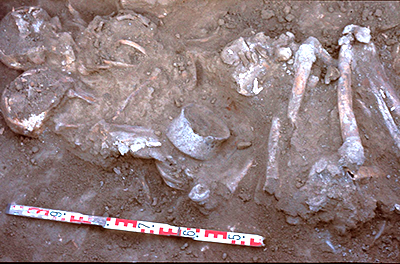
Hello everyone!
On this occasion, I will be talking about one of the most relevant remains of the archaeological site of Illeta. I am referring to the funerary paraphernalia found inside the prehistoric dwellings, as part of the so-called Argar culture, between c. 2200 BC and 1550 BC.
As I have stated previously, this culture was developed in the southeast Iberia, specifically in the southern Alicante, Murcia and Andalusia. Key sectors were the agriculture, farming and metallurgical production. They also developed their own funerary universe, believing in life after death.
In fact, the loss of a loved one was considered an extremely important moment for the community. Dead people were buried under the family house or inside ceramic vessels.
The first pits were located during the excavations carried out in the thirties by Figueras Pacheco. However, around the end of the 20th century, many other surprises appeared. That is particularly the case of approximately twenty burials, simple or double graves, located under the homes. These discoveries show us the existence of a prototype a funerary pieces, metal utensils, ornaments and ceramic vessels with offerings inside.
In addition, two skeletons (an old woman and a child) were documented during the recent archaeological works. This tomb included two ceramic pieces, one dagger and four ivory buttons, which maybe symbolized the social status of the deceased.
On the other hand, inside the prehistory room of the MARQ, we have a unique recreation of an Argaric burial found in the archaeological site of El Tabayá. This place shares features with the remains of the Illeta, which has been interpreted as the most northerly point of this ancient culture.
#Istayatmarq
Anabel Castro, guide at MARQ
....
The Identical twins of Illeta dels Banyets
When we think about the museum and its archaeological sites, some of the most important pieces come to our mind. However, due to the conservation measures it is not always possible see them in the same place where they were found at first. Owing to different natural and human factors, many of these objects cannot be exposed in the museum cases. One false move and the whole thing could crash into many pieces!
This is the case of the two large containers or ´grain silos’ found inside of the cabin 3, located in the oldest part of the Illeta.
Both containers were made of uncooked clay and stood directly on the floor of the cabin. Archaeologists found several fragments of both on the excavated area. Later, a team of restorers from MARQ joined them like a puzzle. Probably, it should be used to store food.
Currently, in the same place there are two replicas as "identical twins" of the originals.
Finally, we could consider the archaeological sites of Alicante of a sort of extension of the museum itself, but also an essential complement to have a better understanding of the past times through the objects.
#Istayatmarq
Anabel Castro, guide at Illeta dels Banyets
....
GARUM, THE ROMAN SAUCE
#Doyouknowthat... Garum was a highly appreciated product by the Romans, whose manufacture was made, among other places on the Mediterranean coast, in the fish farms of la Illeta dels Banyets in Campello. The garum, a sauce or fish paste, highly coveted during this time.
Garum has its origin in III B.C. in Mesopotamia, where it was known under the name siqqu or shippu. This condiment, with an extremely strong flavor and aroma, will be used throughout the Mediterranean area during Antiquity and part of the Middle Ages, when its production and consumption begin to disappear. Currently, certain variations of this sauce are known in places like Vietnam or Laos, although with different names.
But how does that product reach our coasts? This moment takes place in the first millennium B.C. when both the Greeks and the Phoenicians begin their commercial expansion through the Mediterranean, with the Phoenicians themselves introducing the technique of salt exploitation in the Iberian Peninsula, used for salting and for making fish sauce, known as gariflos.
This trade generated that salting, such as Iberian fish sauces, were the most sold and spread for nearly eight centuries, throughout the Mediterranean strip.
Thus, during the Roman settlement on our coasts, these products will be acquired in their diet, making them part of their industrial routine. There were various garum production centers, but it will be in Hispania where the best garum of the Empire will be developed.
The elaboration process was by mixing various parts of the fish such as the liver or intestines with salt. Some of the fish used for its elaboration were mackerel, sardines or tuna, among others. So regarding salt, it allowed to enhance the flavor in addition to preventing any type of putrefaction, so that a product could be obtained to be preserved for long periods of time.
Said mixture was normally made in a wooden or terracotta container and left to ferment in the sun for months. The fermentation period could range from a few days to many months depending on the type and size of the pieces of fish used. The final result was a kind of liquid that, before being placed in amphorae for transport and storage, was filtered, leaving a dry residue that did not dissolve in the sauce, similar to the anchovy paste that we can know today. This residue could also be used for consumption and commerce, which was washed with a salty water solution repeatedly, obtaining a garum-like sauce called liquamen.
If we transfer these ideas to the current era, we could point out that the liquamen would be the fish sauce used by cooks as a dressing during the preparation of food, while garum could be compared to soy sauce, used as a table condiment. Although, over time, both terms were considered synonyms without any distinction.
Garum was added to all kinds of food as a substitute for salt itself, because, as a sauce it was, it provided moisture to food in addition to certain properties such as minerals, proteins or vitamins.
But, this product, not only had a nutritional or culinary function, but also, according to certain studies, was used in medicine or cosmetics. Within the field of medicine it turned out to be a good remedy for ulcers or constipation, while in cosmetics it was used to remove freckles or hair itself.
Despite its commercial importance, this product will reach its decline in the final moments of the Roman imperial era, due to different causes that I will now discuss. Among other reasons, its disappearance is attributed to the introduction of heavy taxes on salt during the fall of the Roman Empire, which, perhaps, hindered the enormous production and therefore its continued increase in price, and therefore its consumption is reduced. Furthermore, once the ports were no longer protected by the Romans, the transportation and distribution of goods by sea became more complicated and insecure.
Lorena Gomis, guide at MARQ
....
BELIEFS IN THE IBERIAN CONTESTANIA
#Didyouknow...We know very little about the Iberian gods, although many are represented as fantastic mythological animals. One of them is the taps.
The griffin is a mythological creature, the front of which is that of a giant eagle, with golden feathers, a sharp beak and powerful claws. The back is that of a lion, with yellow fur, muscular legs and a long tail. The Eagle on sky and the Lion on earth.
Iberian warriors faced them past the gates of death, according to Iberian mythology. Taps appear in performances, in graves and in sacred places to guard and care.
It is believed that it may be representing the will or destiny of the warrior, the one that leads to the completion of the tests. He is the protector and the guide, but also the implacable judge.
#IstayathomewiththeMARQ
Elena Noguera, guide at la Illeta dels Banyets.
....
ILLETA, AN ACCESSIBLE ARCHEOLOGICAL SITE
#Doyouknowthat...The archaeological site of Illeta dels Banyets remains open all year and is accessible for people with reduced mobility. It also includes panels in Braille and audioguides.
Additionally, the Department of Didactics of MARQ designs itineraries, visits and other services for persons with intellectual disabilities.
For this reason, this place could be considered entirely accessible through the senses in conformity with the precepts and rules of the new museography.
#Istayathomewithmarq
Anabel Castro, guide at Illeta dels Banyets.
....
#didyouknow... We have no information about the furniture found inside the Roman Baths of Illeta. However, there were a number of articles made of wood such as seats, stools and folding chairs.
Braziers were into public and private spaces as we can confirm through parallels with others archaeological sites.
On the other hand, it is also notable that there were oil lamps inside rooms. Many of these pieces travelled throughout the Mediterranean Sea in the hold of the ships, and were made of ceramic or metal.
Indeed, a significant portion of the oil traded was often used to illuminate, but also other greasy fuels have been documented.
Enjoy the museum at home
#Istayathomewithmarq
Anabel Castro, guide from MARQ at archeological sites.
....
#didyouknow... The Illeta site has not only been a shooting location for different films, it is also the meeting point for many photographers and photography fans in the province. Thus, it is not uncommon to see wedding couples who choose the vicinity of the site to remember their great day. The most assiduous fishermen say that some of them said "yes, I want" in the Baños de la Reina.
It is also a place of meditation for some residents and visitors, who seek peace and quiet in this privileged environment.
For this reason, Illeta's historical and natural importance adds to its emotional value.
Enjoy the museum at home
#I stay at home
Anabel Castro, guide from MARQ at archeological sites
....
MUSEALIZATION
#Didyouknowthat...The musealization of archaeological site is a fairly elaborate work, since it consists of creating an space in which to excavate, study its remains, conserve the heritage prepare to be able to show it to visitors and it will be accompanied by circuit with specific information or qualified personnel to explained it and that it be understood correctly.
Several excavations campaigns were carried out at the Illeta archaeological site, which prevented this place from being spoiled.
The most outstanding excavations campaigns were led by Figueras Pacheco, one was develop between 1931 and 1933, and the second in 1935.
It was in 1999 when the Alicante council dediced to acquire this place and continue with the excavations, study and the conservation of this place.
Enjoy the museum from home >> https://bit.ly/2vTfJek
Anabel Castro, guide at Illeta dels Banyets.
....
IBERIAN HOUSES
Thought archaeology we know that Iberian houses usually had one floor. However, the presence of stairs in many sites could indicate us the existence of a second floor or maybe upper terraces. In other spaces have been found basements or semi-basements.
The size of these houses could vary greatly as well the number of rooms and floors. The ground floor should be designed for daily tasks. The upper floor would serve to store products.
In the archaeological site of lleta dels Banyets scientists found a complex house attached to wine press. They detected the remains of a staircase inside an inner courtyard that would lead to a second floor.
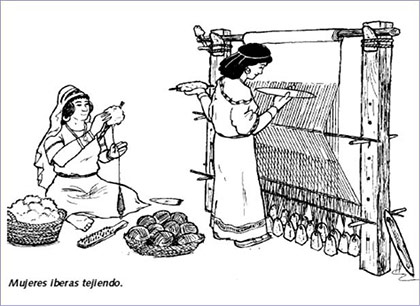
The loom was usually used vertically. The two most important objects associated with it are the weights and the counterweight. The counterweight, also know as fusayolas, were small pieces of ceramic or stone with a hole in the centre. They would be used to pass a rod and make it easy to spin. Some of them had decorations or Iberian inscriptions. Loom weights had one or more transverse perforations and served to keep a thread. This activity was essentially female.
Iberian families would probably study the position of the looms to maximize resources. In addition, archaeologists have found rotary mills to grind cereals or make fish flour along with ceramic objects (glasses or bowls).
This space was known as "The Priest house", because diverse perfume burner dedicated to goddess Tanit were discovered inside the building. These findings allow us to deduce that this building belonged to a member of Iberian aristocracy.
Enjoy the museum at home
#Istayathomewithmarq
Elena Noguera, Illeta dels Banyets Guide.
...
#Didyouknowthat... Contestania is the name given by ancient sources (Estrabón, Plinio y Ptolomeo), to this region.
Contestans was one of the Iberian towns with the richest and most varied culture on the Peninsula, during the 6th and the first centuries b.C.in Alicante.
They lived organized in groups dedicated to grazing and agriculture. The basis of social organization was the gentilitas, a group formed by a group of families united by a kinship, religious, and legal bond. The forms of government varied from one tribes to another (aristocratic senates,leaders).
The social classes were two (commoners and nobles) and slaves. Society was already strongly hierarchical. Whatever the representative, he acted as military chief and sole representative authority.
There was a noble class made up of large landowners and the farmers class.
The warrior and noble caste was the one with the most prestige and power. Apart from that he had weapons and horses. Another of the castes was thath of the artisans, appreciated because from them came the clothes with which they dressed, those who made footwear, those who modeled crosks in which to kept food and water and above all, for being those who custom- made weapons and armors with which they were distinguished from the other lower castes.
Finally there was the “pueblo llano”, people who were engaged in the hardest jobs.
Elena Noguera, guide at the archeological site of Illeta dels Banyets
...
#didyouknow…Since the consolidation and restoration works began, the site has continued to be excavated and studied by the MARQ team of archaeologists and conservators.
The tasks carried out annually by the Illeta are called archaeological campaigns. They participate from technicians to students in training. Thanks to them it has been possible to document new spaces that were not known to date (productive, storage, religious or habitat). Among the sectors pending study, is the large landscaped lot that extends to the east.
During the past year, the area next to the block was partially excavated, where we see the only known home in the site (for now). The rescued materials are being analyzed in the museum's warehouses and laboratories, and soon we will have the first results.
Be sure to follow us if you want to learn a little more.
#IstayatHomewiththeMARQ
Anabel Castro, guide from MARQ at the archeological sites.
.....
#Didyouknowthat… the colored gravels distributed throughout the site tell us what function each space had?
The code is the following:
• Yellow for the areas to be excavated.
• Brown for the production units of the Iberian period.
• Red for domestic uses.
• Yellow and red for the two temples.
• Blue for structures intended to store liquids and funnel water.
• Black for graves.
Here is a curious fact: Did you know that the blue gravel of the winery indicated that wine was stored there?
Enjoy the museum at home >> https://cut.ly/WtmQSIK
#Istayathome
Anabel Castro, guide at archeological sites.
-------------------------back to menu >>
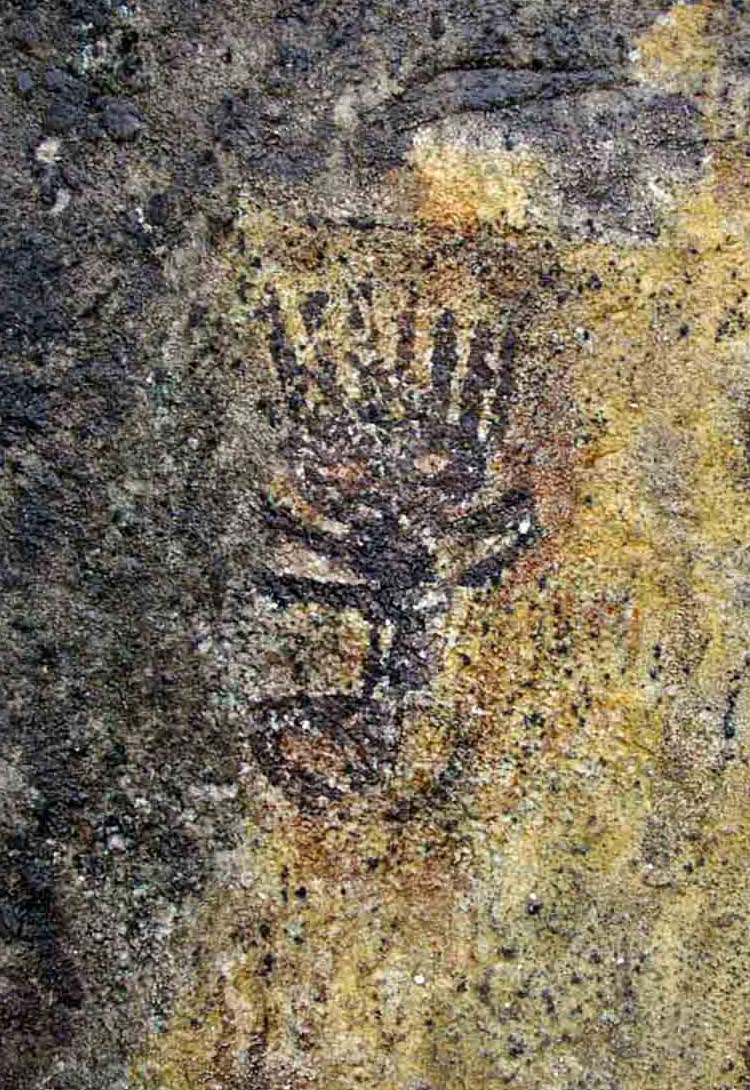
Another interesting site in the province of Alicante is Abric II in Barranc dels Garrofers, where a human figure with a straight body and arms in a handle was represented. The large head bears a seven-feather plume; underneath, two parallel, curved lines are identified by ornaments or exaggerated facial tattoos. This singular image, unique in schematic art, has been adopted by the MARQ as a mascot for its educational workshops under the name of Llumiq.
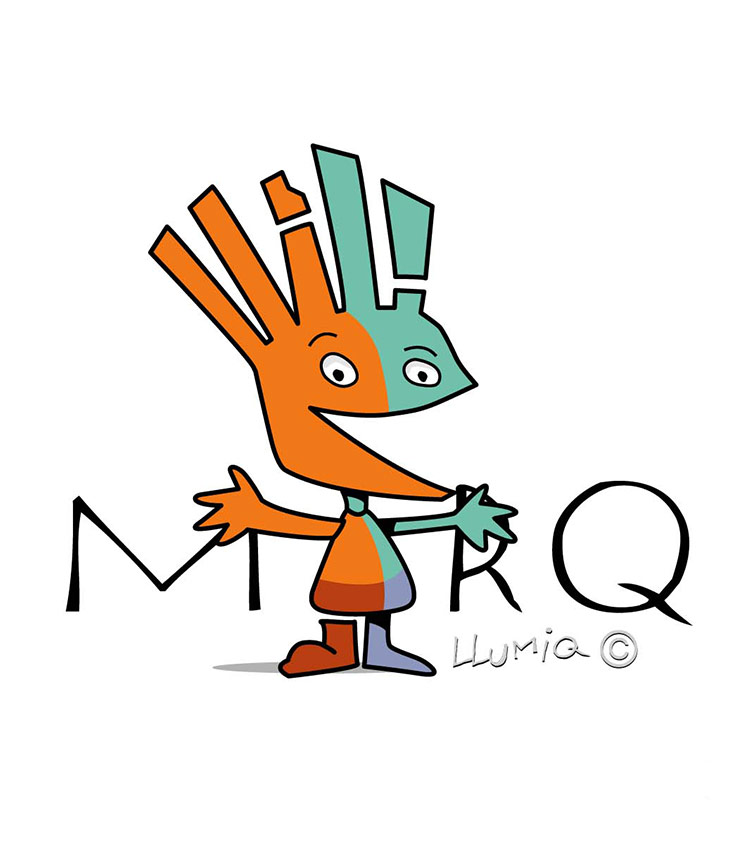
There is a clear link between many sites with this type of rock art and different megalithic monuments. Personally, I find very interesting the example of the dolmen of Menga that, instead of facing the rising Sun (like most of the dolmens), looks towards a place where a mountain rises surrounded by mystery: The Peña de los Enamorados.
The monument is located exactly where the mountain takes the form of a giant human profile, a place where cave paintings have also been found. It is clear that there is a symbolic link between all these spaces, creating a sacred stage that was probably used to perform all kinds of rituals and to bring together, at prominent moments, the inhabitants of this incredible environment.
Well friends, that's all for today, but we will continue to offer you information about this very interesting exhibition.
Mª Paz Gadea, guide at MARQ.
-------------------------back to menu >>
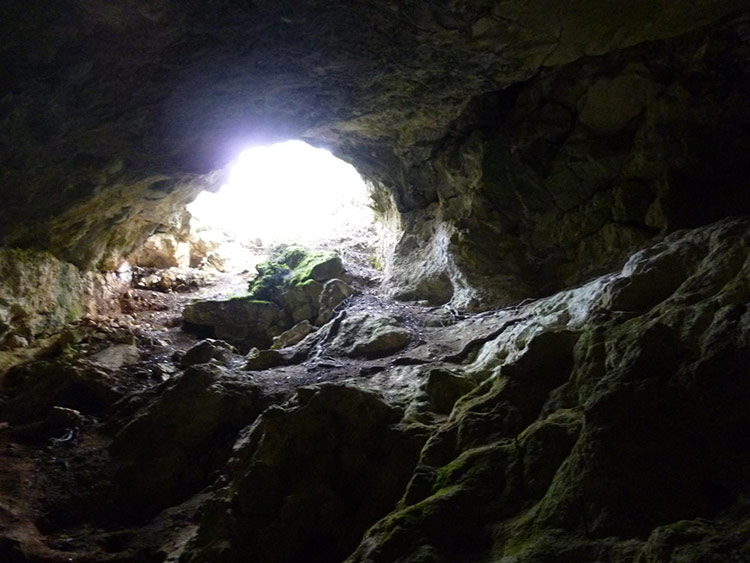
Port Guia 0604 from MARQ Arqueológico de Alicante on Vimeo.
-------------------------volver al menú >>
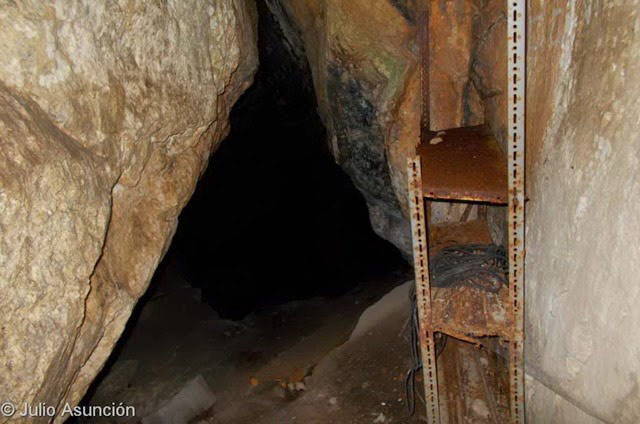
Port guia 1304 from MARQ Arqueológico de Alicante on Vimeo.
......
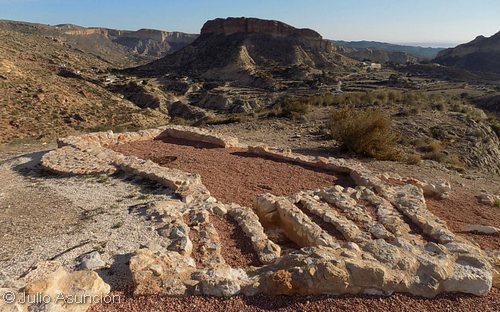
Hello everyone!
Today in #StayathomewiththeMARQ I am going to talk about the importance of the Peña Negra site (Crevillente, Alicante) in the study of the final moments of Prehistory in our territory and about some of the pieces that have been found in it and that currently are on display in the MARQ Prehistory Room.
Peña Negra site is located in the Sierra de Crevillente, in the Bajo Vinalopó region. It is one of the most important sites in our territory by extension and by the value of the archaeological remains found. Chronologically, it is located in the transit between the Bronze Age and Iron I, also known as the orientalizing period (S. IX – VII BC) since at this time is when the Phoenicians from the Eastern Mediterranean are settling on the Levantine coasts of the peninsular territory and they are beginning to trade with the indigenous populations of the area, such as, for example, the people of this town located in the northern part of the Crevillent territory. In a chronological level and as a summary, we are in that intermediate period of transition between Prehistory and History that receives the name of Protohistory, key in the formation of Iberian culture as we will comment later in the final part of the writing.
The settlement was a large urban metal-producing center that, in addition, had a great commercial activity as the archaeological findings indicate. The city was walled and had a highly hierarchical and perfectly organized society. The Phoenician colonizers settled in the southern coastal area of the Province of Alicante, soon settled in this metal-producing city to fulfill their commercial objectives. Probably in Peña Negra large commercial transactions were carried out between autochthonous and Phoenician, that is why luxury oriental articles and items have been found surely brought by the Phoenicians from the Eastern Mediterranean to these lands.Among the most striking and exotic objects found in the site, we can highlight rings, necklaces, silver, Egyptian scarab and a spectacular gold foil decorated by the embossing technique that highlights this intense commercial activity among the Phoenicians and the indigenous populations of our lands. Most of these objects are exposed in the final area of the MARQ Prehistory room, where this transition between the orientalizing stage that marks the end of Prehistory and the formation of Iberian culture that will mark the beginning of the Ancient Age.
From these commercial and cultural exchanges between Phoenicians and indigenous populations, the Iberian culture will emerge around the 6th century BC, which will be nourished in many aspects (social, artistic, religious) of the colonizing cultures of our territory such as the Phoenician and later the Greek. It is for all this that the Peña Negra site offers us, through archeology, a perfect x-ray of those moments of transition between the final stage of Prehistory and the emergence of Iberian culture in the territory of the current Province of Alicante, being one of the most important and best known commercial protohistoric settlements from the archaeological point of view in Alicante territory.
Carlos Pérez , guide at MARQ
-------------------------back to menu >>
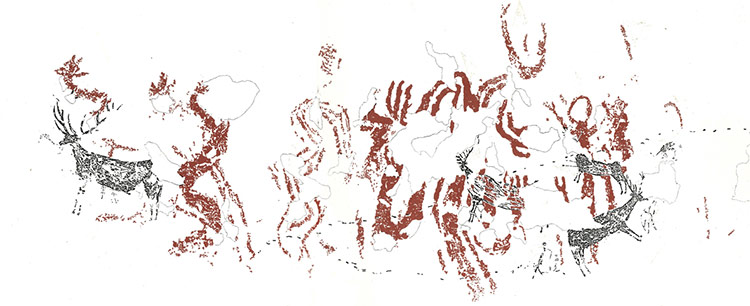
Hello, frieds!
Today I want to talk about the archeological site of La Sarga, in Alcoy.
On August 19, 1951, several members of Alcoy Hiking Center, archeology fans, visited a place distinguished by its archaeological wealth, where years ago several burials had been located: the Cova Foradada. When they arrived, they quickly realized the grandeur of the environment and the existence of large rock shelters on the other side of the ravine, which they decided to approach to be able to see them up close. Upon arrival, a scream flooded the place... EUREKAAAAAA!; They had just made one of the most outstanding archaeological finds in the province of Alicante, an exceptional set of cave paintings.
The archaeological site of La Sarga (Alcoy) constitutes a unique set of parietal art, considered by researchers as an exceptional enclave for its good state of conservation, for the large number and diversity of images it collects and for the privileged environment in which it is located. The three Neolithic artistic styles identified in the Mediterranean Arc are represented in it: Macroschematic, Levantine and Schematic, which makes this place the most complete and complex Neolithic "sanctuary" on the eastern facade of the Iberian Peninsula, where several generations of farmers and ranchers left testimony to their ideas, beliefs and understanding of the world.
For all these reasons, the site was included in 1998 by UNESCO in the list of World Heritage, as part of the great group of Rock Art of the Mediterranean Arch of the Iberian Peninsula, which includes 705 sets, of which 305 are located in the Valencian Community.
Among the three shelters that make up the archaeological site, perhaps the most prominent and paradigmatic is Abrigo I, by providing valuable information on the chronological sequence of the different pictorial manifestations that take place throughout the Neolithic period in Alicante.
Specifically, in this shelter we can differentiate between macroschematic motifs and others typical of Levantine Art. The superposition of the latter on the former allows us to confirm the older age of the macroschematic horizon.
As for the macroschematic motifs of Abrigo I, the serpentine ones stand out -sinuous motifs that rise upwards-, as well as the representation of a "praying man" -human figure with the circular head, the raised arms and the indicated fingers-. Apart from the prayer represented in the Neolithic sanctuary of Pla de Petracos (Castell de Castells), there is a movable parallel that has confirmed the dating of Macro-schematic Art in the Old Neolithic: the vase of the Cova de l'Or (Beniarrés), with a chronology of between 5,600 and 5,000 BC, so the paintings must be just as old. Therefore, we are faced with artistic manifestations that allow us to get closer to the mentality of those first communities of farmers and ranchers who settled in our territory more than 7,000 years ago. In the prayer of the glass of the Cova de l'Or the vulva was indicated by the impression on the natis clay of a cockle shell (cardial ceramics), which makes us think that it is the representation of a woman, perhaps a goddess of fertility, divinity that presides over the pantheon in different Neolithic Mediterranean cultures, whose worship seems to be directly related to fertility rituals of the land, animals and women.
Time later, we cannot specify how much although we are probably talking about several centuries, another group arrived at that place that had already been used by their ancestors as a sanctuary, to paint other completely different images, much more realistic and naturalistic, that show us more mundane scenes related to his daily life: scenes of hunting, gathering, with children...; we are talking about Levantine Art. In Abrigo I, they depicted a hunting scene in which several deer wounded by arrows and bleeding, appearing to be stalked by a group of hunters who follow the trail of blood, carrying bow and arrows, and wearing a feather plume over the head. These are also Neolithic paintings, related to communities of farmers and ranchers in the area, but subsequent to those that made the macroschematic motifs. It is curious to see how this place continued to be revered as a sacred place generation after generation.
With all this, we can conclude by firmly affirming the symbolic importance, not only religious but also social that this singular place had for several generations among different Neolithic groups in the environment. A great Neolithic sanctuary, a place of cohesion and social aggregation, to which they regularly went to
celebrate religious activities but also to exchange knowledge, to find a partner and avoid problems derived from consanguinity, to carry out commercial exchanges... Definitely and according to the words of UNESCO, La Sarga must be understood as "the largest group of rock art that we can find in Europe", which "offers an exceptional portrait of the life of man in an essential period of cultural evolution human”.
Mª Paz Gadea, guide at MARQ
....
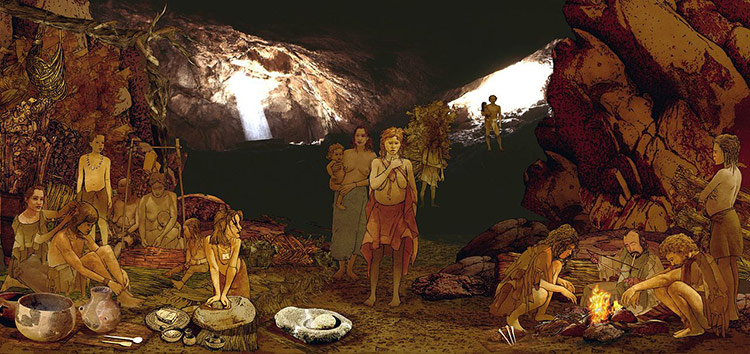
Hello everybody!
I would like to talk about Cova de l’Or in this post in #stayathomewithMARQ. This site is located in a village called Beniarrés, here in Alicante, and one of the most Ancient Neolithic examples (VI - V millennium BC) from the eastern part of Spain, due to its archaeological relevance, the richness and variety of archaeological objects documented there. This cave has a close relationship with our museum since MARQ has carried out several excavation campaigns led by Jorge Soler (Curator and archaeologist of Prehistory in MARQ). Nowadays, most of the objects are shown in the Prehistory Museum of Valencia, and to a lesser extent in MARQ and the Municipal Archaeological Museum Camil Visedo Moltó in Alcoy.
The cave was discovered by Rafael Pardo Ballester in the 30s of the last century. Among the numerous archaeological remains, it is important to highlight the bone spoons, tools in polished stone, personal ornaments, pottery, hand grinders made of stone, charred cereals and domestic animals that perfectly assure agricultural and livestock practices of people who lived in the Serpis Valley. Archaeological researches have revealed the first farmers and breeders occupied the Mediterranean facade around the 6th millennium BC, surely coming from the Middle East as indicated by the latest research and interpretations about the spread of the Neolithic age.
One of the most extraordinary aspects is the large number of ceramics found with cardium printed decoration. This technique consists of making decorative motifs on the pottery surface when is still unfired. These motifs were made with the edge of the cardium serrated shell (cockle). The origin of this pottery is documented in the Middle East (coasts of Lebanon and Syria). From this Eastern Mediterranean area, cardium ceramics technique spread throughout the Mediterranean, across the Italian Peninsula, South of France and east coast of the Iberian Peninsula. This is a long and complex cultural dissemination process that began at the eastern level and reached the western part of the European continent. Another crucial aspect of this society was the advanced bone industry, visible in the objects made of this material. In Cova de l' Or they have been documented from spoons to bone beads with a high degree of sophistication and meticulous perfection.(1).png)
The amazing number of pieces and the exceptionality of the site have given rise to many interpretations of its functionality. The most probable proposal (according to research) is its use as a place of social significance, in addition, it would have a space reserved to store the cereal surplus for people who inhabited near the cave.
In conclusion, the Cova de l' Or is an Ancient Neolithic emblematic site in Spain, whose cavity took part in first agricultural and livestock communities’ development in the Alicante.
Carlos Pérez Soler, Guide at MARQ
-------------------------Back to menu >>
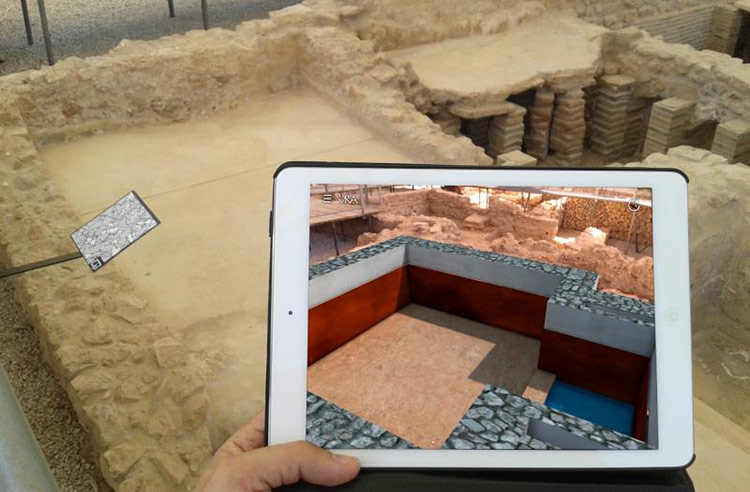
PICTURE: http://comunitatvalenciana.com/
Hello everyone!
We’re still talking about archeology and we’re still talking about our archaeological heritage.
Today I’m going to tell you about the Albir Roman site (Alfàs del Pi, Alicante). At the end of the Roman period room of the MARQ, we can find two recreations of burials (an adult buried on tiles and a child buried inside an amphora cut in half of African origin), several liturgical jars and a pair of suns of Roman sandals (caligae) that were found in the area of the site’s necropolis.
This settlement is a part of a large archaeological site from the late Roman Empire period (IV AC– V AC). The site was known in the early 80s of the last century and consists of a production Villa, the thermal baths linked to the villa and an extensive necropolis in which a private mausoleum stands out where the domini’s family (Villa’s owner) would be buried. This mausoleum is a very unique building within the Roman funerary architecture of our lands, there being only one similar example in the Camí del Molí De Frares (Orriols, Valencia). The study of the necropolis of this site gives us a lot of information about the funeral customs of the final stage of the Roman Empire, at which time there was already a transition between the Roman and Christian funeral customs.
In the excavations carried out in 2010, the project to enhance the town’s hot springs was carried out. The Villa Romana de l’Albir opened its doors in the spring of 2011, after the recovery and enhancement work of the site carried out by the City of l’Alfàs del Pi and the University of Alicante.
The environment which the site is located make it an enclave that enhances and energizes tourism and culture in the municipality. Thanks to the wide variety of didactic resources of the site (3D reconstructions, virtual guide with a augmented reality, models, panels), the visitor can learn how the baths of a Roman Villa in the low-imperial era worked.
Currently the site is still in the process of excavation, so it isn’t ruled out that in the future new dependencies of the town will be included in the museum project. The Roman town of Albir is one of the most important sites from the Roman period in the entire Province of Alicante, being a key settlement for the study of the Roman rural population of our lands. Thanks to the large set of trousseau that we have exposed in the MARQ showcases from this site, we can offer a bit of rural history in Roman times of this beautiful town in the Marina Baixa.
Carlos Pérez Soler, guide at MARQ.
-------------------------Back to menu >>
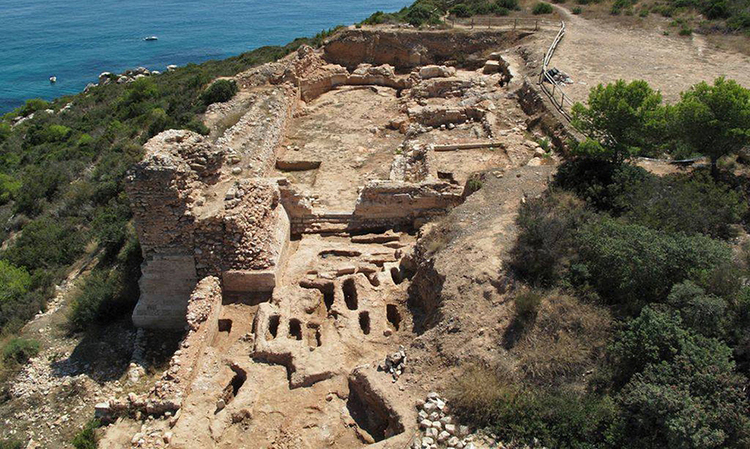
IMAGEN: http://www.calpe.es/ver/206/la-pobla-d-ifac.html
Hello everyone!
In today's article I am going to tell you about the Pobla Medieval de Ifach (Calpe) and the exceptional gothic capital that was found in the 2016 excavation campaigns led by José Luis Menéndez Fueyo (MARQ Exhibition Technician and Archaeologist - Director of the Pobla de Ifach). This gothic capital was temporarily exposed in the main lobby of the MARQ during 2017. >> More info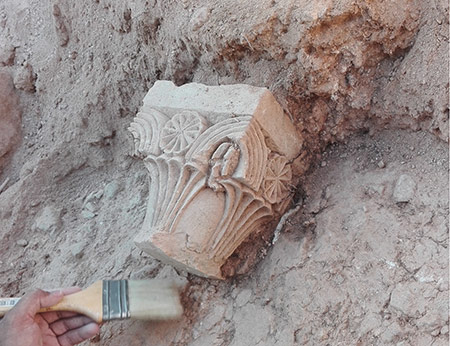
La Pobla de Ifach was raised as an urban settlement at the end of the 13th century on the initiative of the then King of the Crown of Aragon Pere III. A few years later, it will be the Admiral of the Crown of Aragon Roger de Llúria, who receives the royal privilege (commissioned by King Jaume II) to populate this territory with christian people from the surrounding rural villages. Roger de Llúria and, later, his second wife, Saurinad’Entença were in charge of administering the territory and building the different parts of this urban enclave with a defensive character located in the Peñón de Ifach (rocky tomb in front of the current town of Calpe). This settlement was partially destroyed in the middle of the Castilian-Aragonese conflict (1359) and, later (around 1400), the enclave was abandoned.
As mentioned previously, in the 2016 summer campaigns, the research team led by José Luis Menéndez Fueyo discovered a gothic palm capital that would be located in one of the windows of the two-story building dedicated to the feudal power that housed to the power and administration of the Casa de Llúria, named by the MARQ excavation team as DomusLlúria. This two-story building would also have a domestic and accommodation function for the troops on its lower level. Rose capitals with palms are common in Gothic constructions linked to the feudal power of the Crown of Aragon between the 13th, 14th and 15th centuries. This type of capitals have been documented in frequent gothic constructions in present-day Catalonia (mainly Girona and Barcelona), Valencia, Mallorca and, as we have already commented previously, at the DomusLúria of Ifach in Calpe, the latter being the first and only finding of this type, in the lands of the current Alicante Province.
The discovery and study of the Ifach capital is another piece in the constant research study carried out by the MARQ excavation team in La Pobla, a unique and genuine settlement that is framed within the process of consolidation of the Kingdom of Valencia in the late from the 13th century.
Carlos Pérez Soler. Guide at MARQ.
-------------------------Back to menu >>
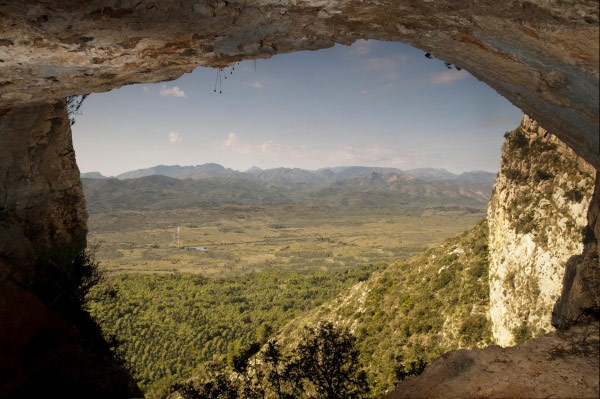
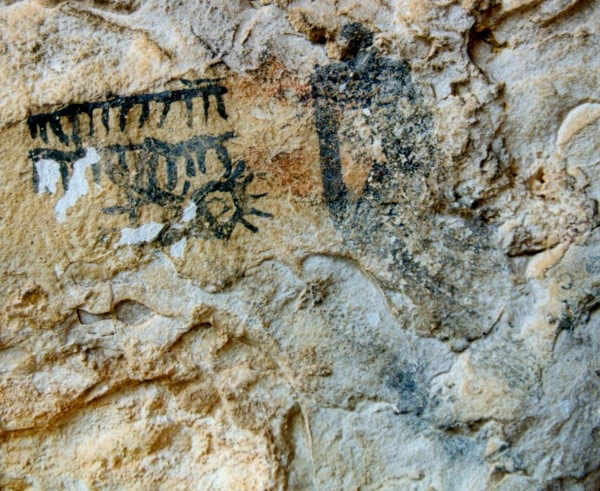
Hello everyone!
Today in #StayathomewiththeMARQ I am going to tell you about Cova del Barranco del Migdia, a small natural cavity found in Montgó (Marina Alta). In 2013, the MARQ recovered through an exhibition the most important works and findings made in this prehistoric cave between 2009 and 2012. In this article, I will talk about the characteristics of the cavity, the archaeological elements found, and the paintings rock paintings that have been documented inside this.
The Cova del Barranc del Migdia is at a certain height, so its access must be made by climbing 20 or 30 meters. Its discovery was fortuitous and relatively recent since it was discovered in 1989. Thanks to the exceptional conditions of conservation of the cave, we are facing one of the most important prehistoric sites on our lands.
The cave was used as a burial place by the inhabitants of this area throughout the 3rd millennium B.C. (Copper Age). Later it was abandoned until in the III - IV centuries of our era it was used as a place of occasional refuge for the Romans who practiced grazing in these lands. Material remains associated with the middle Ages have also been documented, but there was no longer a continuous use of the cave in these times.
Regarding its funerary use, the cave was used as a place of collective burials that could indicate certain family ties or belonging to the same clan. Regarding archaeological materials, innumerable trousseau items have been documented that accompanied the deceased in the graves. The most abundant archaeological materials are arrows and flint plates, although polished stone instruments, ceramics have also been documented, and some metal object. In the excavations carried out inside the cavity, remains of burned wood have been recovered, these elements possibly came from fires that were carried out in the cave to light up while burials were made.
Another important aspect to note is that in the deepest and most inaccessible part of the cavity there are a series of cave paintings made in red and black that belong to the schematic style, surely made in the late Neolithic and early Copper Age. There is also a zigzag incised motif on one of the sections at the end of the cavity. Possibly these paintings would have a religious meaning for these prehistoric societies, although it is difficult to draw a clear conclusion because most of the motifs are abstract representations, having an unknown meaning for us.
In short, we are facing one of the best examples of a prehistoric cave used as a burial place and cave art sanctuary. Cova del Barranc del Migdia is one of the few cases in which the prehistoric funerary deposit has been preserved unchanged and the cave paintings documented inside the cavity are associated with the same archaeological context of the burials.
Carlos Pérez, guía del MARQ
-------------------------Back to menu >>
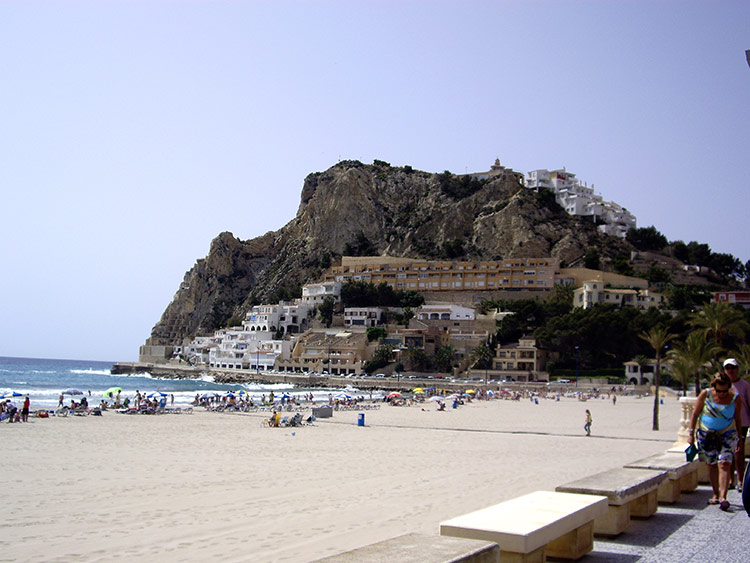
THE IBERIAN ARCHEOLOGICAL SITE OF TOSSAL DE LA CALA
Hello, dear friends;
The Tossal of the Cala is an Iberian chronological site, an oppidum or fortified town with a period of occupation located between the 4th and 1st centuries BC, which was chosen by these people as a place of habitat and a point of refuge for navigation, due to its strategic position. In this sense, the site stands in a privileged location, specifically on a promontory located in the Finestrat or Morales cove, flanked by the sea and by the mouth of the Cala ravine, which was a first-rate communication channel. Towards the interior, where both the products that arrived by sea and those of an agricultural nature from the mountains of the interior used to transit.
Unfortunately, today the site is practically invisible, due to the voracious real estate speculation carried out in the area, mainly from the 60s and 70s of the last century, which caused it to be completely surrounded by buildings and to be mutilated, since much of the deposit has disappeared. In addition, it was completely disconnected from its reason for being, the sea, making it very difficult to obtain an objective and general vision of the occupation and function of this enclave in the past. In addition, it was completely disconnected from its reason for being, the sea, making it very difficult to obtain an objective and general vision of the occupation and function of this enclave in the past.
The settlement was created based on an organized urban plot, where the houses were arranged following the contour lines, by creating terraces at different heights. Access to it was made through an L-shaped entrance located on one of the sides of the powerful wall, one meter thick, that surrounded and protected the settlement. Most of the documented homes consisted of two rooms and it seems that they had a second floor, given the recurring appearance of remains of stairs inside them.
All of them were built by creating a stone plinth, on which adobe walls stood up, made of characteristic greenish clays; the roof was made up of logs and branches interlocked with mud, and the floors were made by means of rammed earth paving.
Much of the archaeological remains that were found during the different excavation campaigns are currently deposited in the MARQ: metal objects, ceramic containers, terracotta figures… The analysis and study of these materials provides invaluable information that helps us better understand what their day-to-day life was like, what their economy was based on, as well as different aspects related to their spiritual and funeral world.
Among the different objects recovered and exhibited in the MARQ, a large iron saw stands out, which would most likely be used by two individuals, each located at one end, in order to cut trees, perhaps for the manufacture of boats, given the number of nails that have been found and of leads that possibly functioned as weight in fishing nets. Hooks, shuttles or needles for nets also appeared that, again, refer us to the idea of the existence of fishermen in the place and that link this site with a deep seafaring vocation.
If you want to know more about this site, I recommend the book "The Iberian site of The Tossal of the Cala", which can be found in the publications section of our website.
https://www.marqalicante.com/Publicaciones/es/YACIMIENTO-IBERICO-DE-EL-TOSSAL-DE-LA-CALA-Nuevo-estudio-de-los-materiales-depositados-en-el-MARQ-correspondientes- to-the-excavations-of-Jose-Belda-and-Miquel-Tarradell-P84.html
Regards.
Mª Paz Gadea, guide at MARQ.
-------------------------Back to menu >>


Localización | Horarios | Tarifas | Mapa web | Política de privacidad
SEDE ELECTRÓNICA | info@marqalicante.com | Tlf.: 965 149 000

Página diseñada y realizada por
CREHAZ
COMUNICACIÓN Y TECNOLOGÍ